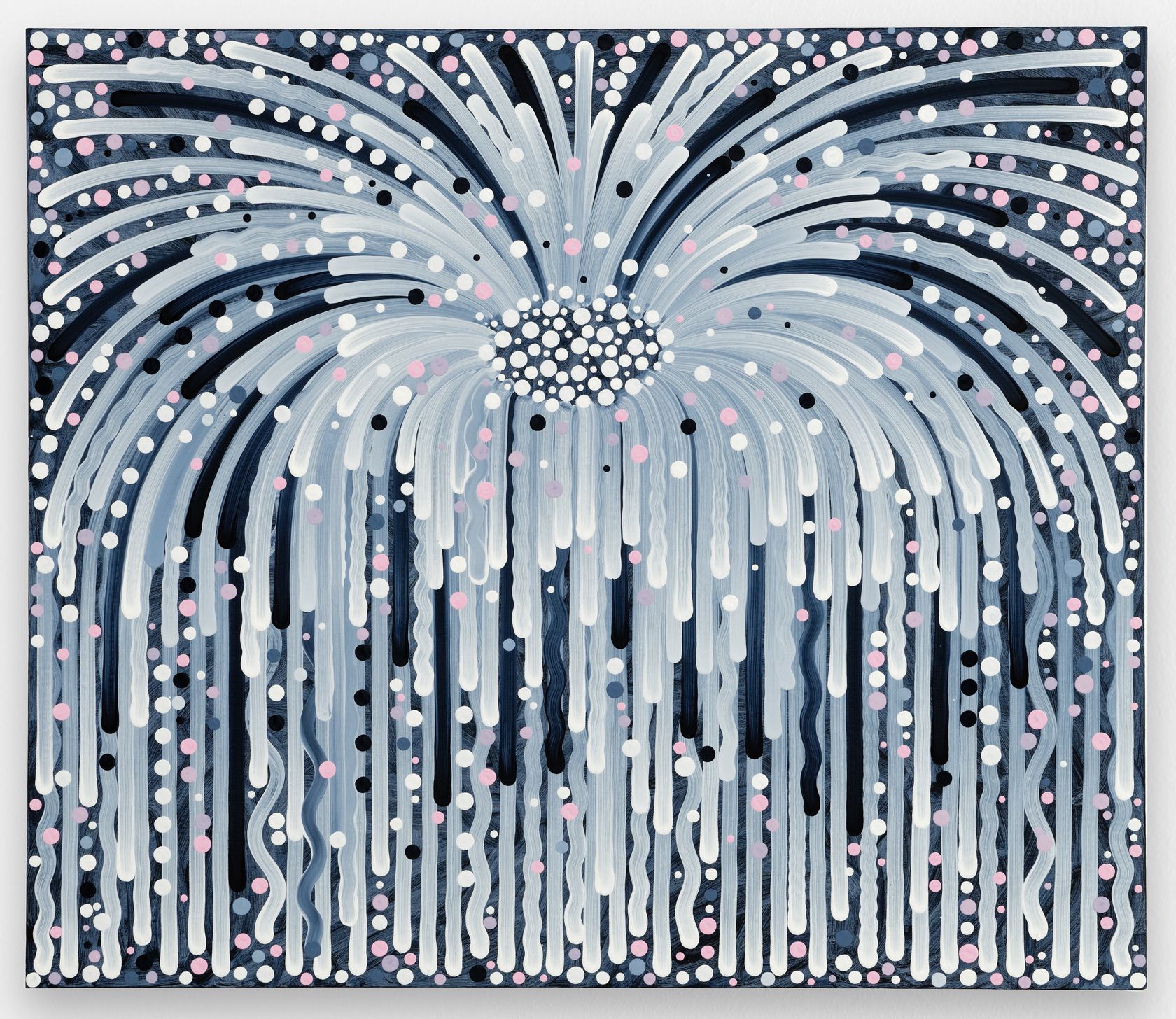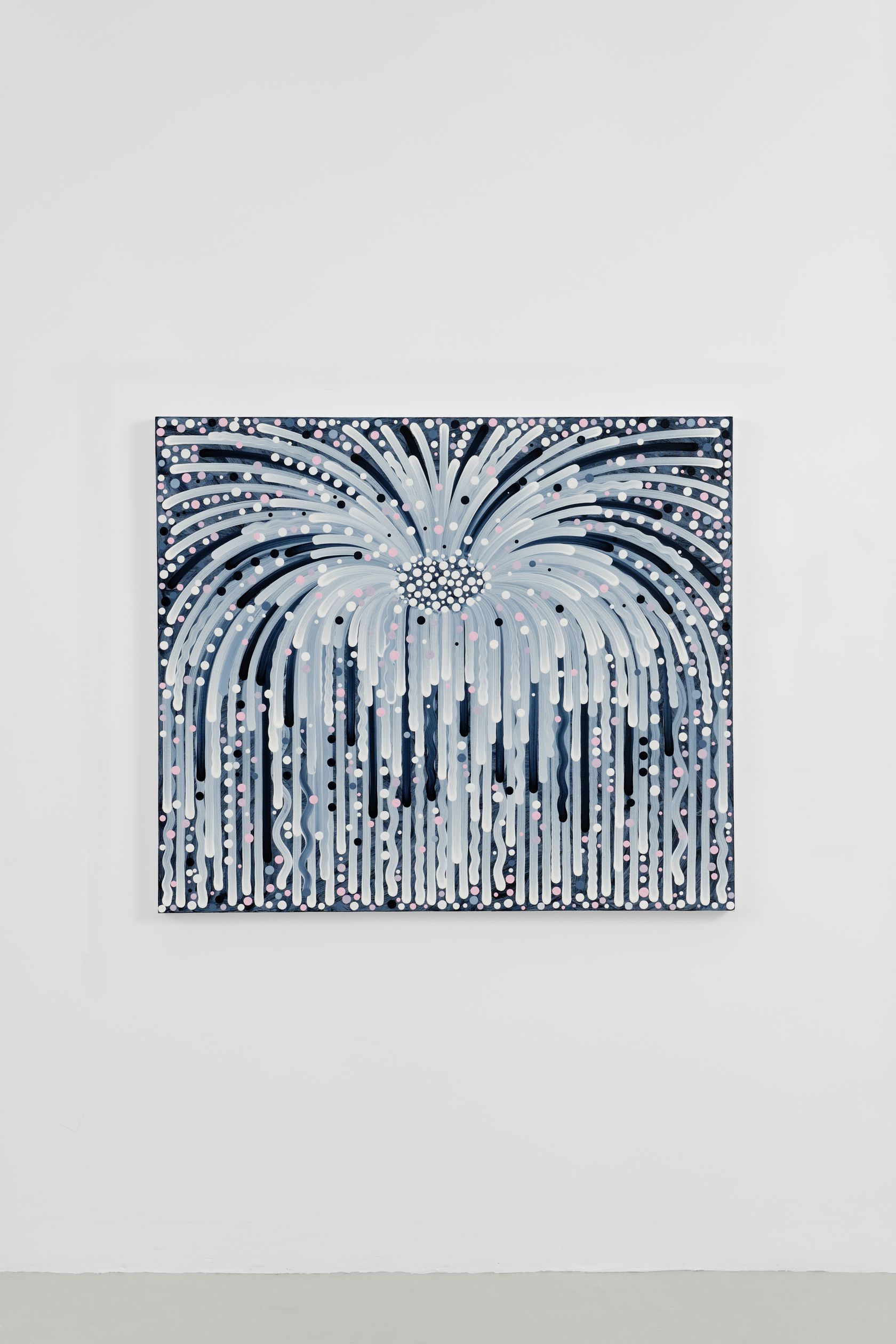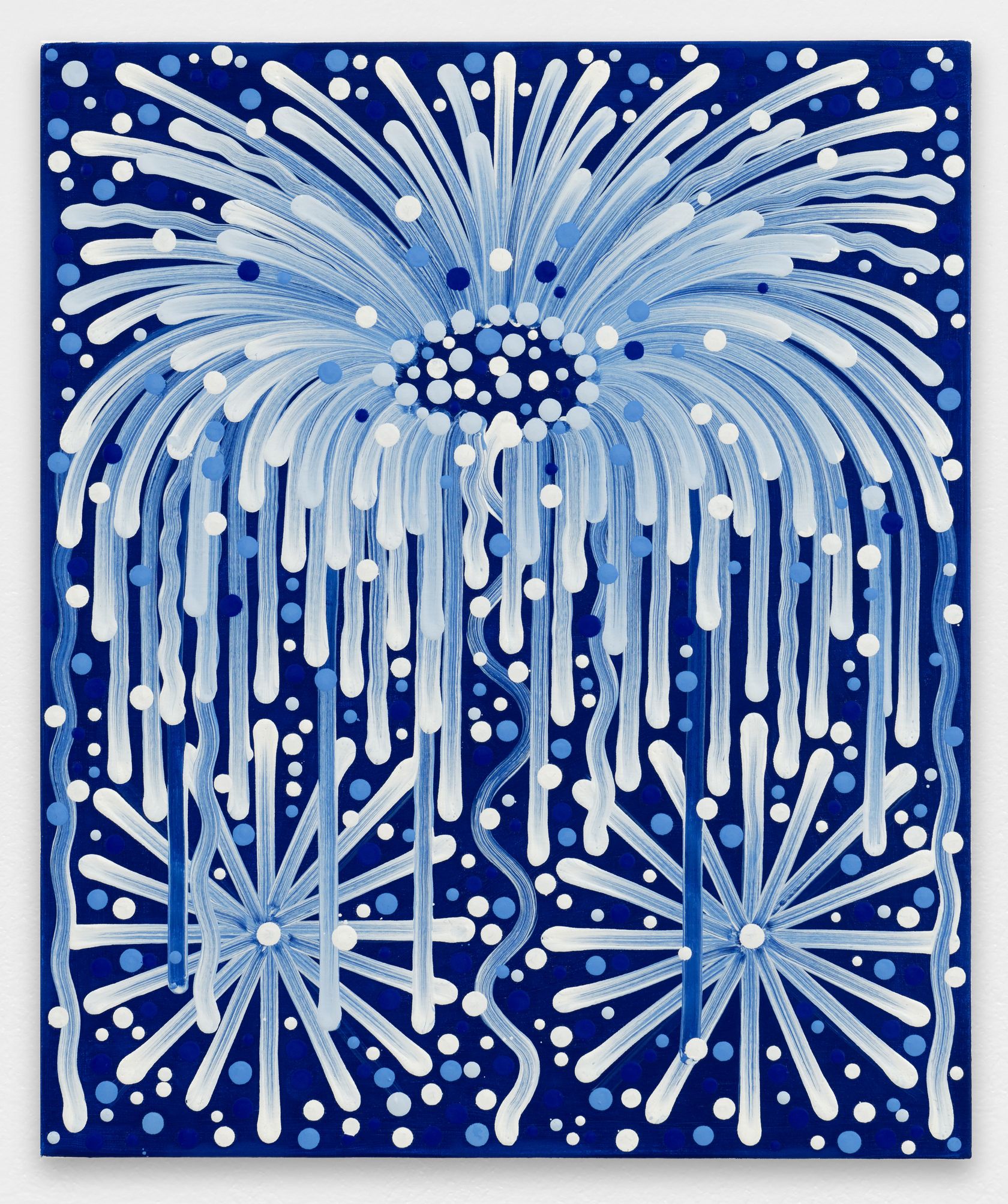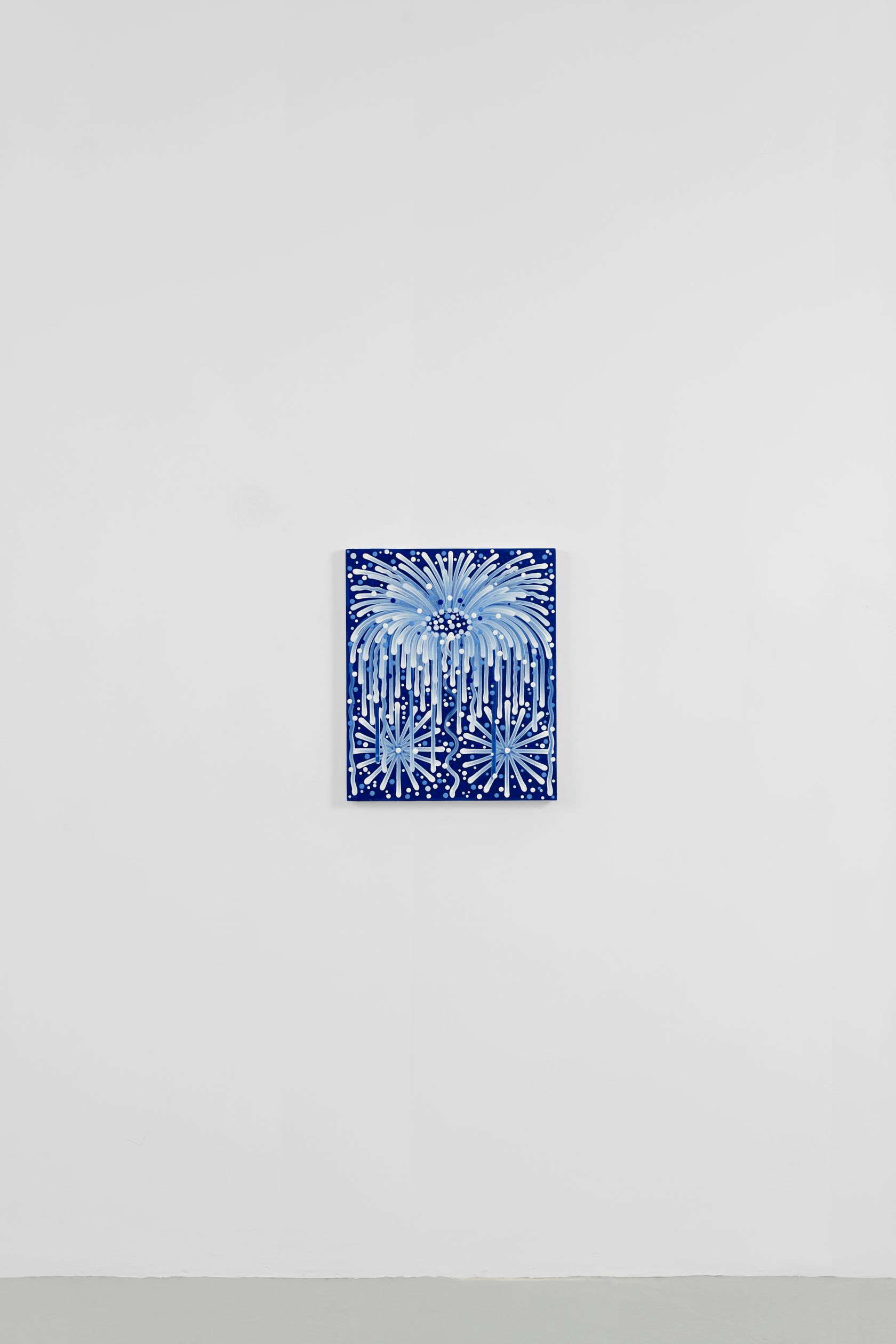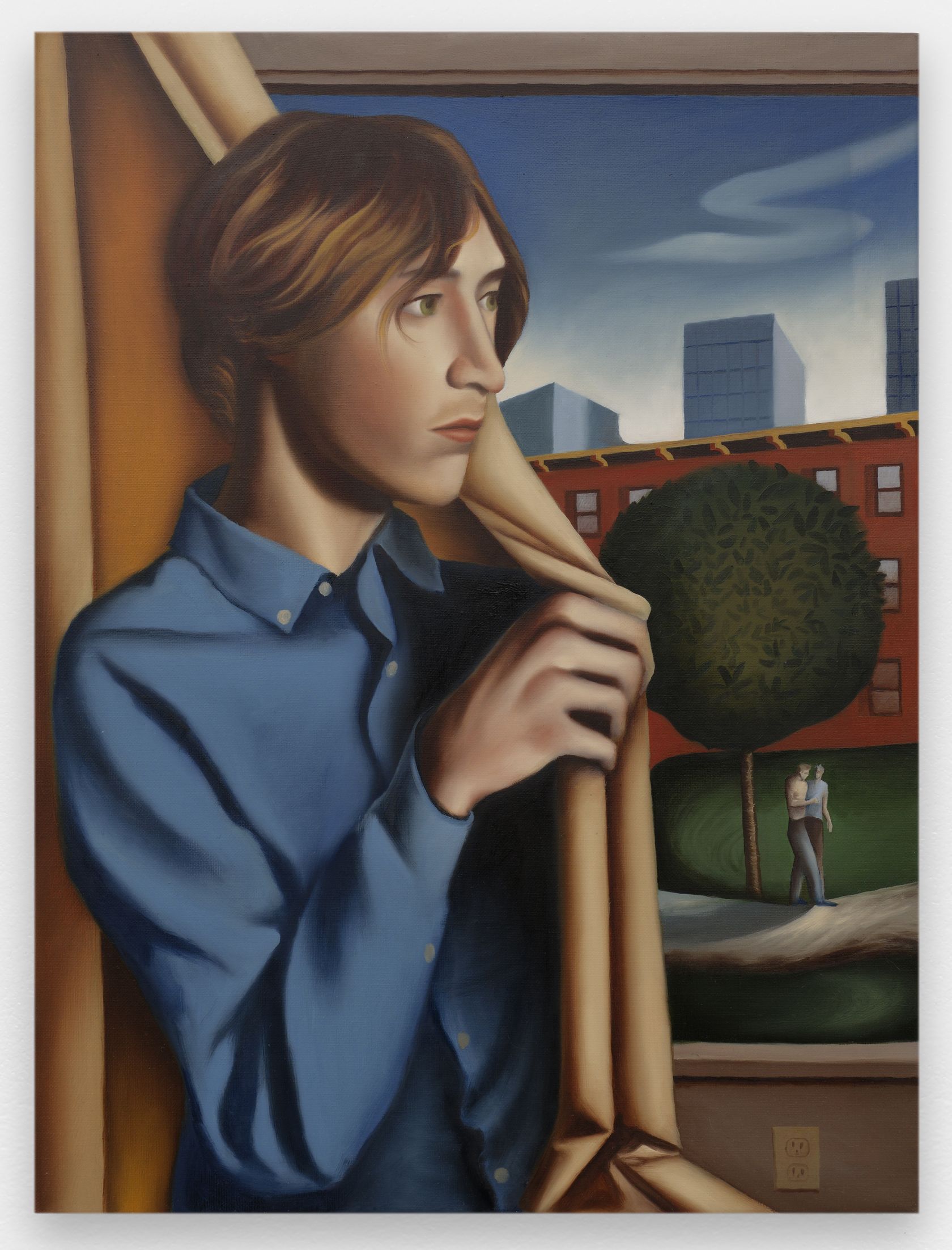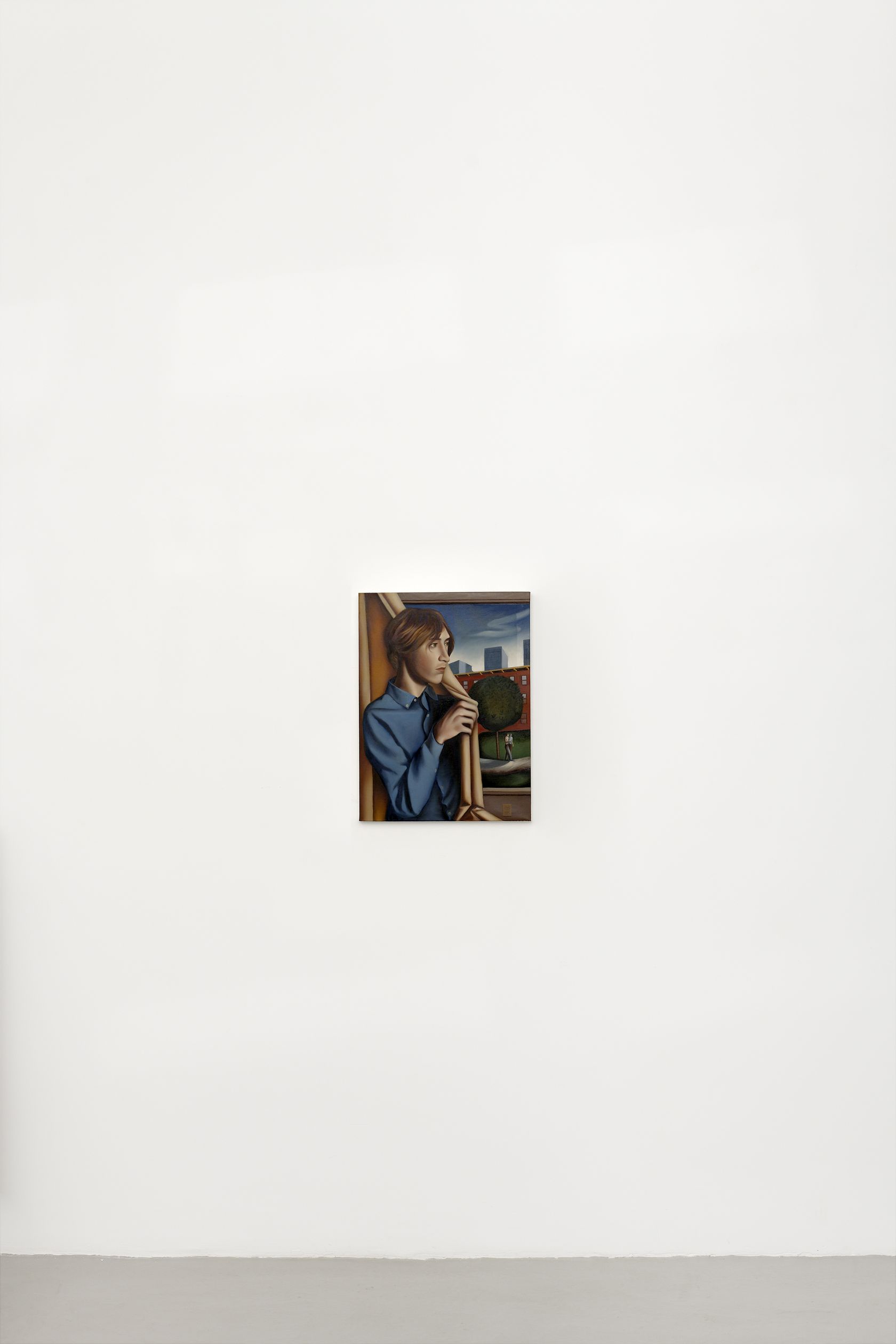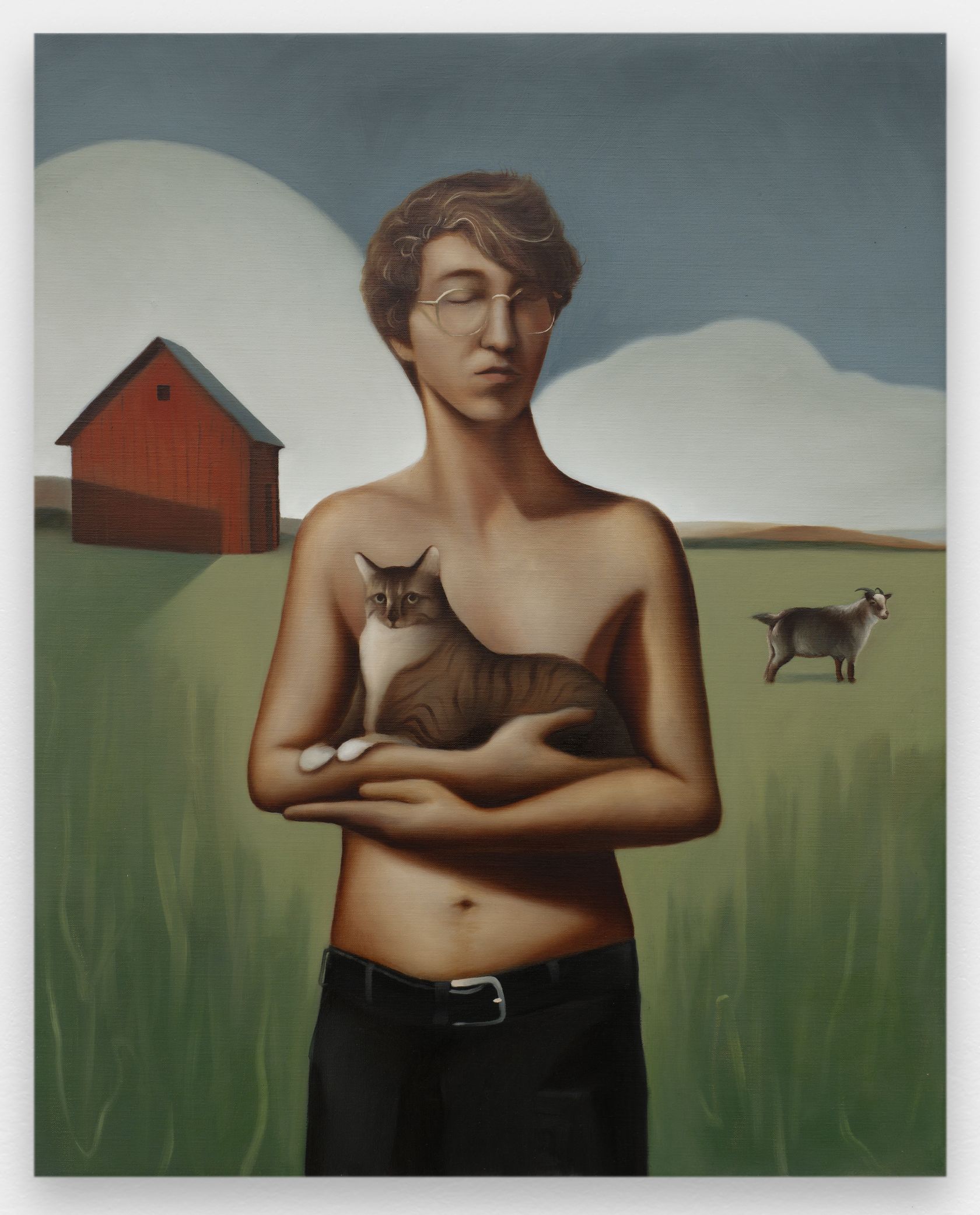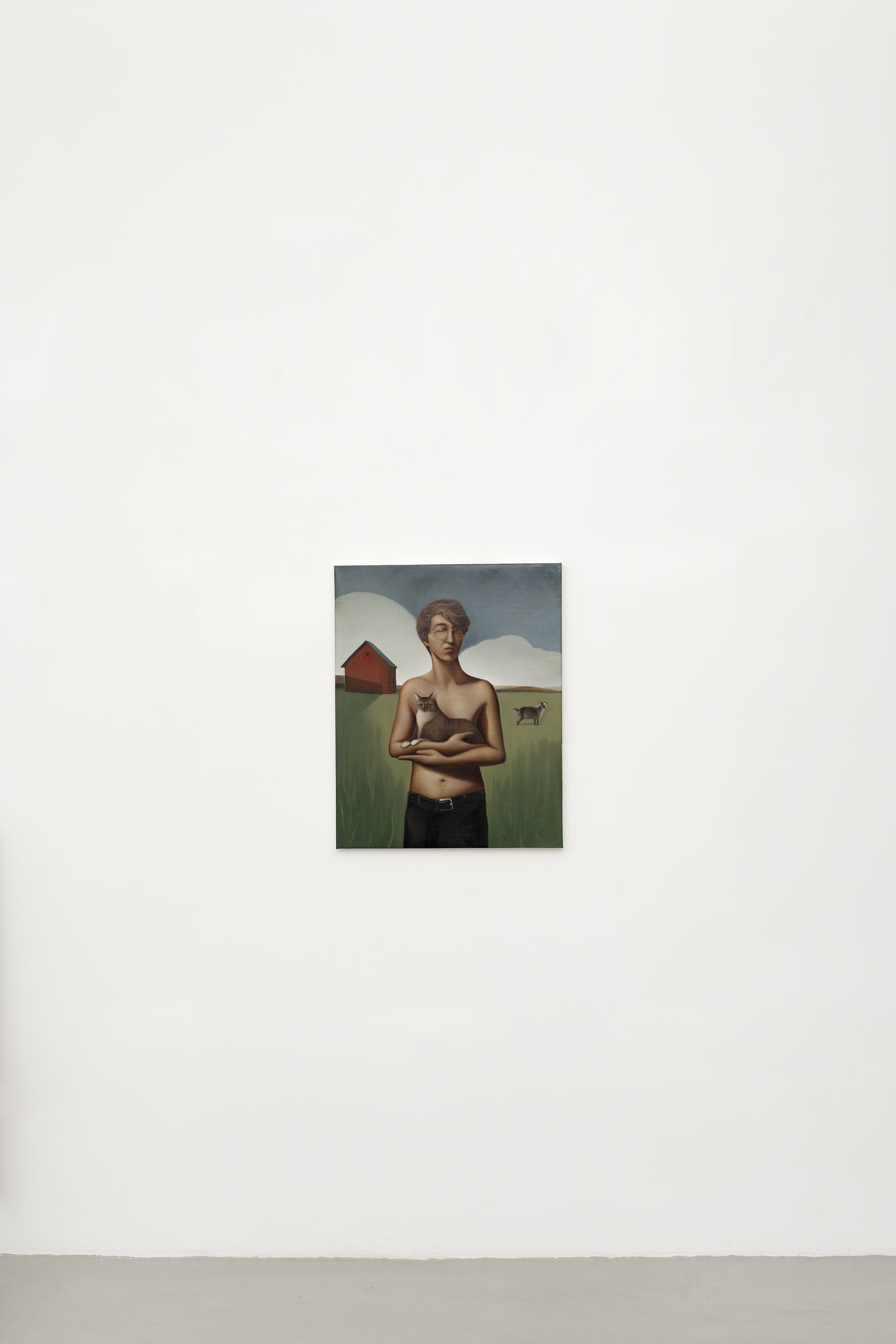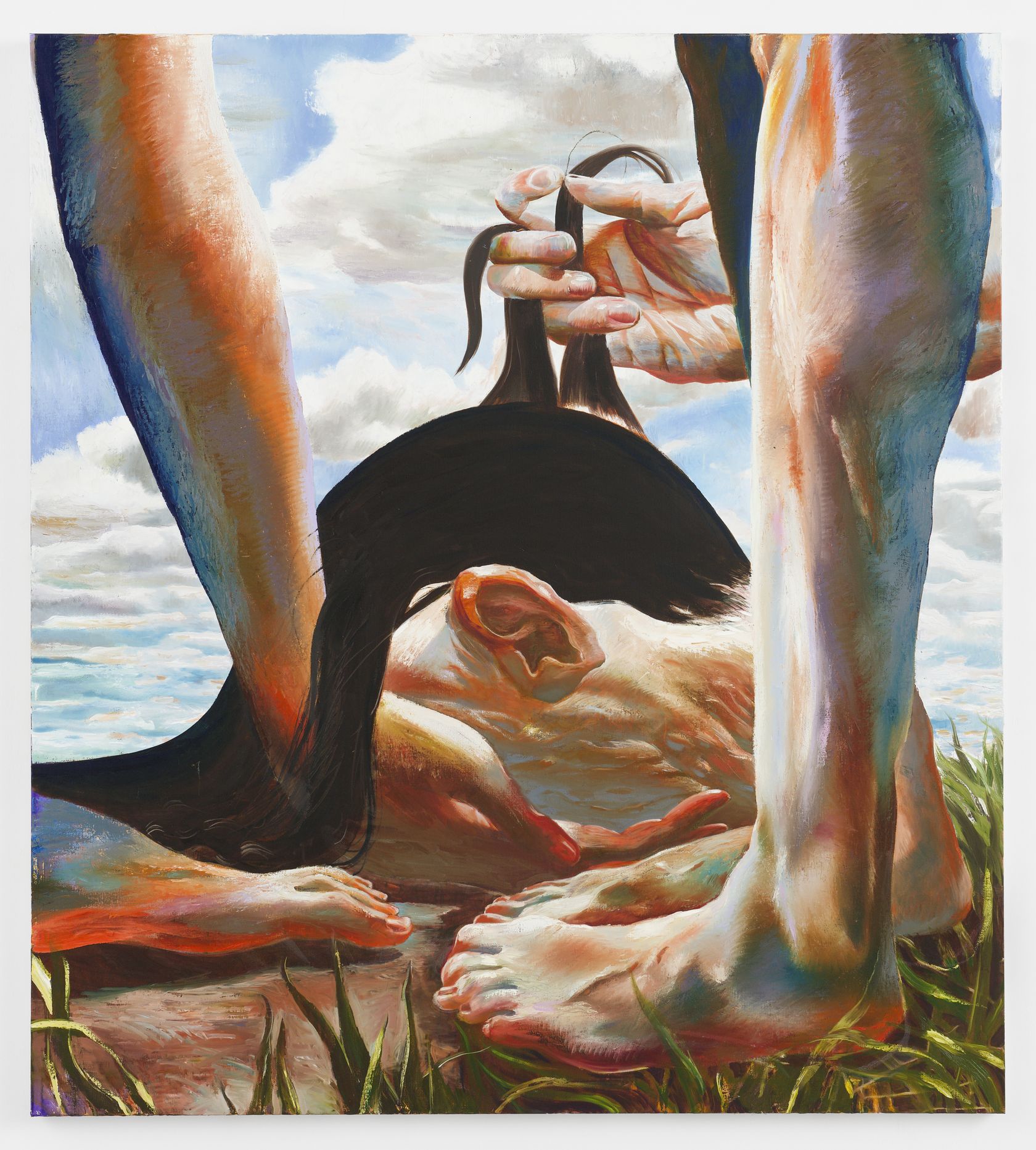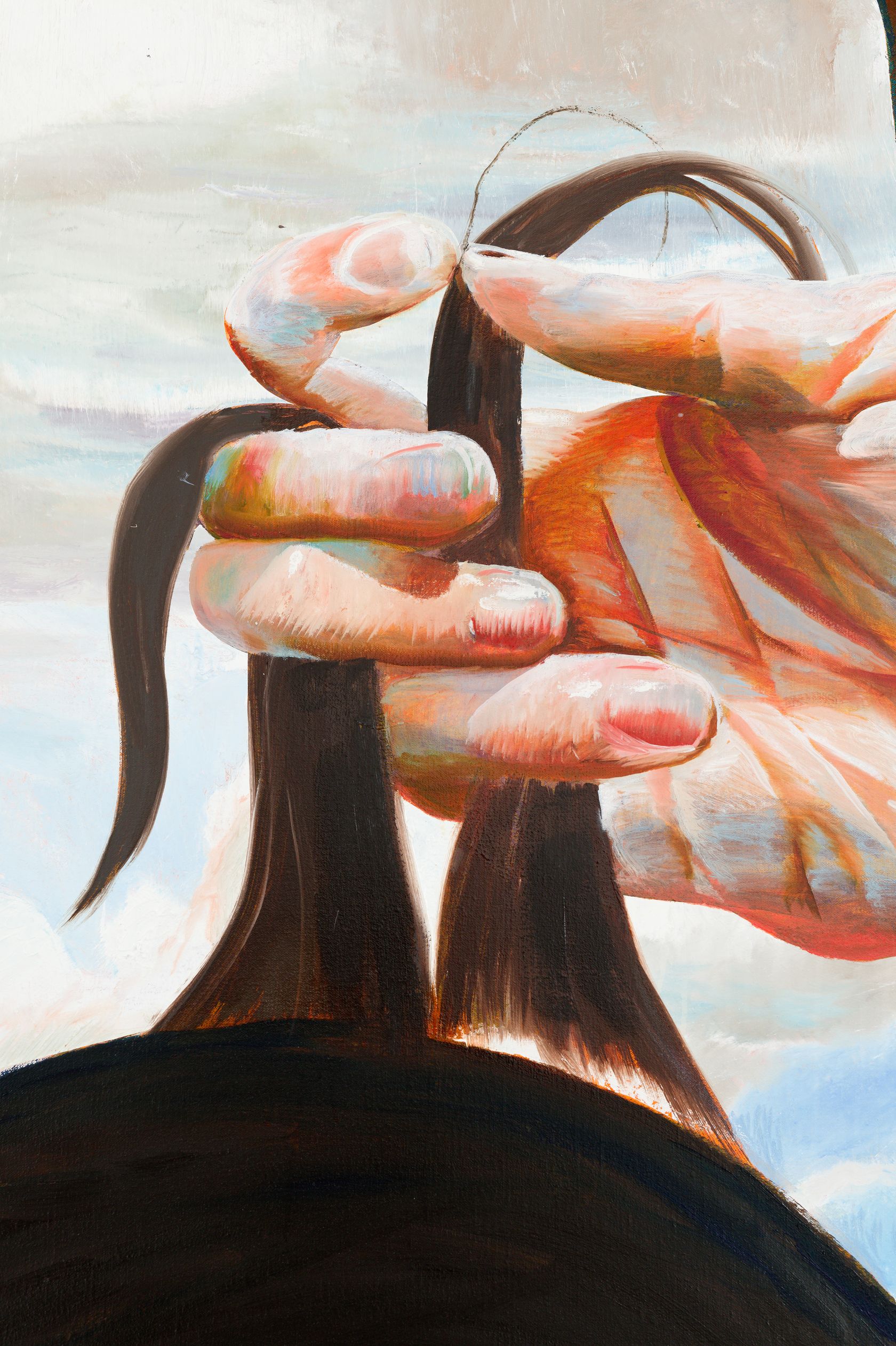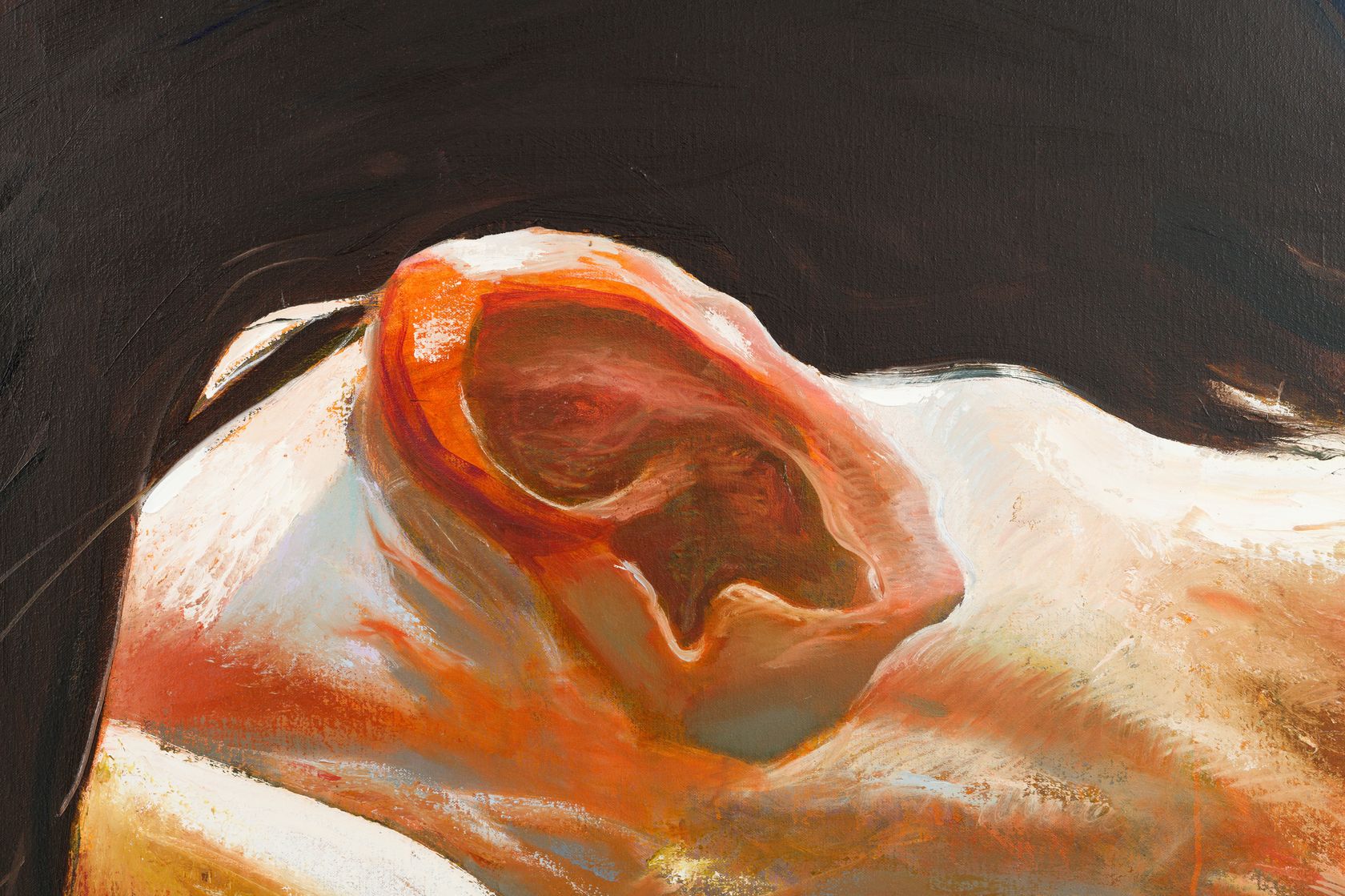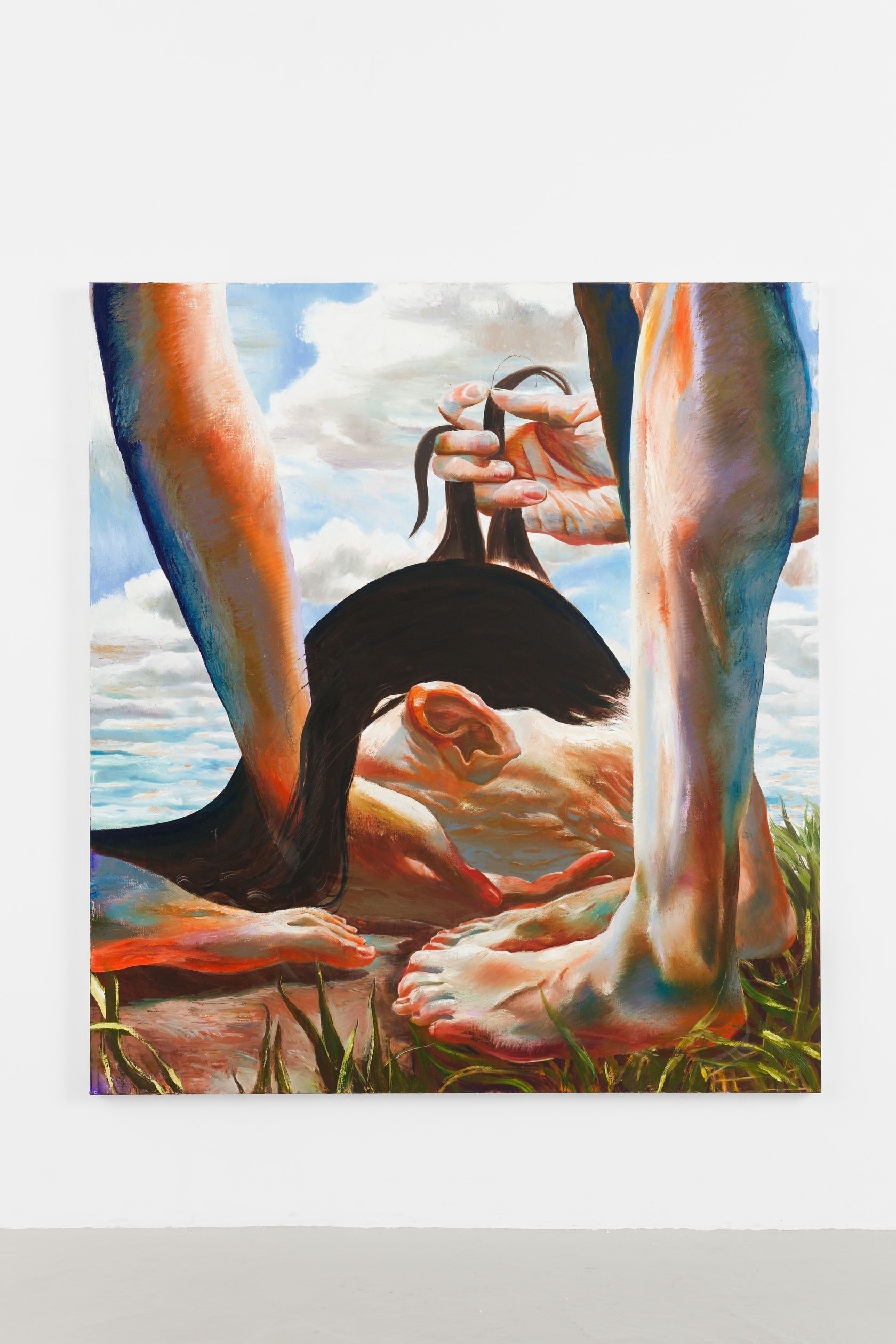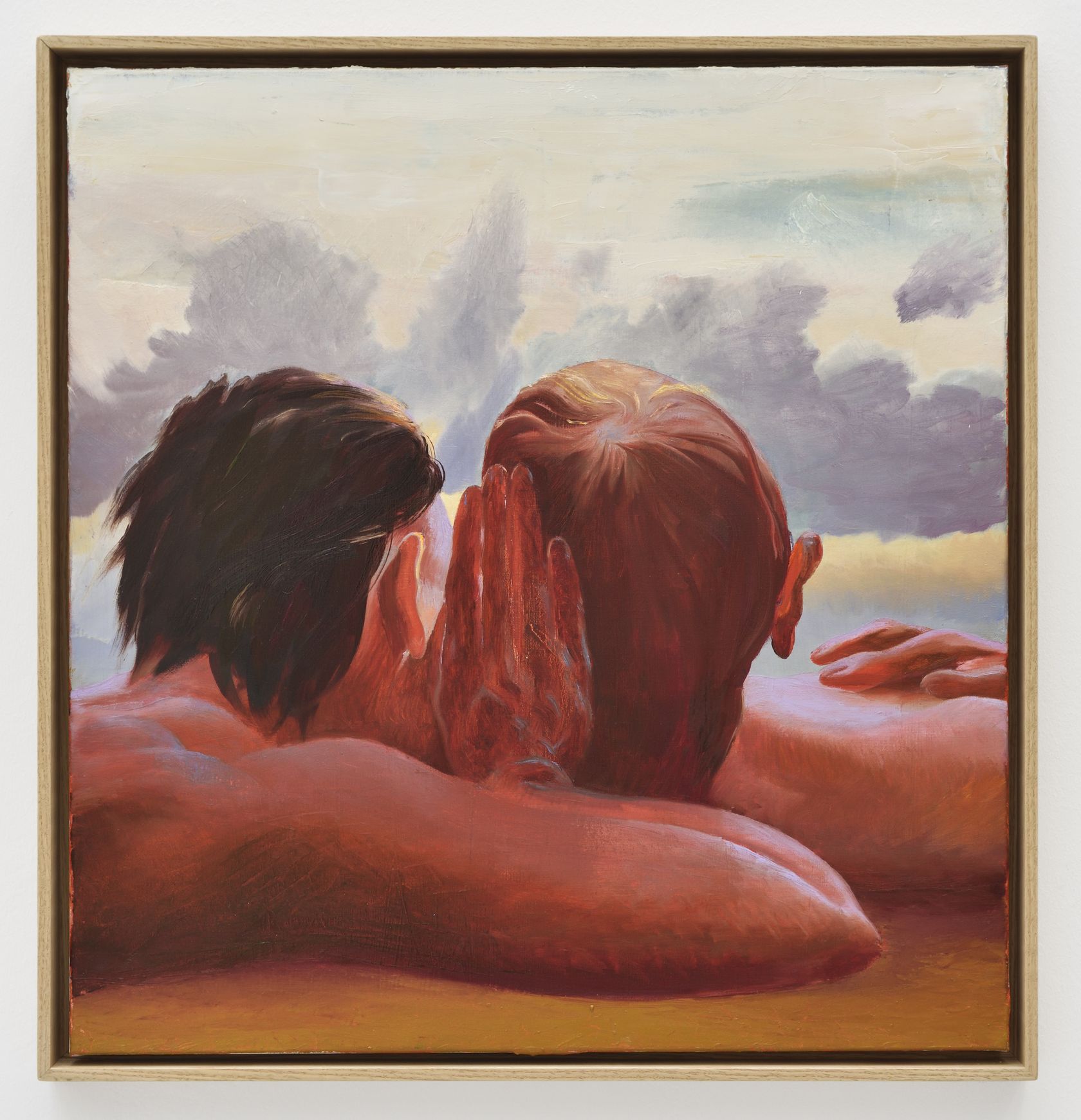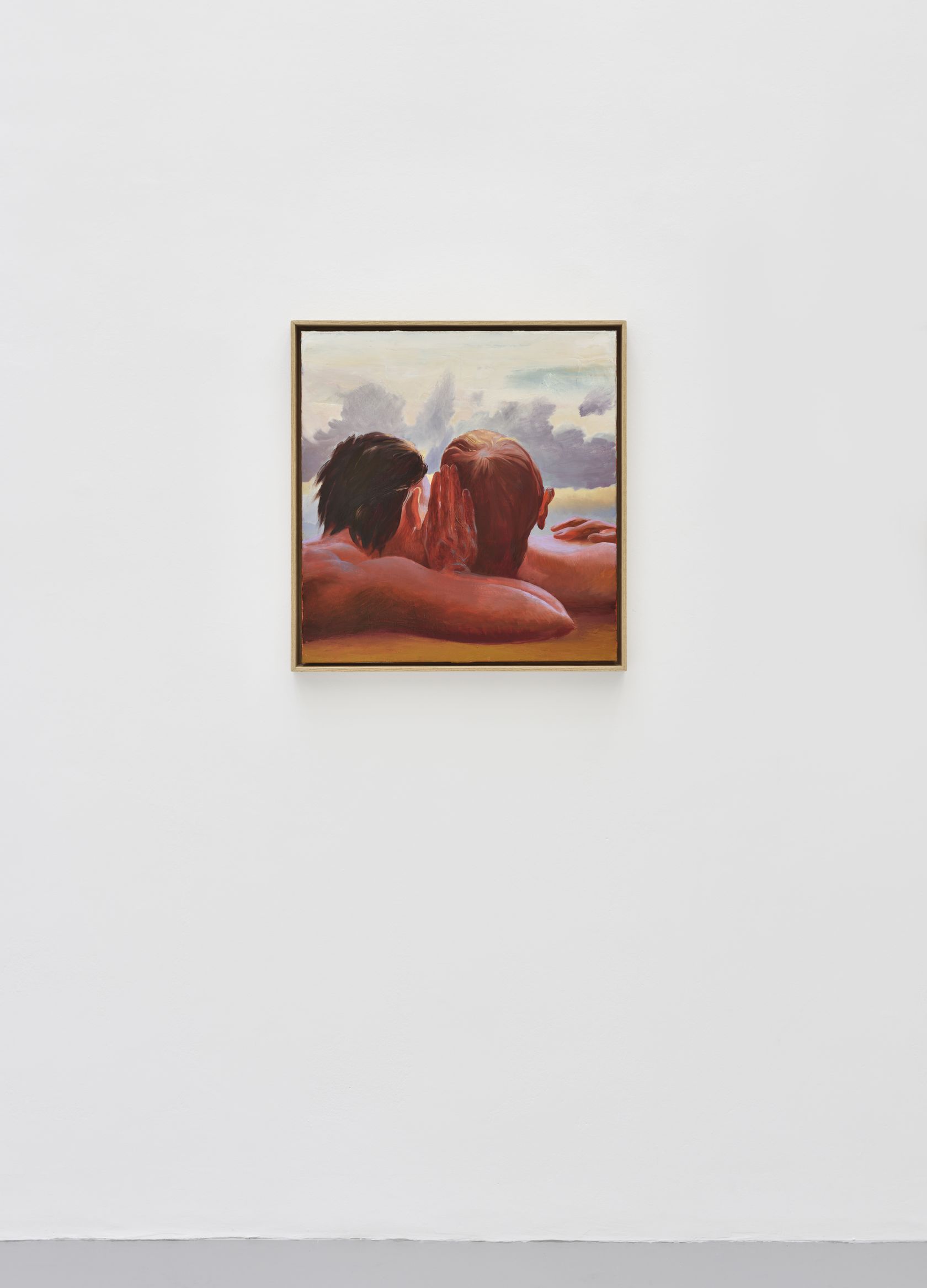To learn more about available works, please provide your contact information
artgenève
January 25 - 28, 2024
Booth B37
Solo: Amélie Bertrand
Born in 1985, the painter Amélie Bertrand immediately gained recognition on her graduation from the School of Fine Arts in Marseille. By means of her impeccably smooth execution, the artist is able to distance herself from ideal landscapes inspired by nature, and shape decors that fall somewhere between dreams and nightmares.
The planes and surfaces of her works are assembled in a complex and meticulous manner, branching out into skewed perspectives and shallow horizons. All kinds of materials and motifs typical of our era saturate her compositions: OSB, laminates, wire mesh, tiles, fleecing, chains, foliage, camouflage etc. Colors are applied in gradients, yet always as a single layer, as if trapped on the surface of an impenetrable screen. Amélie Bertrand creates an atmosphere of déjà-vu, a contemporary ambience that is both psychological and physical within the confined space of the painting. “I never attempt to create real spaces, only painted ones.” As the missing link between Giotto and West Coast art, Amélie Bertrand combines the great traditions of painting with synthetic psychedelia. She strips back painting with her artificial perspectives and syrupy cocktails of colors, transforming contemporary visual culture into carefully controlled constructs of flat tints.
She has recently enjoyed solo and group exhibitions at the Maison des arts, Malakoff (FR), the Centre d’art contemporain de Meymac (FR), the Kunstwerk Carlshütte, Büdelsdorf (DE), the Ecole Municipale des Beaux-Arts, Châteauroux and the Musée des Beaux-Arts de Dole (FR). Her oeuvres are included in the collections of the MAC VAL, Vitry-sur-Seine, the CNAP, Paris; the FRAC Limousin, Limoges (FR), Les Abattoirs Musée – Frac Occitanie Toulouse (FR) and the Musée de l’Abbaye Sainte Croix, Les Sables-d’Olonne (FR).
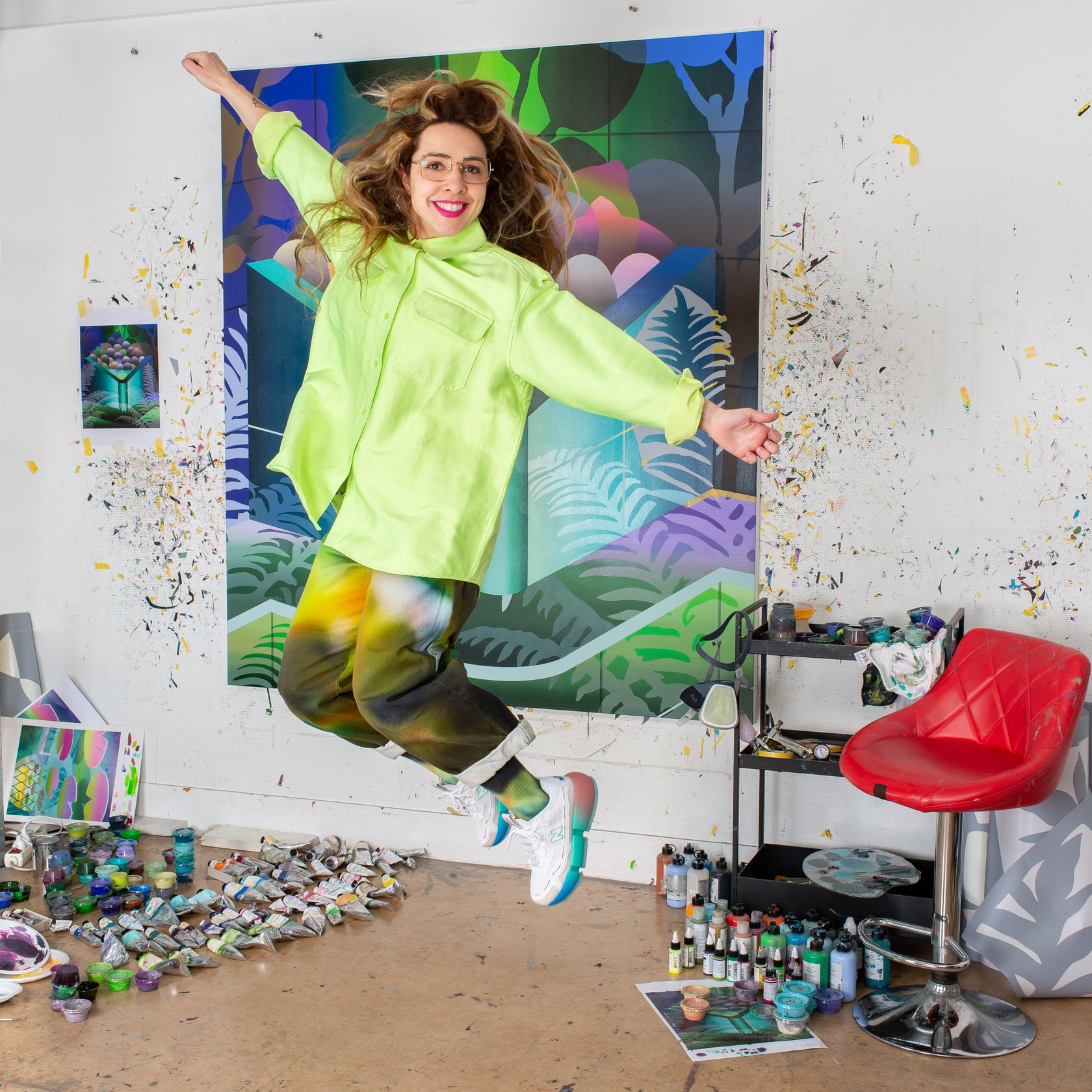
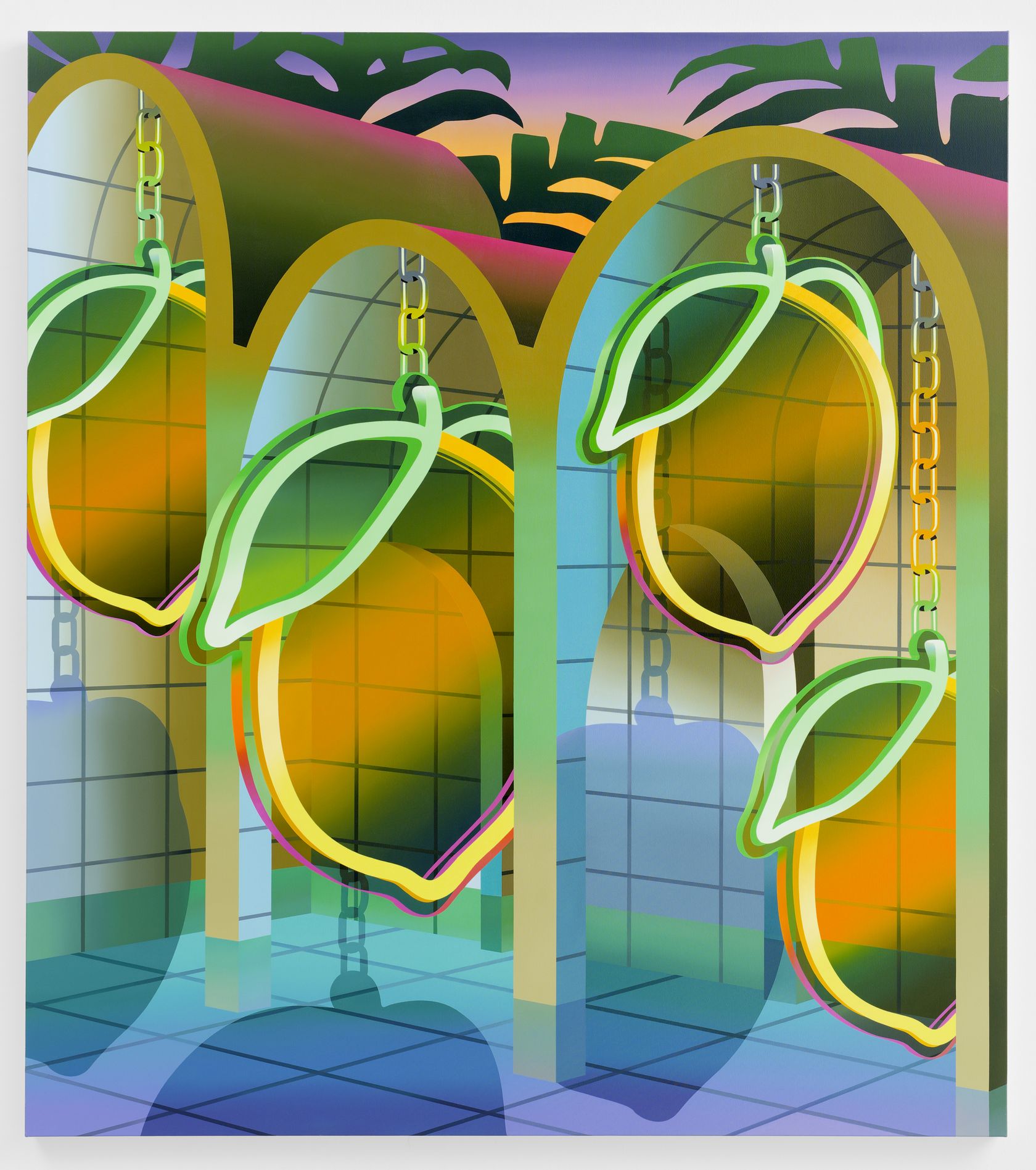
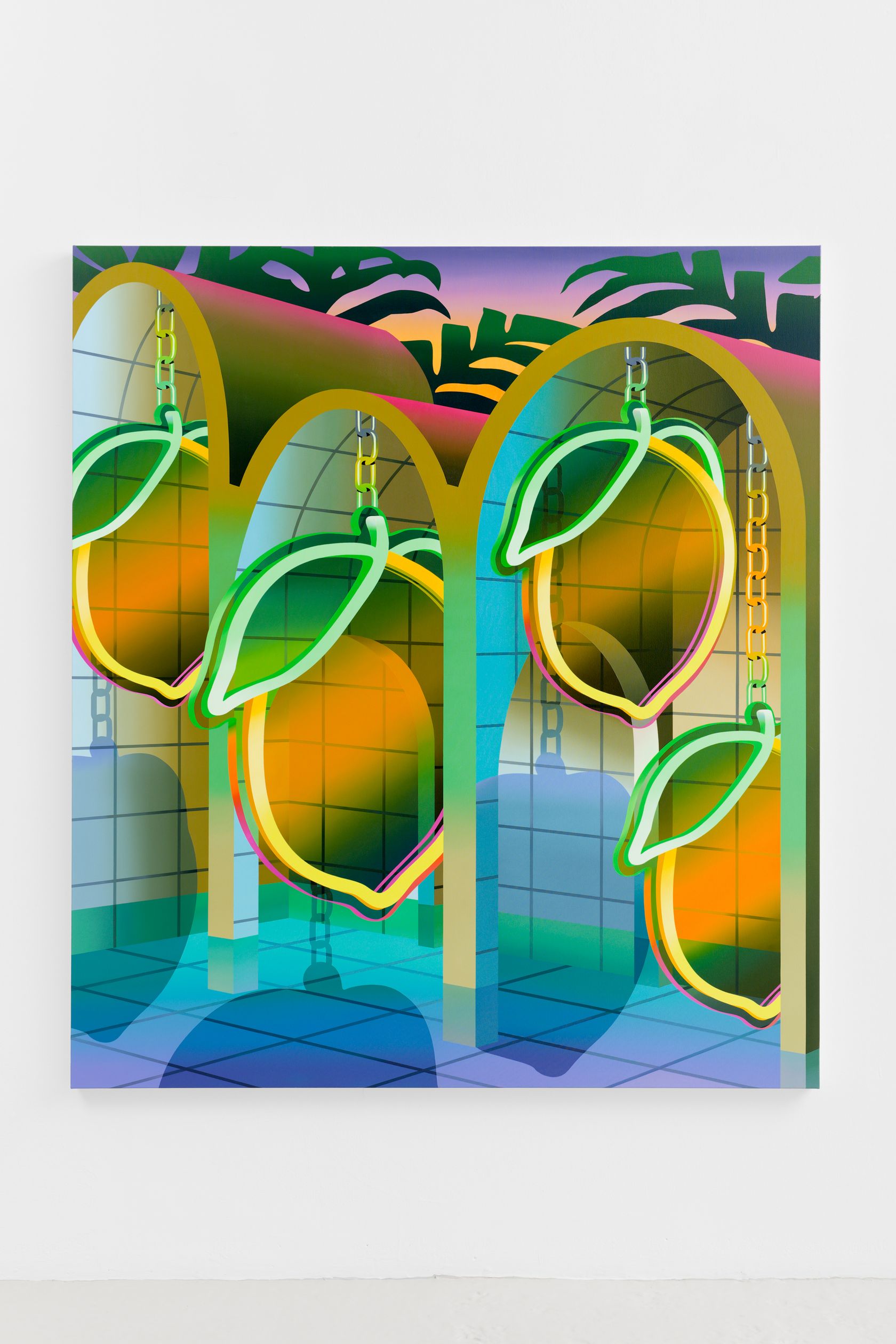
- Amélie Bertrand
- Elo (Electric Light Orchard) , 2023
- Oil on canvas
-
- 180 ×
- 160 × cm
- 70 7/8 ×
- 63 × inches
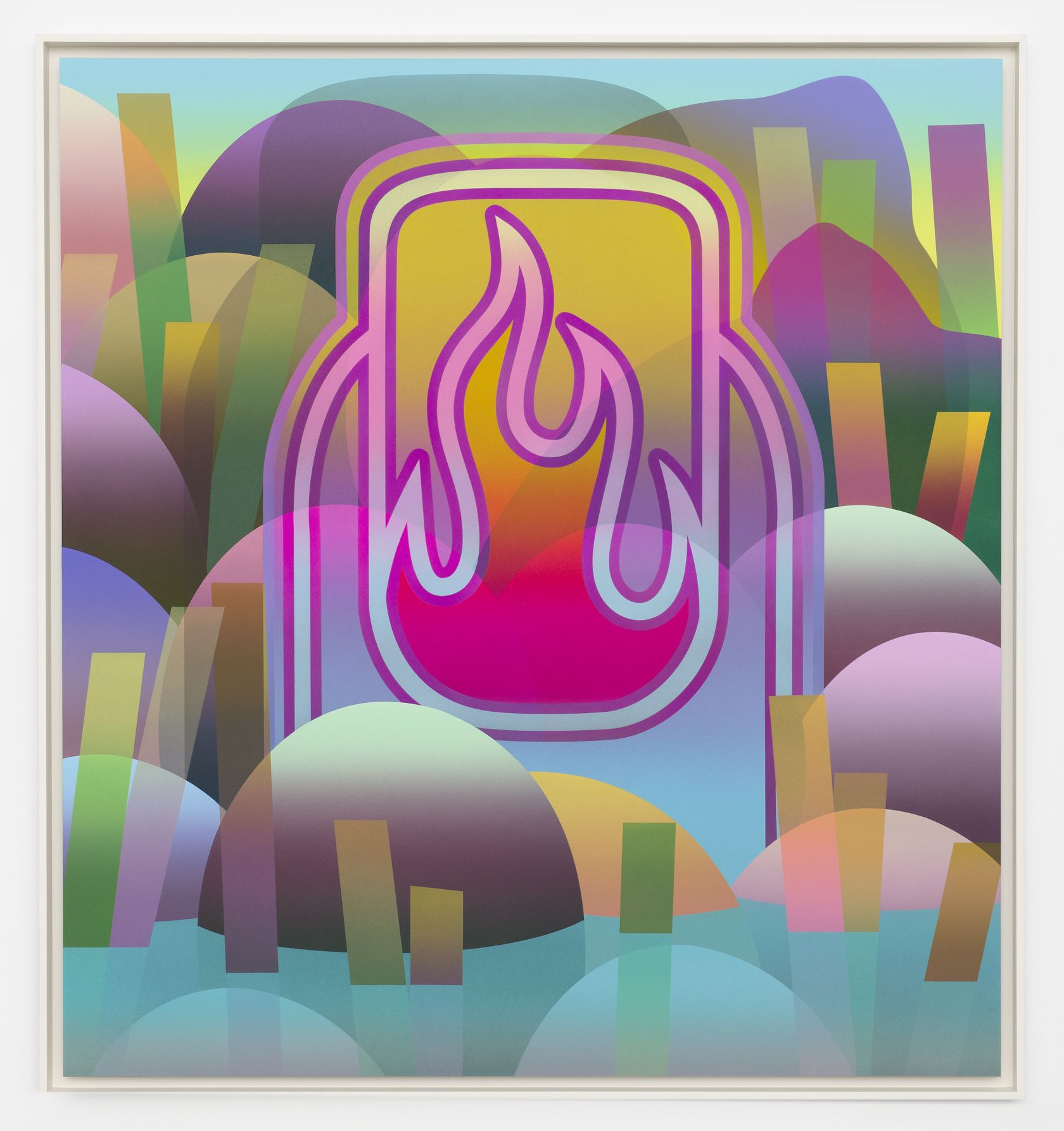
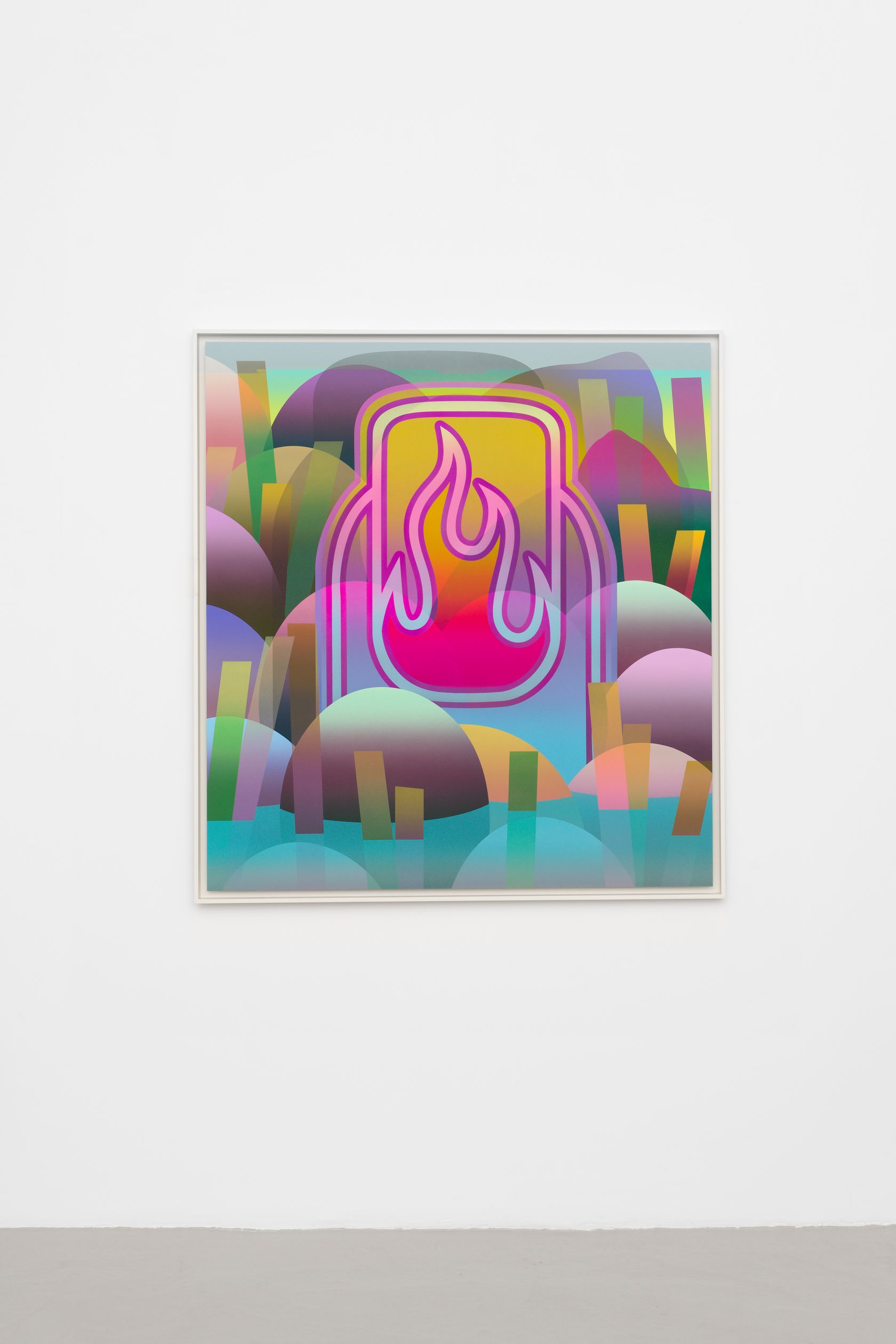
- Amélie Bertrand
- Hot Tub Doomsday Machine , 2023
- Acrylic on paper mounted on aluminium
-
- 130 ×
- 120 × cm
- 51 3/16 ×
- 47 1/4 × inches
- unframed
- 136 ×
- 126 ×
- 4 × cm
- 53 9/16 ×
- 49 5/8 ×
- 1 9/16 × in
- framed
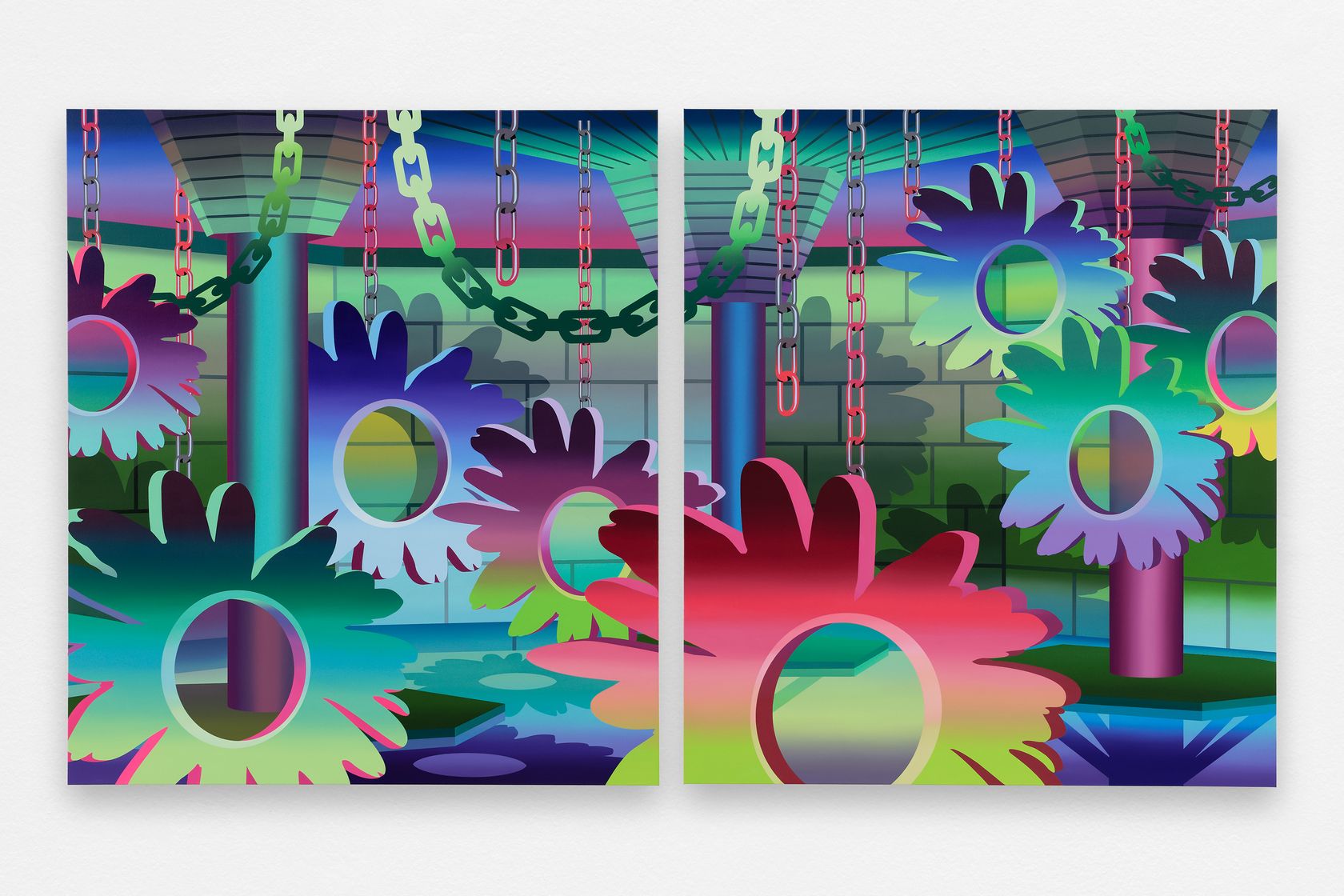
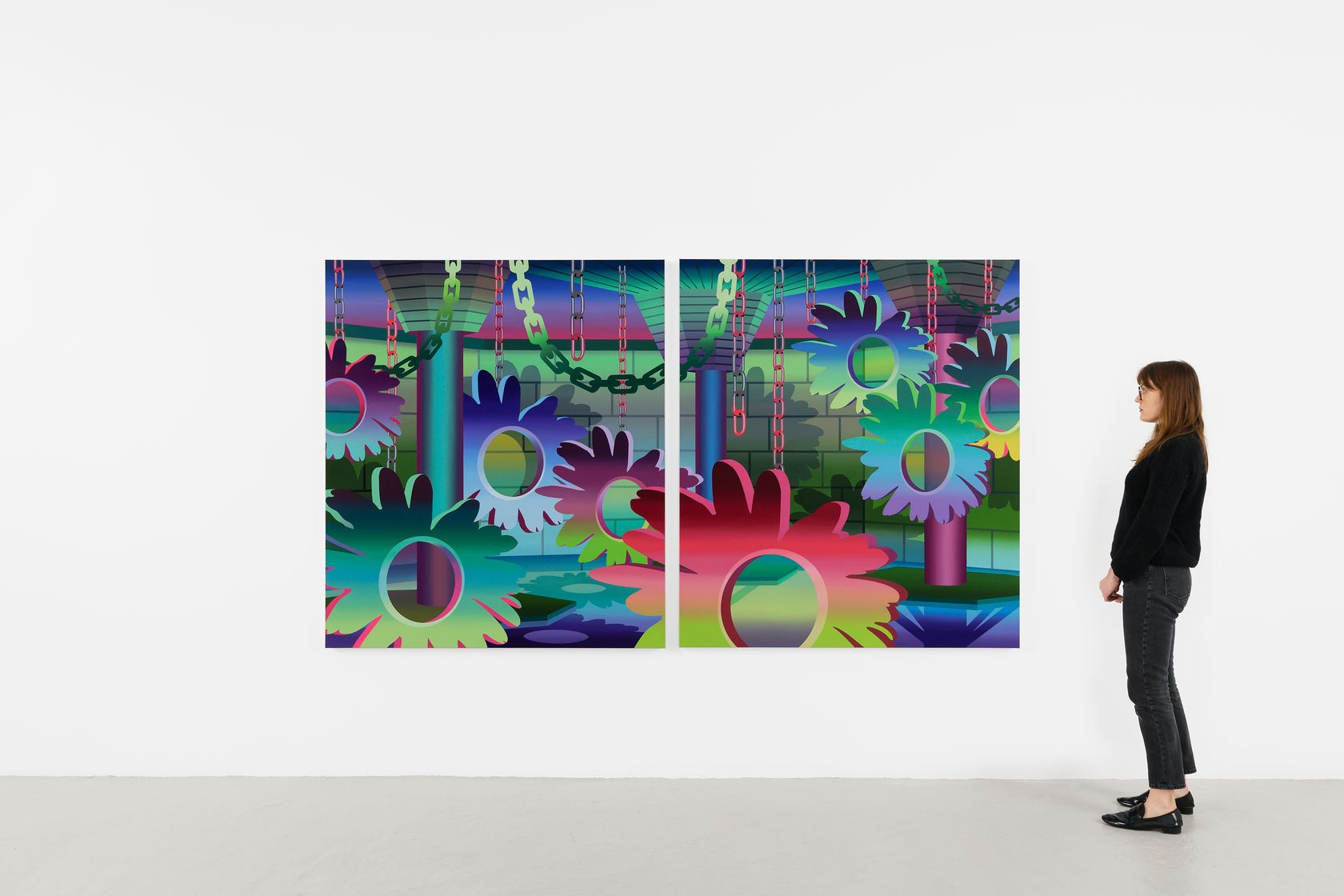
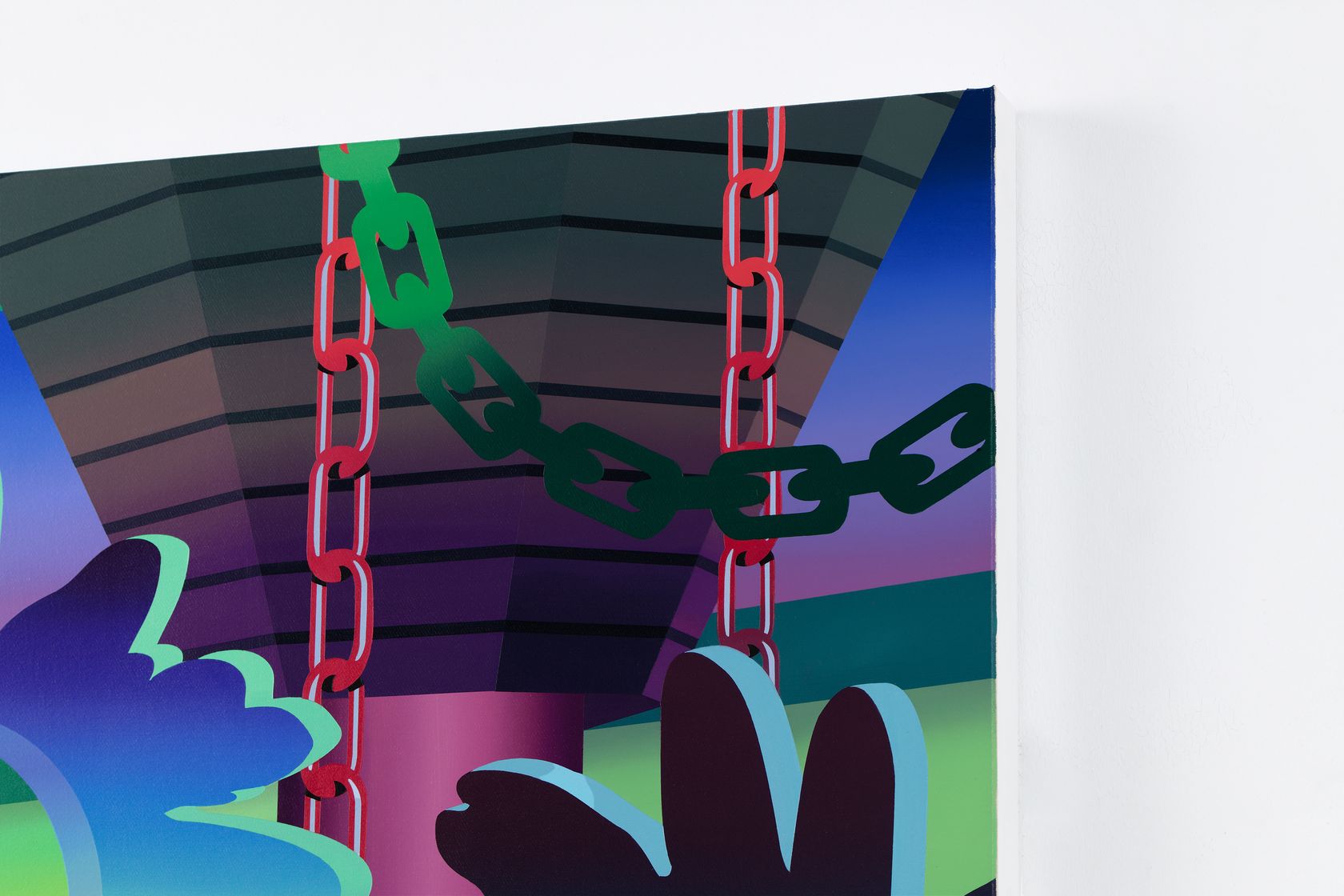
- Amélie Bertrand
- Too Much Sugar for a Dime , 2023
- Oil on canvas
-
- 160 ×
- 140 × cm
- 63 ×
- 55 1/8 × inches
- each
artgenève
January 25 - 28, 2024
Booth B39
Hugo Capron
Justin Liam O’Brien
Françoise Pétrovitch
Laurent Proux
Stefan Rinck
Moffat Takadiwa
Gert & Uwe Tobias
Philemona Williamson
Xie Lei
With a background in printing, Hugo Capron's painting is based on the pleasure of reproducing the same image in long series that seek to exhaust all the possibilities of variation. His paintings are generally produced in one go and without repentance, but are nevertheless based on precise technical equations. Long interested in the correspondences between a volume of paint and a surface of canvas to be covered, his return from the Kujoyama Villa in 2019 led to a breaking point. His works began to represent subjects that were often classical and anonymous, borrowed from the history of etching or the history of painting.
Hugo Capron’s palettes are the result of fine investigations among suppliers from all over the world in search of the most accurate shades. On the canvas, they reveal themselves in a whole range of materials, juices and luminous extra thickness which emphasise the speed of execution. The gesture is almost calligraphic, it is a mixture of commas and loops.
Hugo Capron (b. 1989) lives and works in Dijon (FR). He graduated from the Ecole Nationale Supérieure d'Art et de Design, Dijon (FR). In 2021, he is the winner of the 8th edition of the Emerige Revelation Grant. His work has been exhibited in numerous individual and collective shows at the Hôtel des Arts, Toulon (FR), the Centre Régional d’Art Contemporain de Montbéliard (FR), the Collection Yvon Lambert, Avignon (FR), the Frac Bourgogne, Dijon (FR) and at Consortium, Dijon (FR). His work features in a large number of French and international, public and private collections.
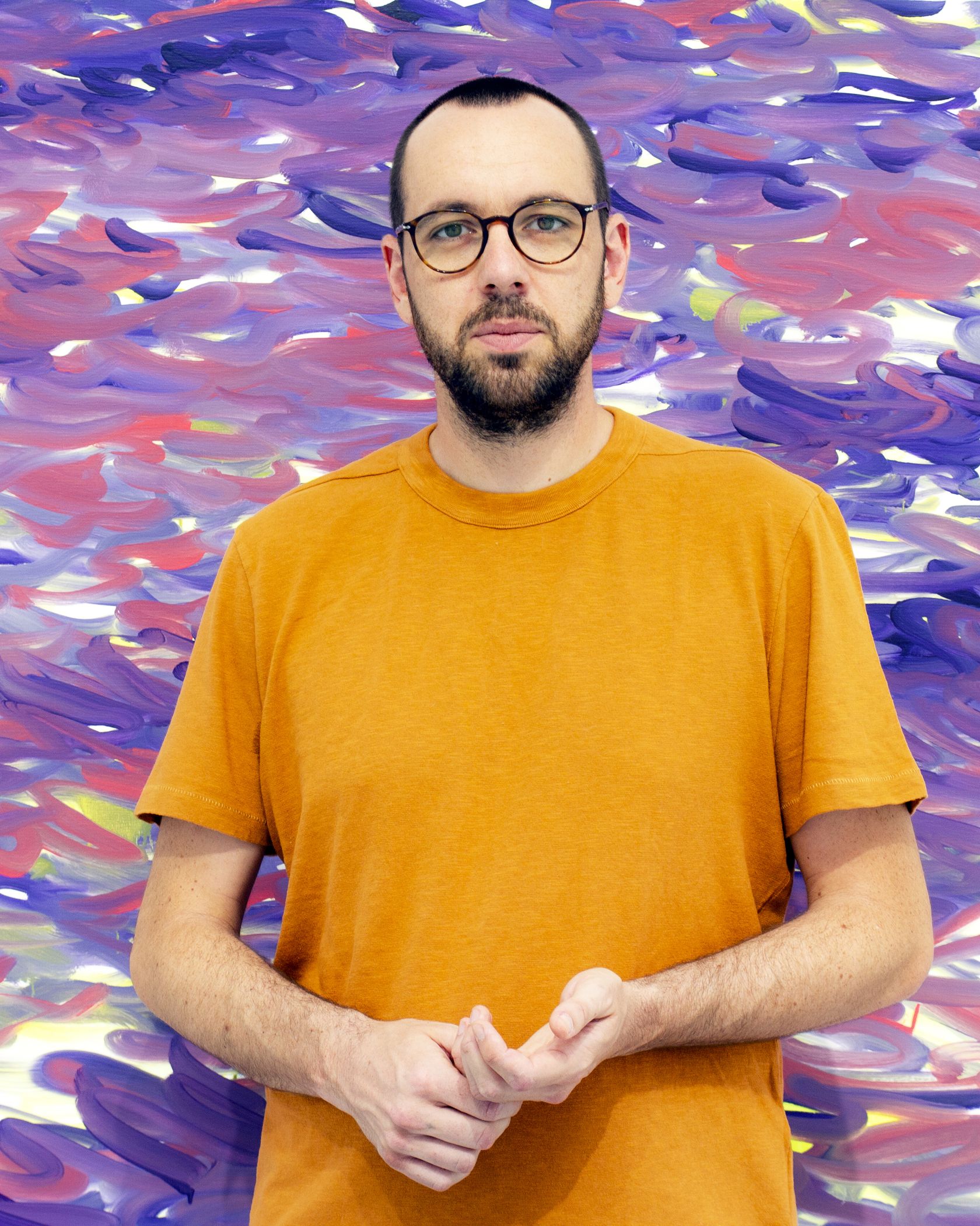
Justin Liam O’Brien is a narrative painter. His works portray characters, mainly male, within spaces inspired by the artist’s everyday life as well as historical painting. The artist delights in depicting the ambivalence of intimate emotions, often at bursting point or in the second after the explosion. He explores the psychological dimension of the relationship between bodies and architecture, where an individual is depicted in the solitude of an apartment or perhaps multiplied in the setting of a crowd. Justin Liam O’Brien’s very particular style of painting is immediately recognizable through its rounded forms, typical of the computer software he used as a 3D animator. His characters often bear the features of the artist himself or his family members and close friends, whereas the curvaceous lines and smooth skin of their bodies, painted in flat color tints, using a bold palette, with very few effects apart from the use of subtle color gradients, evoke the architypes of classical painting. The compositions condensed within the paintings and the rounded perspectives generate a claustrophobic and disorienting effect. As part of a lineage of Queer artists, O’Brien explores the subjects of identity, isolation, sadness and humor, set in a changing world.
Justin Liam O’Brien was born in 1991 in Flushing, New York and lives and works in Brooklyn. After graduating from the Pratt Institute in 2016, his work was exhibited at the Richard Heller gallery in Los Angeles and the Monya Rowe gallery in New York. He also participated in a group show on the subject of the self-portrait, curated by Sasha Bogojev at High Line Nine in New York. He has featured in articles in Elephant Magazine, Artforum and Juxtapoz.
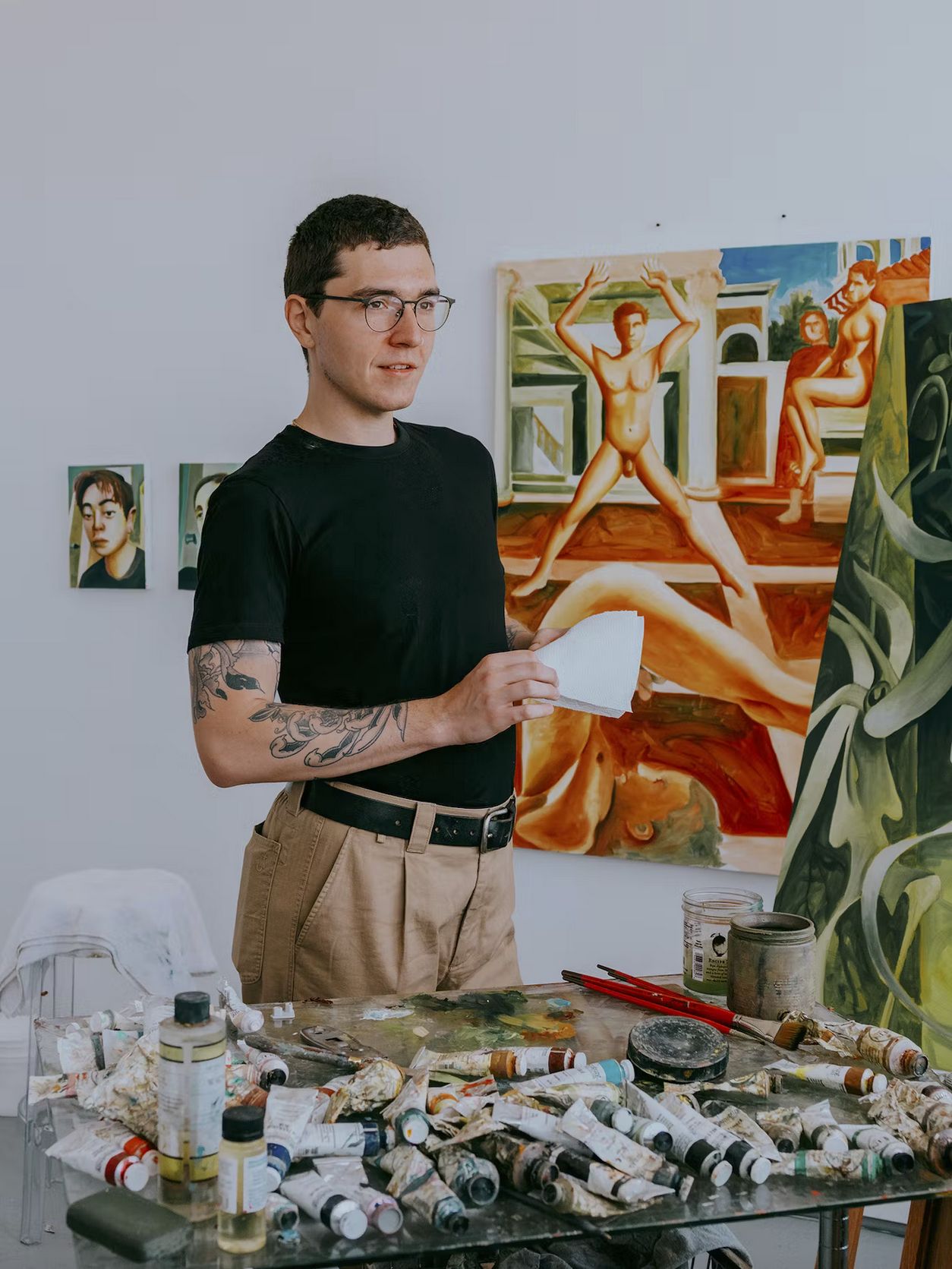
Since the 1990s, Françoise Pétrovitch has produced one of the most powerful bodies of work on the French art scene. Amongst the numerous media she has explored—ceramics, glass, ink washes, painting, print and video—drawing retains pride of place. In constant dialog with the artists who have preceded her, she has been able to measure herself against the incontrovertible motifs of “high art”—Saint Sebastian, still lifes, etc. Pétrovitch’s art reveals an ambiguous world, willingly transgressive, playing with conventional boundaries and eluding any interpretation. Intimacy, fragments of life and disappearance, alongside the themes such as the double, transition and cruelty run through her work, which is inhabited by animals, flowers and beings, and whose atmosphere fluctuates between light and dark, rarely leaving the spectator unmoved.
She has enjoyed numerous solo exhibitions both in France and abroad. The FHEL in Landernau (FR) hosted a major retrospective of her work and a monographic exhibition was dedicated to her at the BnF, Paris in 2022. In 2018, she was the first contemporary artist to be awarded a solo exhibition at the Louvre-Lens. Over the past few years, Pétrovitch has produced monumental wall drawings and large format ensembles, for the Galerie des Enfants at the Centre Pompidou, the West Bund Museum, Shanghai, or for the Ballets du Nord Company. Her works are included in many private and public collections, most notably the Centre Pompidou, Paris (FR), the Voorlinden Museum, Wassenaar (NL), the National Museum of Women in the Arts, Washington D.C. (US), the Musée Jenisch, Vevey (CH), the Musée d’Art Moderne et Contemporain of Saint-Etienne (FR) and of Strasbourg (FR), the MAC VAL (FR) and numerous regional art centers throughout France as well as the Salomon and Guerlain Foundations.
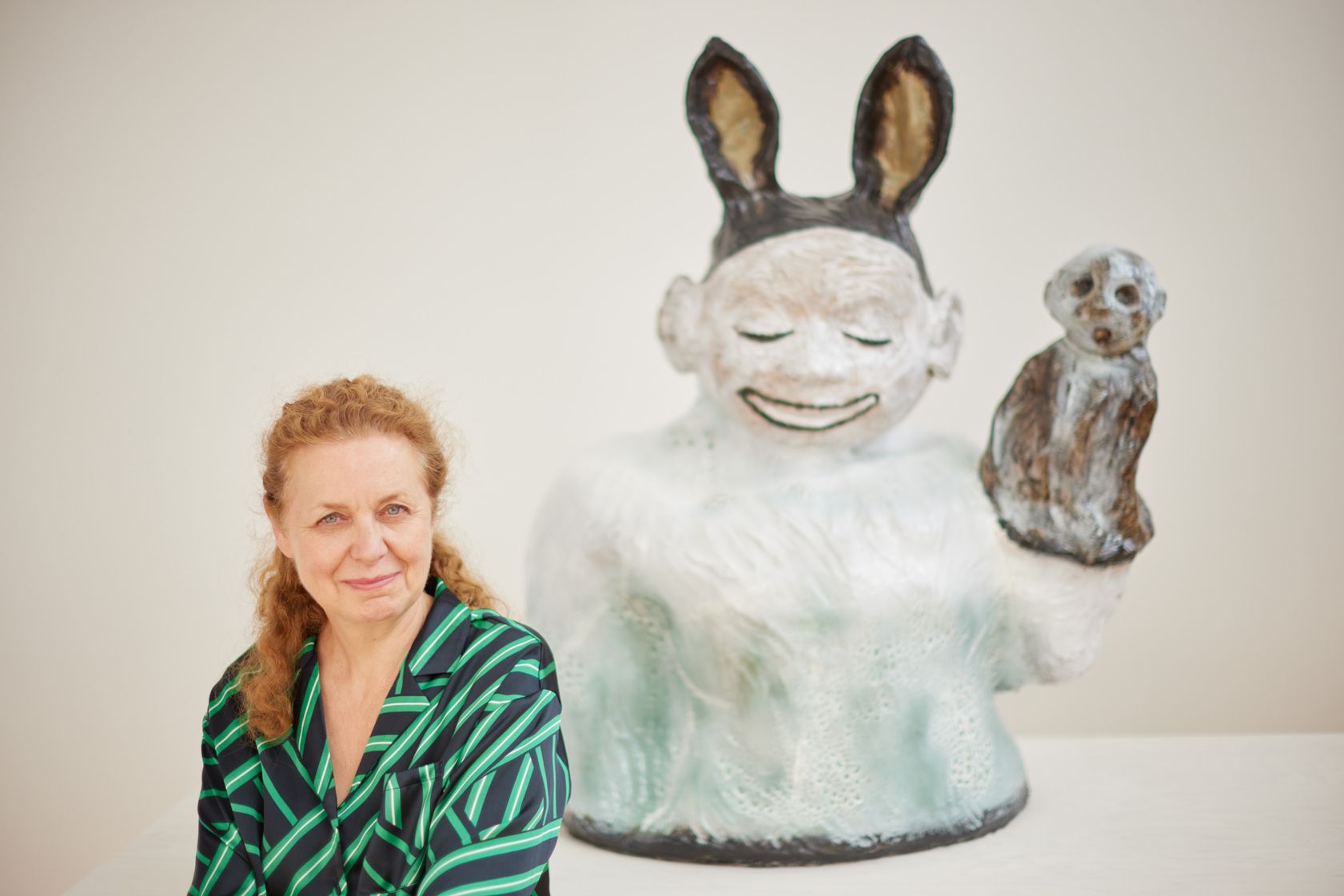
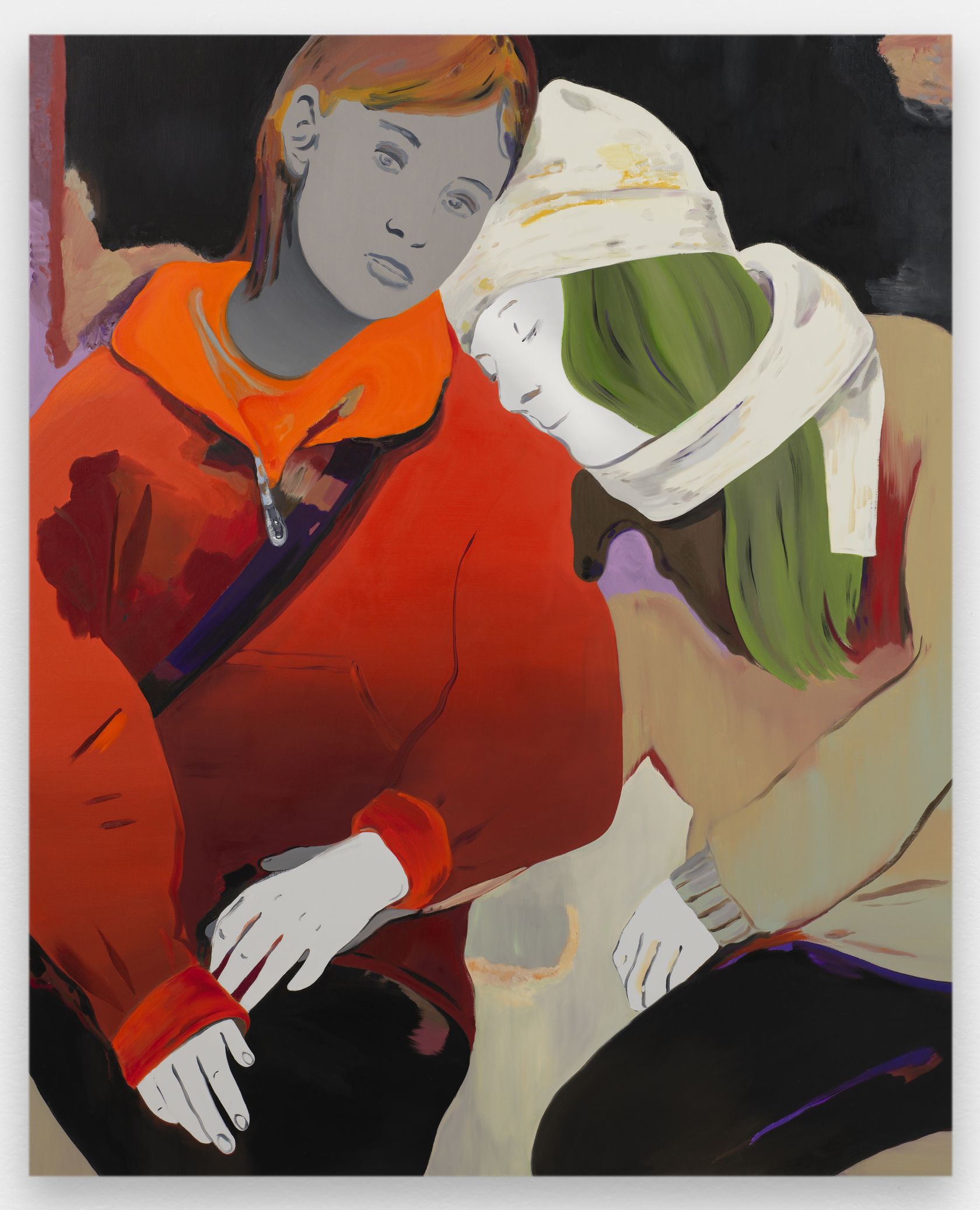
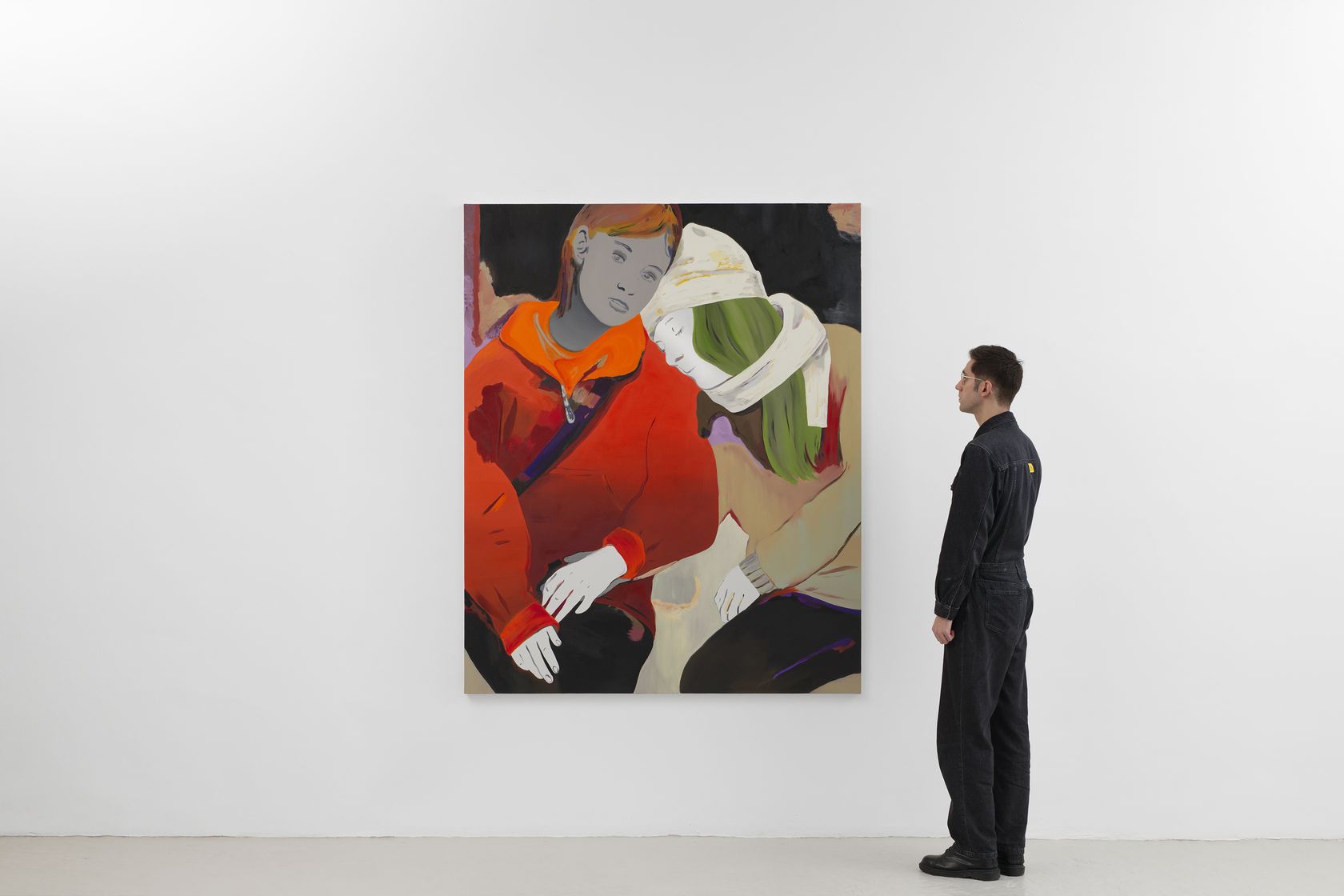
- Françoise Pétrovitch
- Sans Titre , 2023
- Oil on canvas
-
- 190 ×
- 154 × cm
- 74 13/16 ×
- 60 5/8 × inches
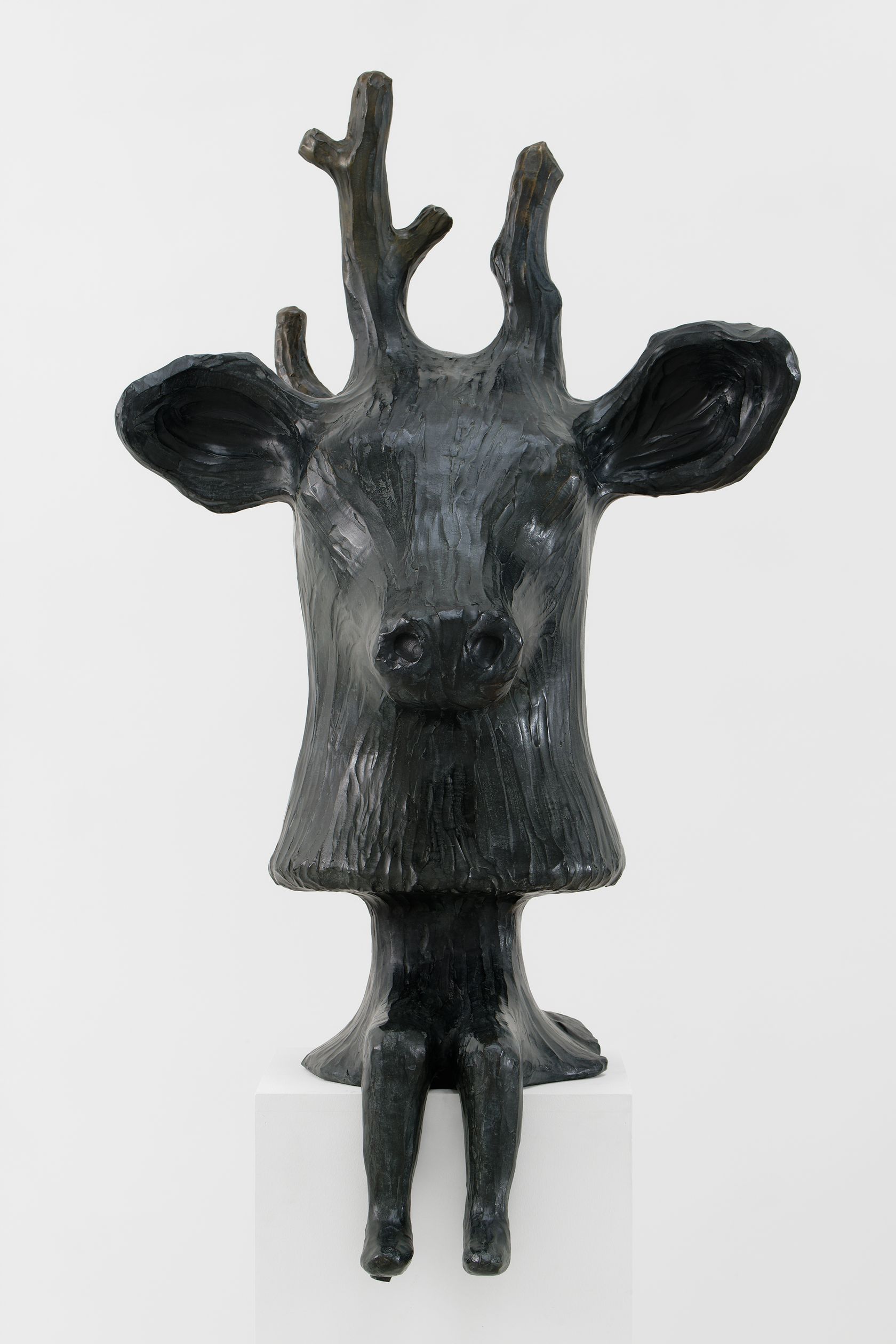
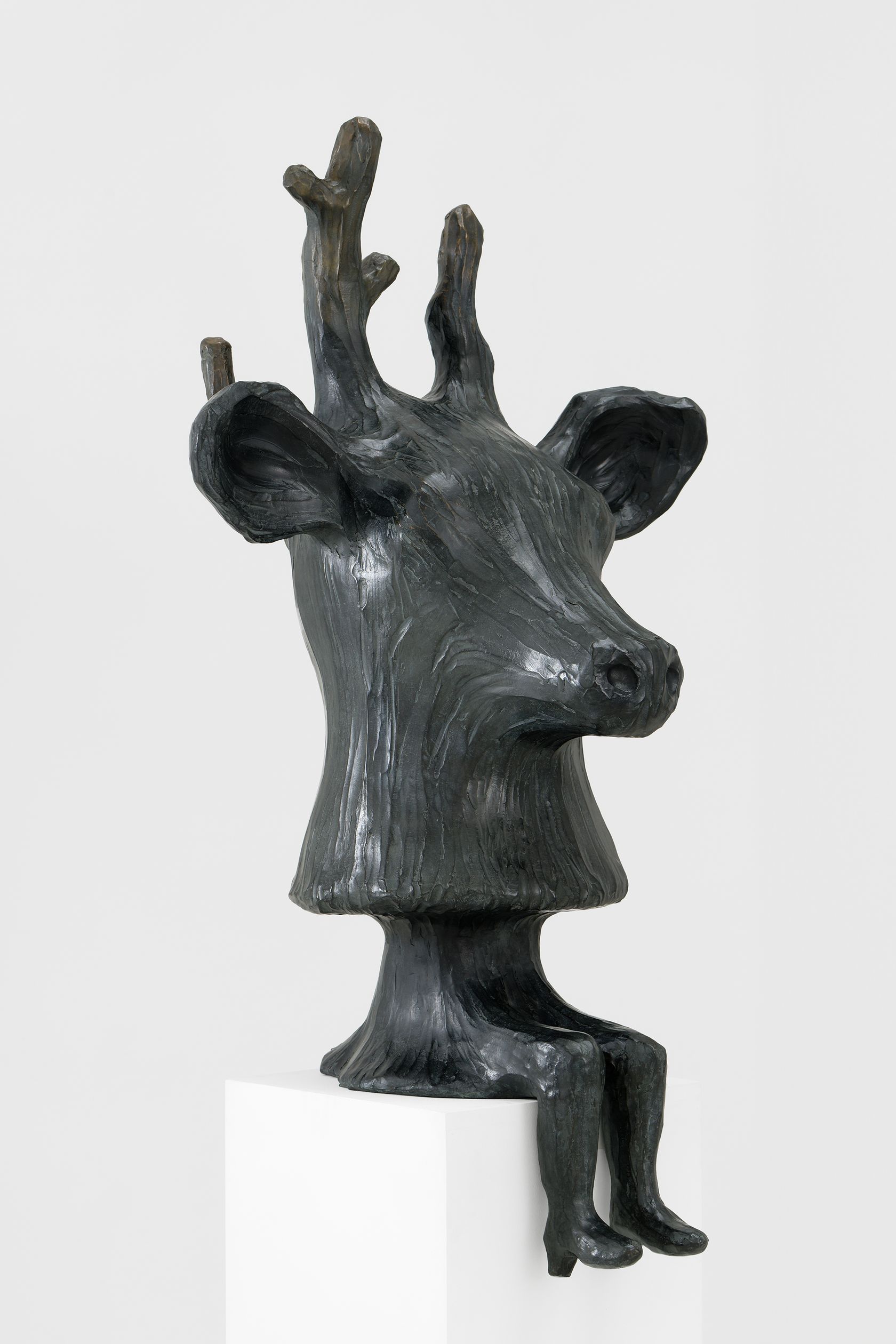
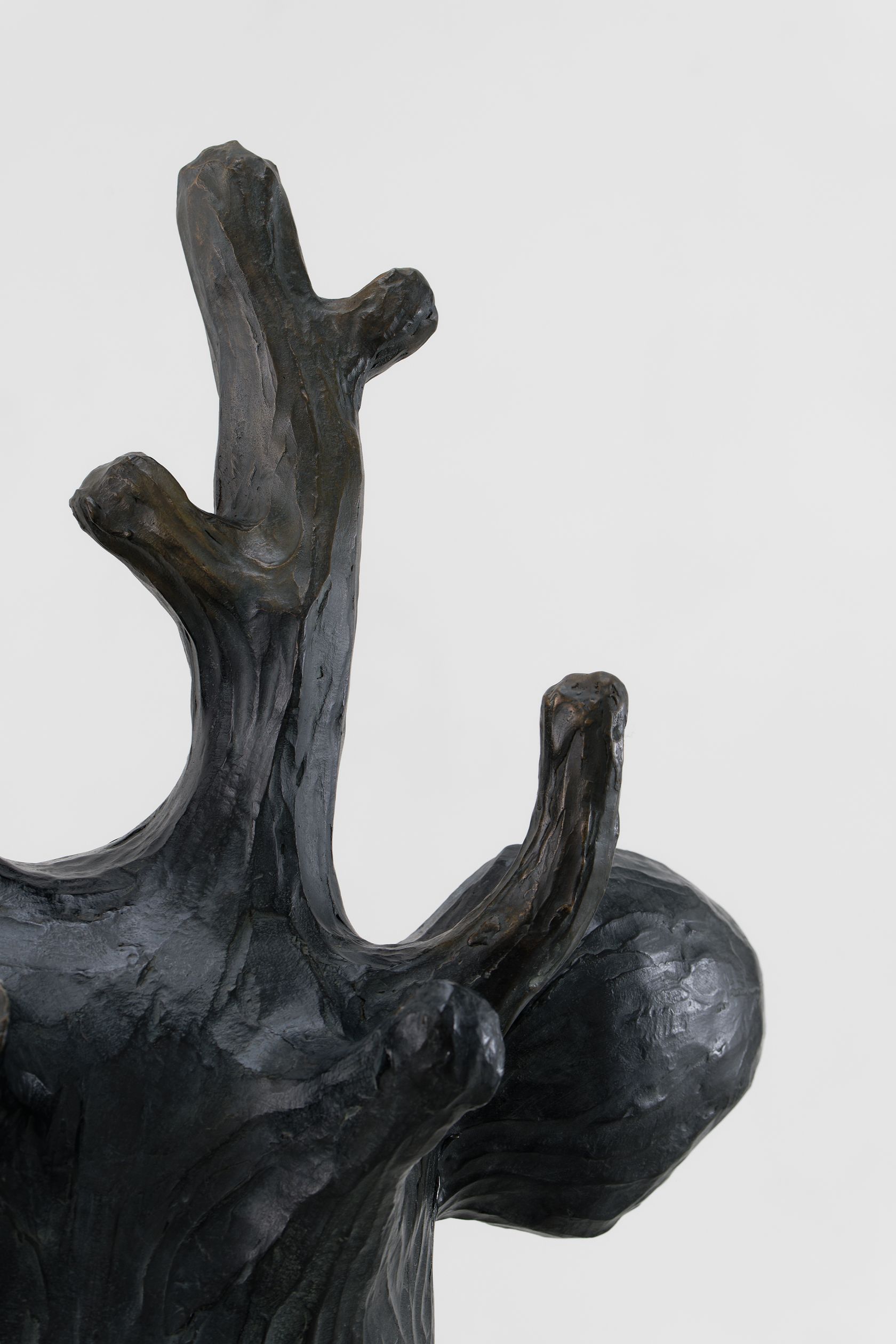
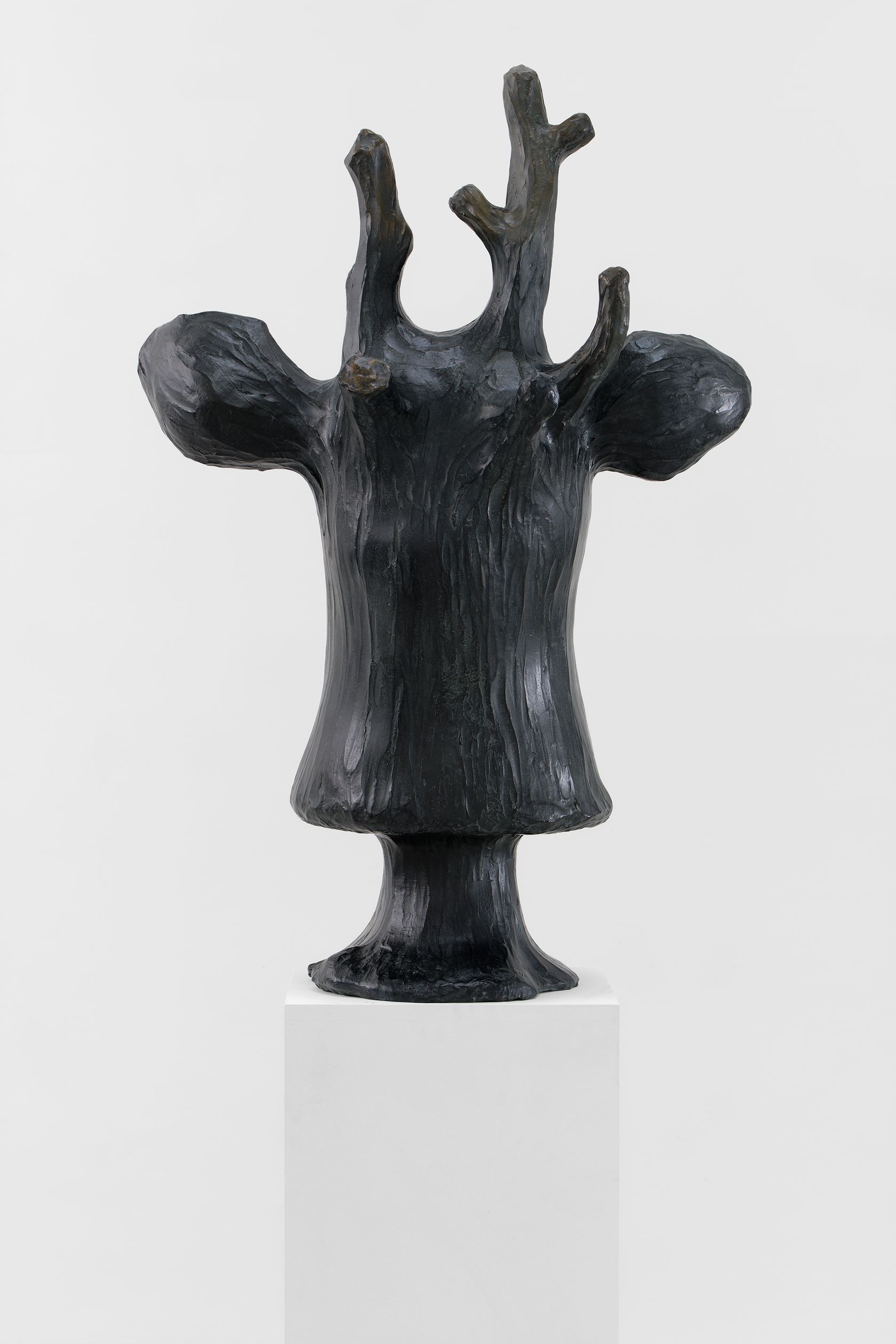
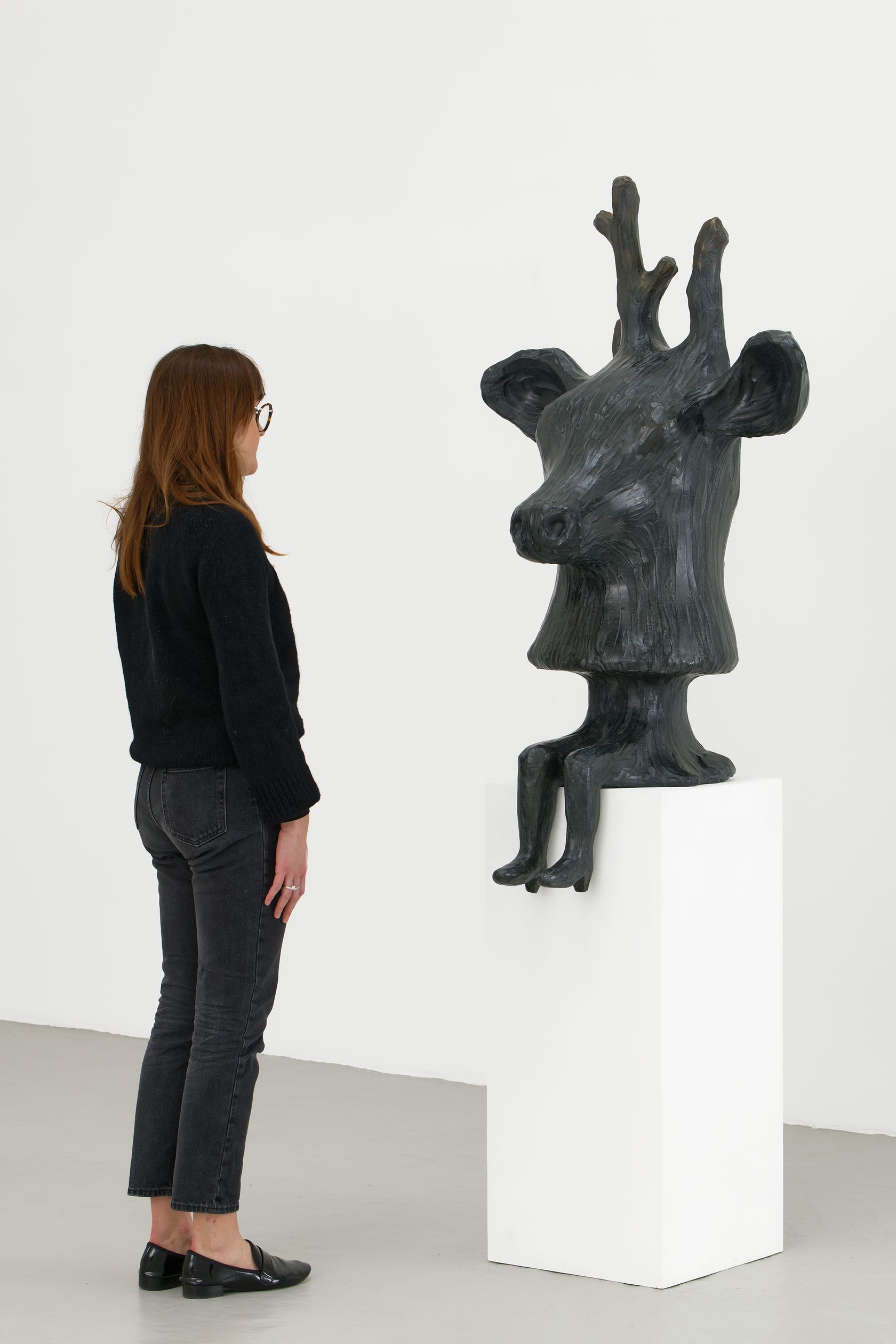
- Françoise Pétrovitch
- Sentinelle , 2023
- Bronze
-
- 130 ×
- 76 ×
- 59 × cm
- 51 3/16 ×
- 29 15/16 ×
- 23 1/4 × inches
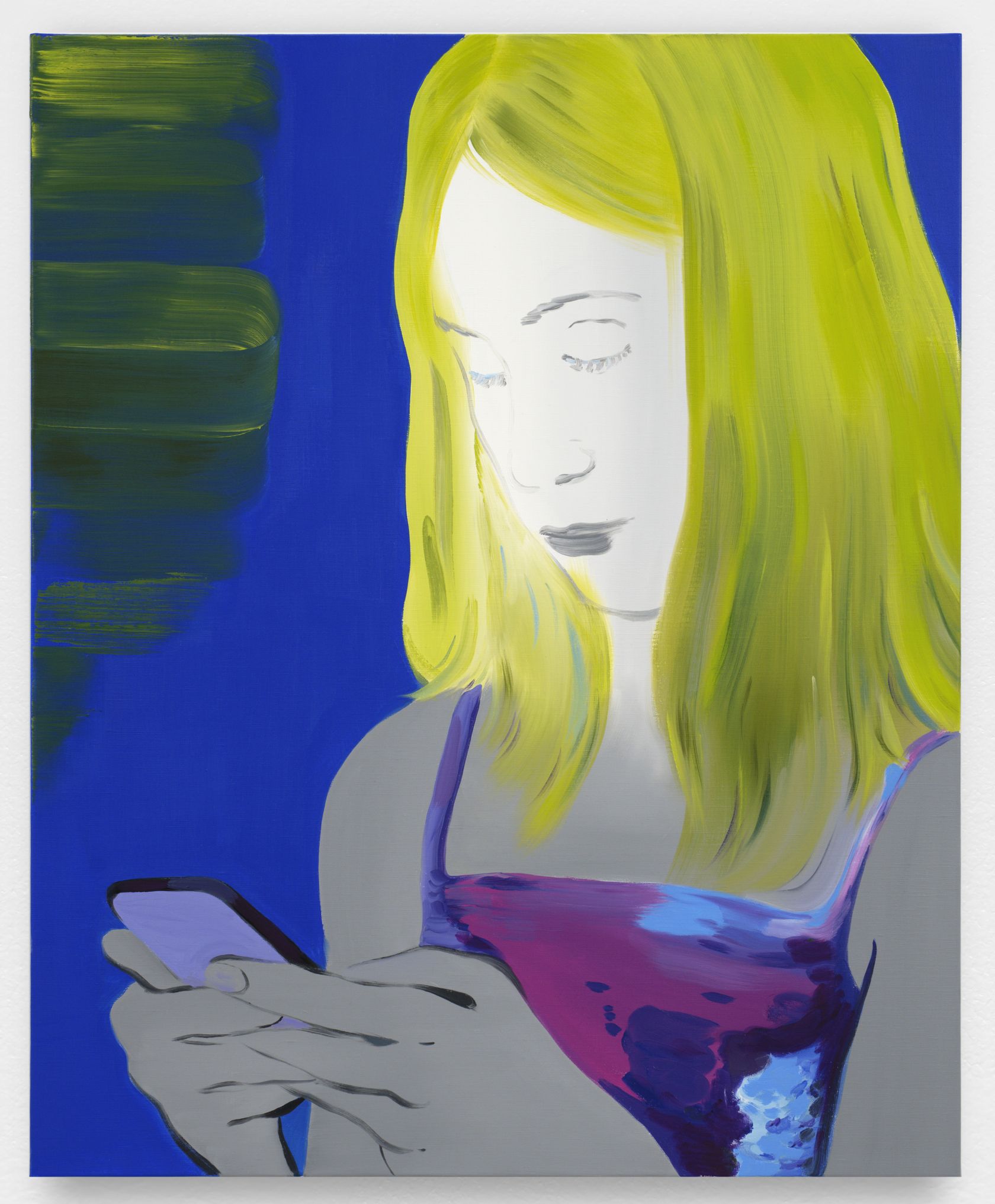
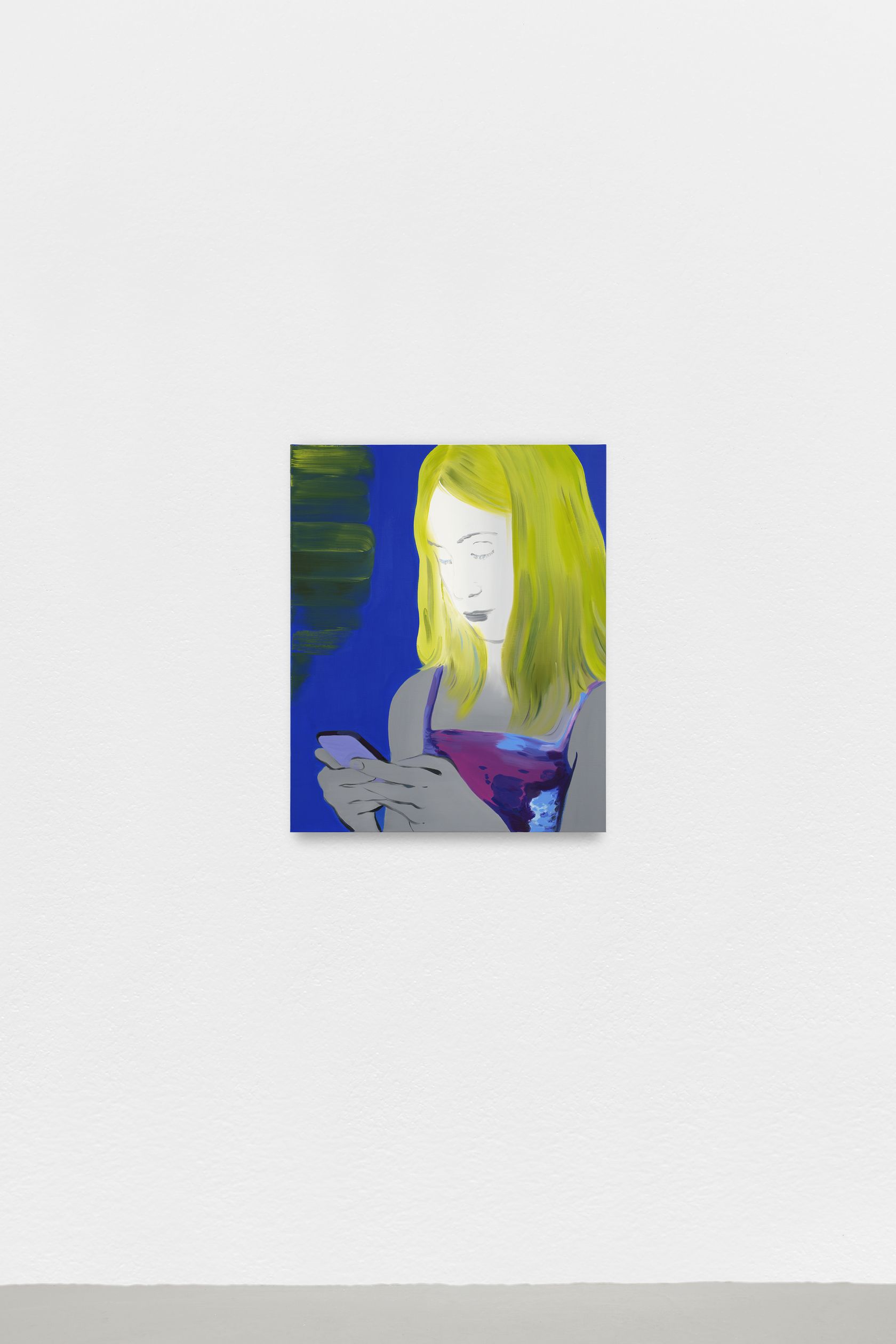
- Françoise Pétrovitch
- Sans titre , 2023
- Oil on canvas
-
- 100 ×
- 81 × cm
- 39 3/8 ×
- 31 7/8 × inches
Born in Versailles in 1980, Laurent Proux lives and works in Paris.
In his painting and drawing, Laurent Proux produces powerful and original imagery that seeks through his formal choices to resolve the questions raised by his subjects. Described by some as a realist due to the subjects he depicts—industrial machinery, workstations, sexualized bodies, etc.—his style finds its emancipation through his never-ending exploration of pictorial solutions, the integration of aberrations, bringing planes into collision, the use of artificial colors, all freeing his oeuvre from the opposition between figuration and abstraction. He approaches the human form through fragments, exaggeration and the use of silhouettes to create a kind of body-cum-machine, politicized and under assault, often disturbing and occasionally sentimental. His canvases take the form of a stage, in an altered perspective and the artist addresses the spectator with a visual and intellectual enigma running through the image.
Laurent Proux’s oeuvres are included in the collections of the National Center for Visual Arts (CNAP), the Occitan, Limousin and Nouvelle-Aquitaine regional contemporary art collections (FRAC) and the Paris Municipal Collection (FMAC). His work has been exhibited at the Mana Contemporary in Chicago (US), the Shanghai Art Museum (CN), the Moscow Center for Contemporary Art (RU), the Musée d’Art Contemporain in Lyon (FR), the Limousin FRAC in Limoges (FR), at the Lieu Commun in Toulouse (FR) and at the Musée d'Art moderne et contemporain de l'Abbaye Sainte-Croix aux Sables-d'Olonne (FR). Laurent Proux was a resident of the Casa de Velázquez in Madrid (ES).
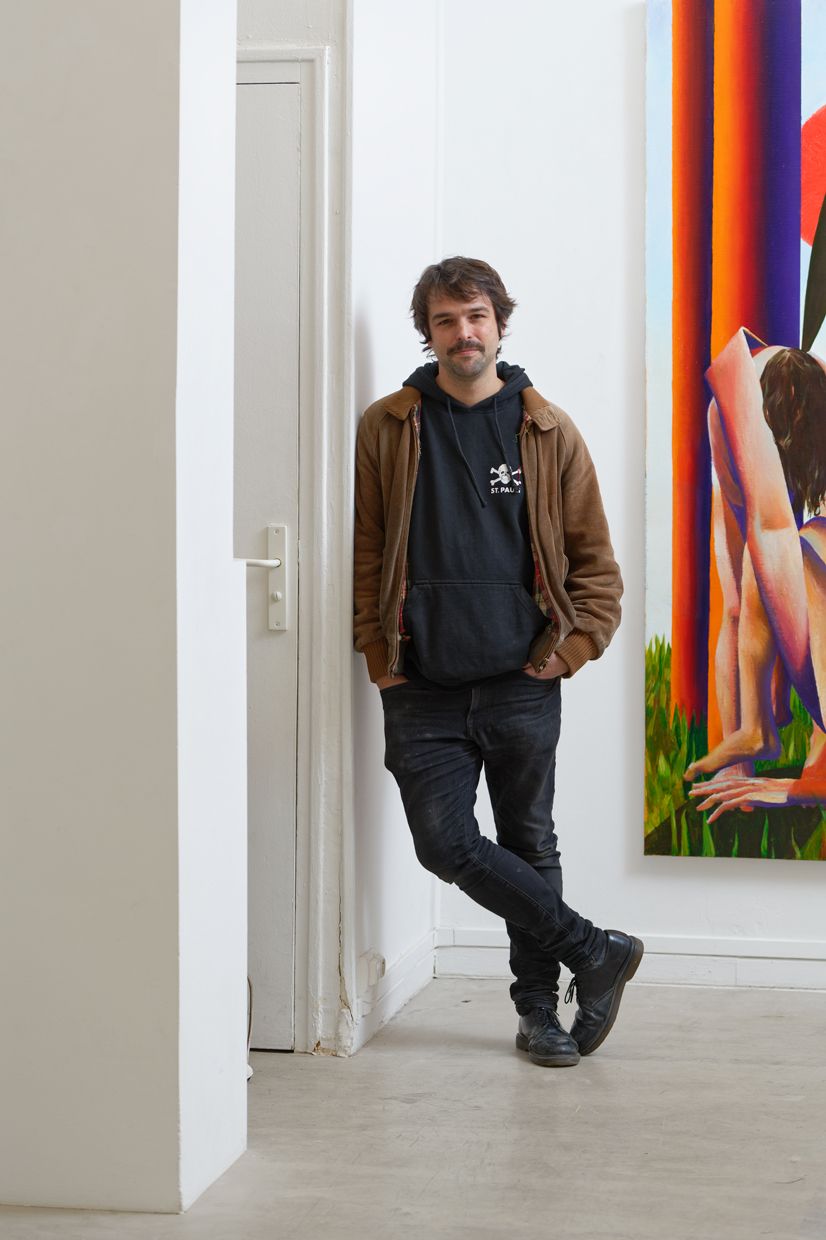
Stefan Rinck’s stone figures form a motley and comical community of, for the most part, animals, chimeras and monsters. They wear costumes and masks; are endowed with particular symbols or characteristics, some bear the names of heroes of Greek mythology or of legend. Rinck’s sculpted figures make up a discordant but related assembly of non-humans: they come from elsewhere, an archaic imaginary world, woven from myths and legends. With his collection of fauna, the artist is exploring a comical, imaginary yet realistic vein, breathing new life into its iconography, using a technique typical of the Middle Ages: sculpting his figures directly from stone.
Rinck’s sculptures remind us of the figures of Roman art, which populate the columns and tympana of churches. They share the same morphology and style, the hybrid aspect of the chimera and monster. These are grotesque figures, in which we recognize the vitalist comedy typical of medieval realism which could be observed during the parades of jesters and buffoons at religious and popular festivities. Yet if the Middle Ages seem to color Rinck’s art, its frame of reference in fact crystalizes around a number of “Gothic” obsessions of the Romantic kind: a taste for mythology and folk tales, for different epochs and cultures for the fantastic or figures of hubris and excess.
Stefan Rinck’s work has been subject to many exhibitions in Athens, Berlin, Brussels, Los Angeles, Madrid, Munich, Paris and features in the collections of the Frac Corse, Corte, (FR), the CBK Rotterdam (NL) and the Museum De Hallen, Haarlem (NL). In 2018, the work The mangust of Beauvais is installed permanently in the city of Paris at 53-57 rue de Grennelle (Beaupassage). In 2019, Stefan Rinck is part of the 100 Sculptors of Tomorrow published by Thames & Hudson.
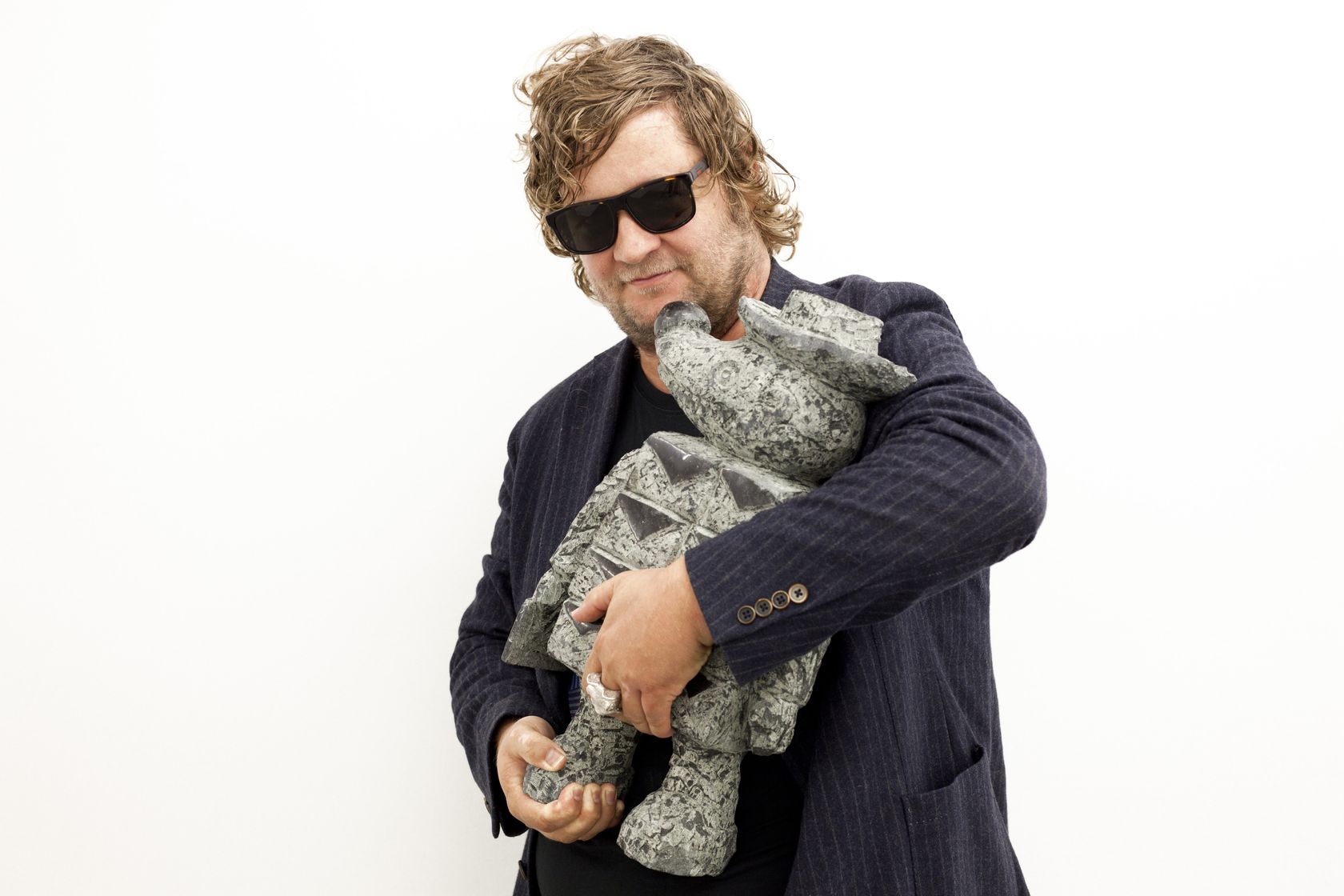
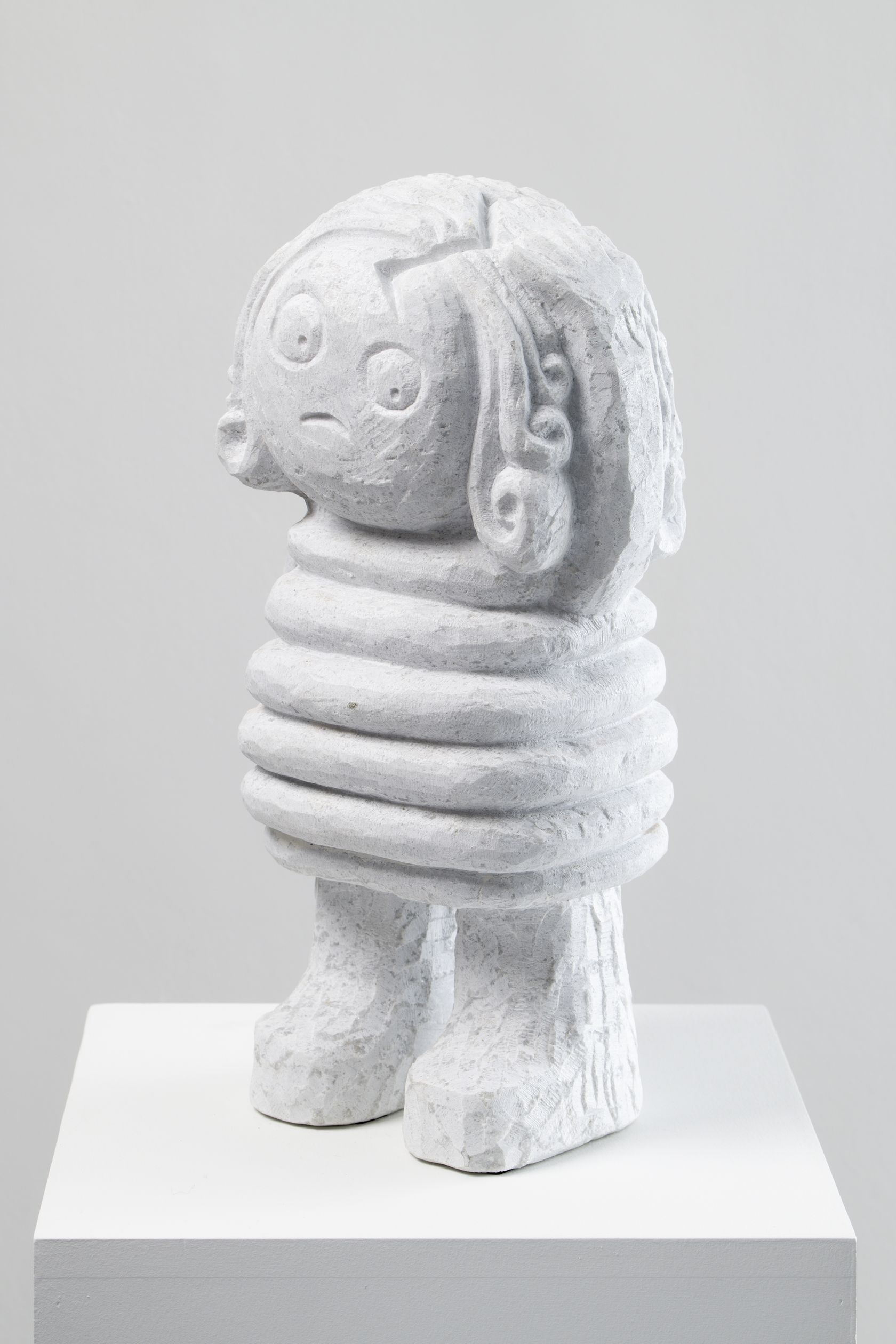
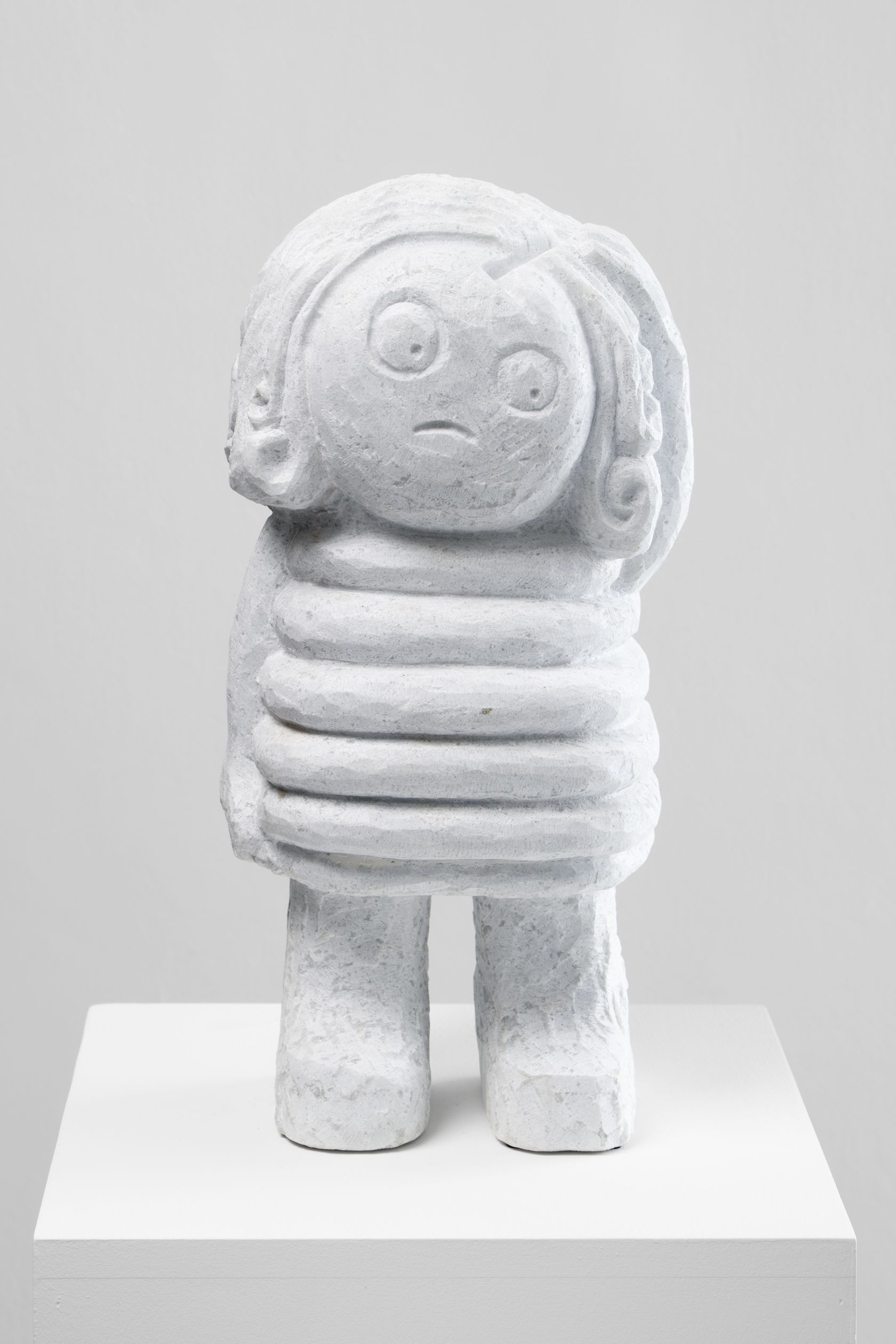
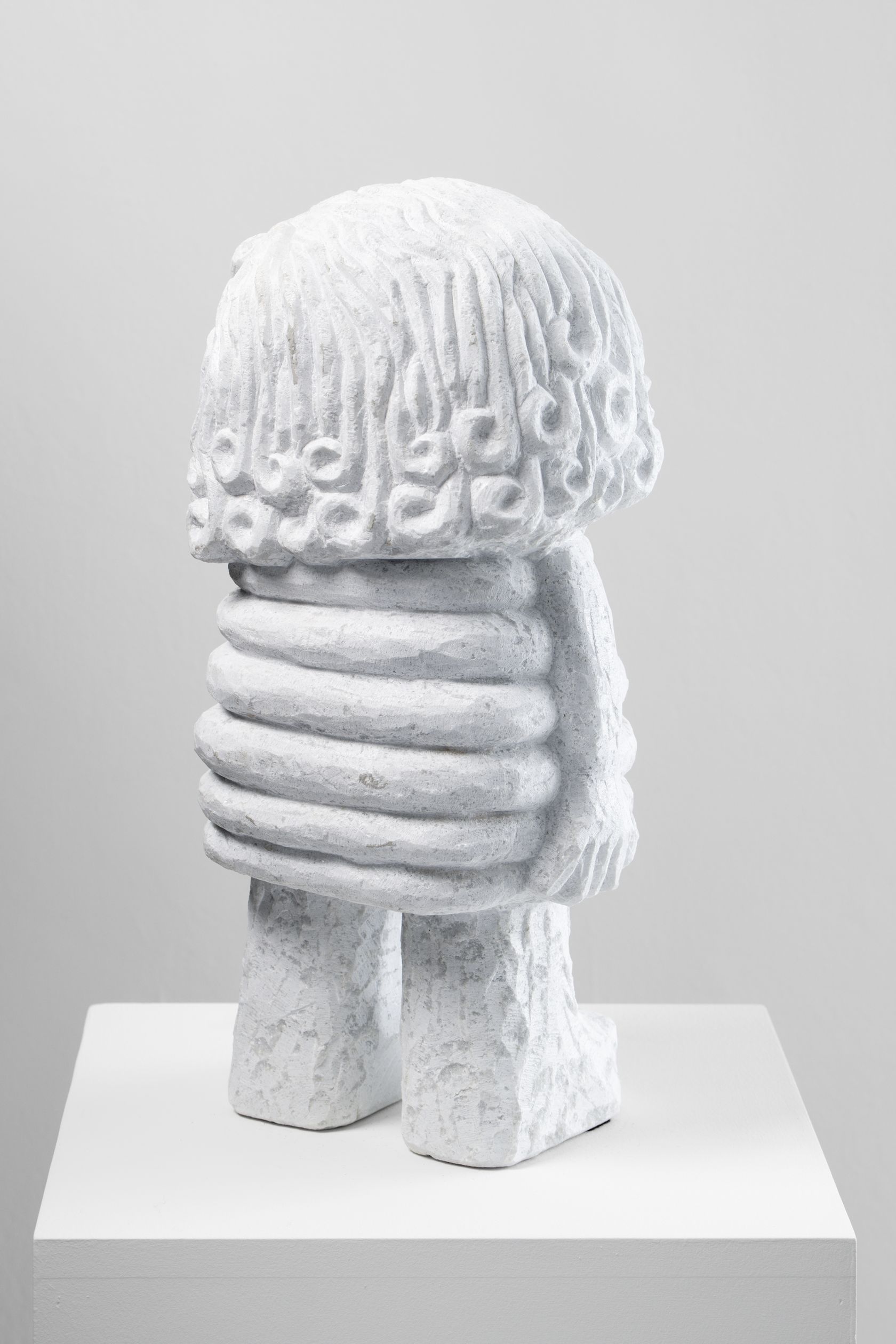
- Stefan Rinck
- Headache , 2022
- Marble
-
- 50 ×
- 25 ×
- 20 × cm
- 19 11/16 ×
- 9 13/16 ×
- 7 7/8 × inches
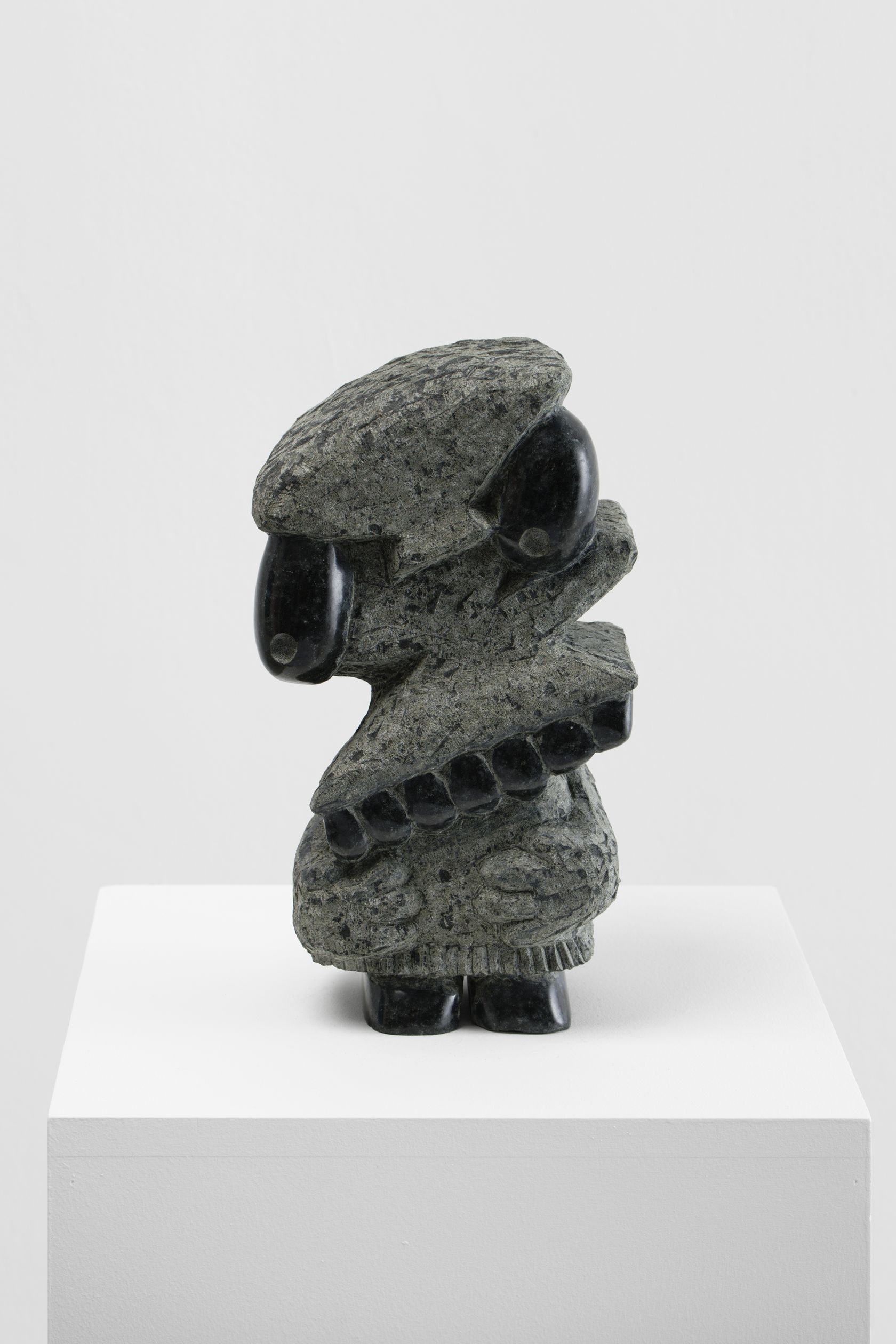
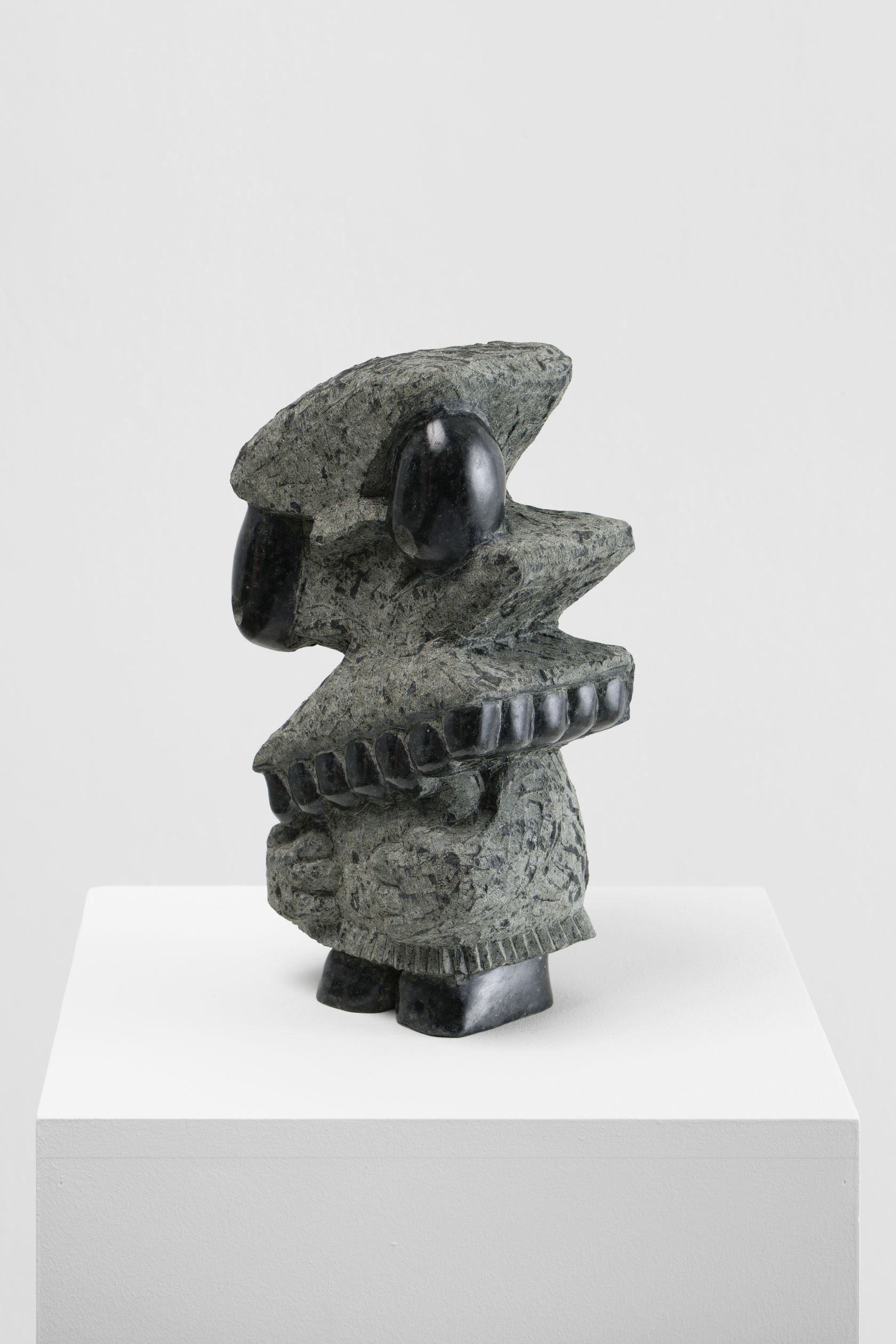
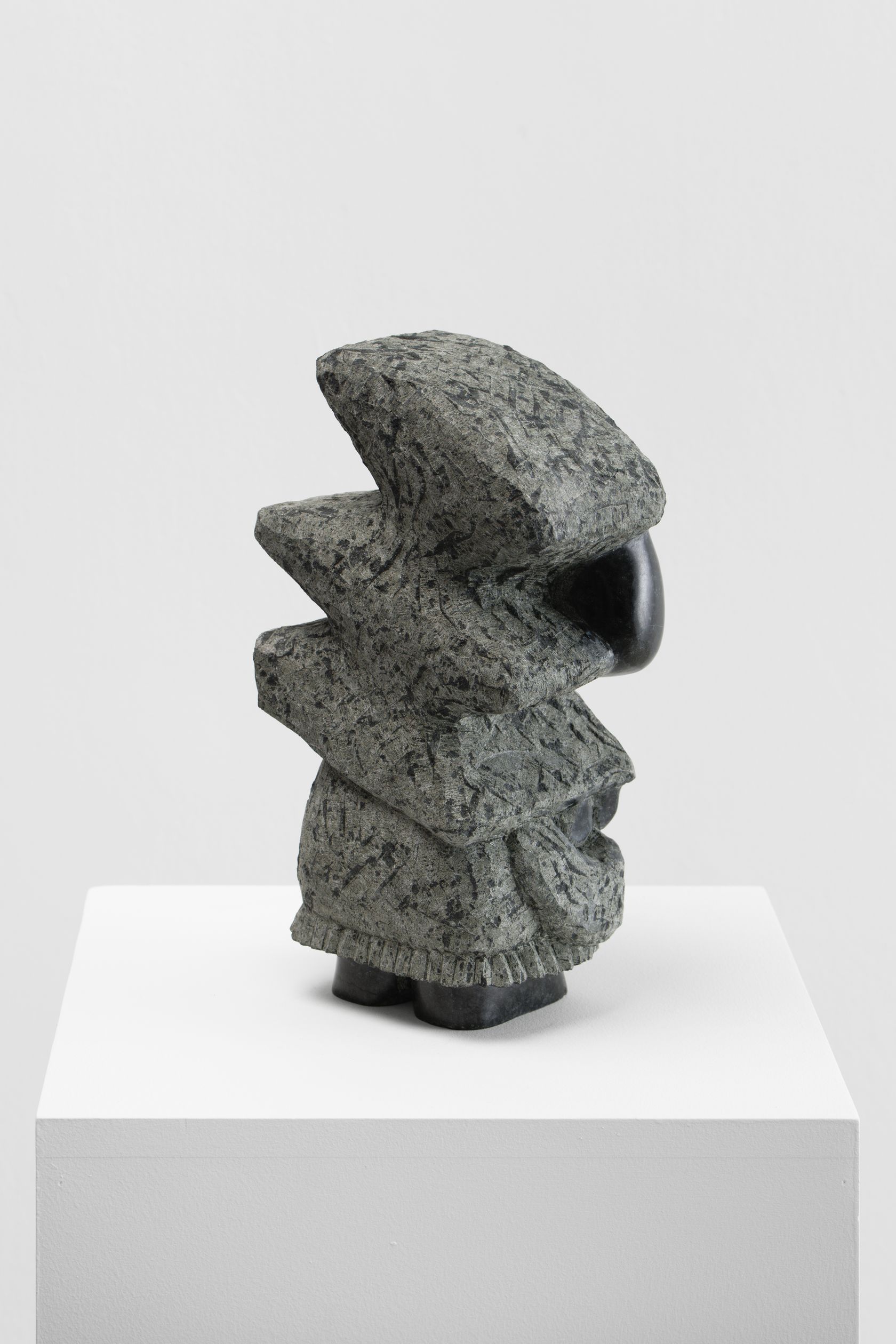
- Stefan Rinck
- Dieter , 2022
- Diabase
-
- 35 ×
- 20 ×
- 13 × cm
- 13 3/4 ×
- 7 7/8 ×
- 5 1/8 × inches
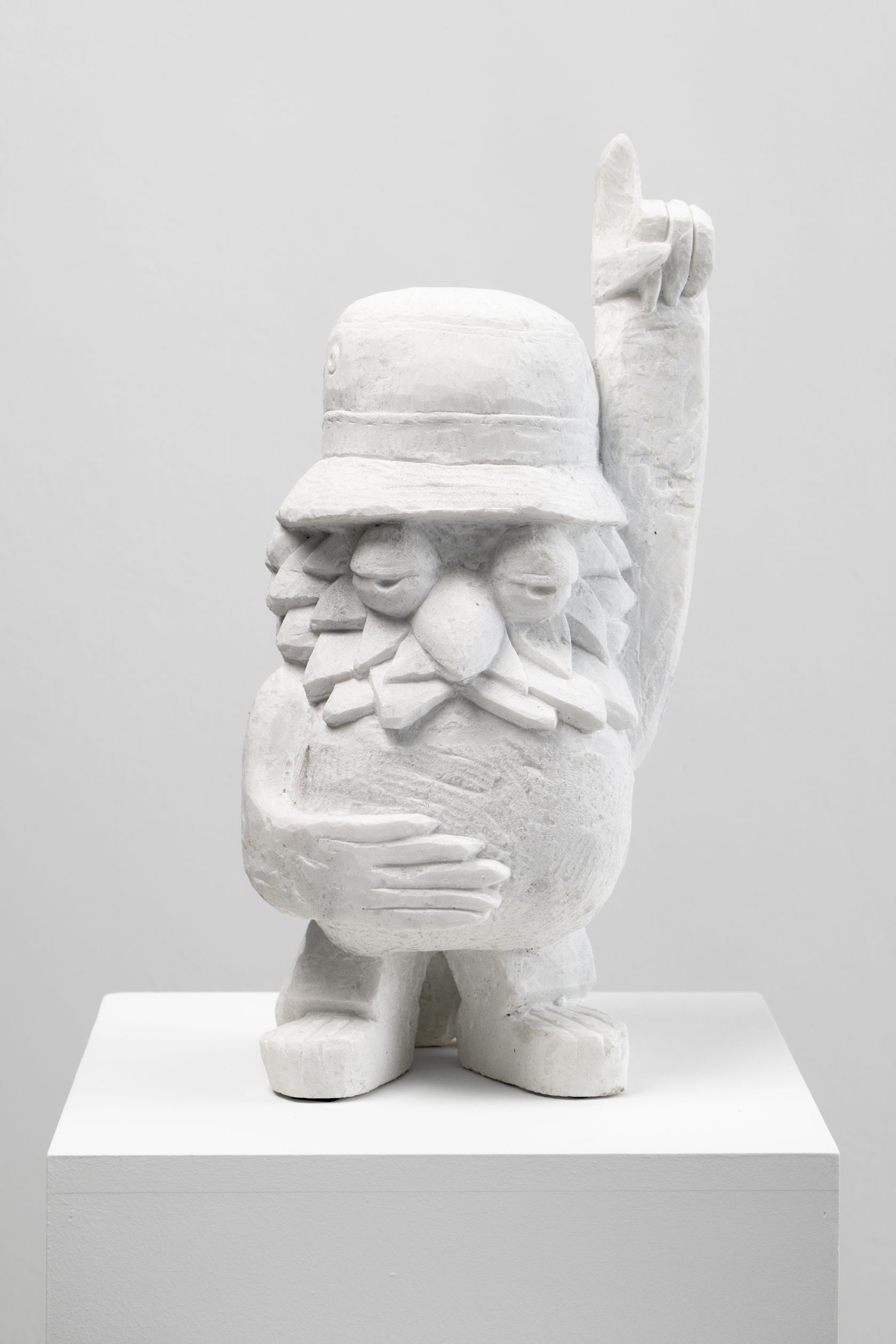
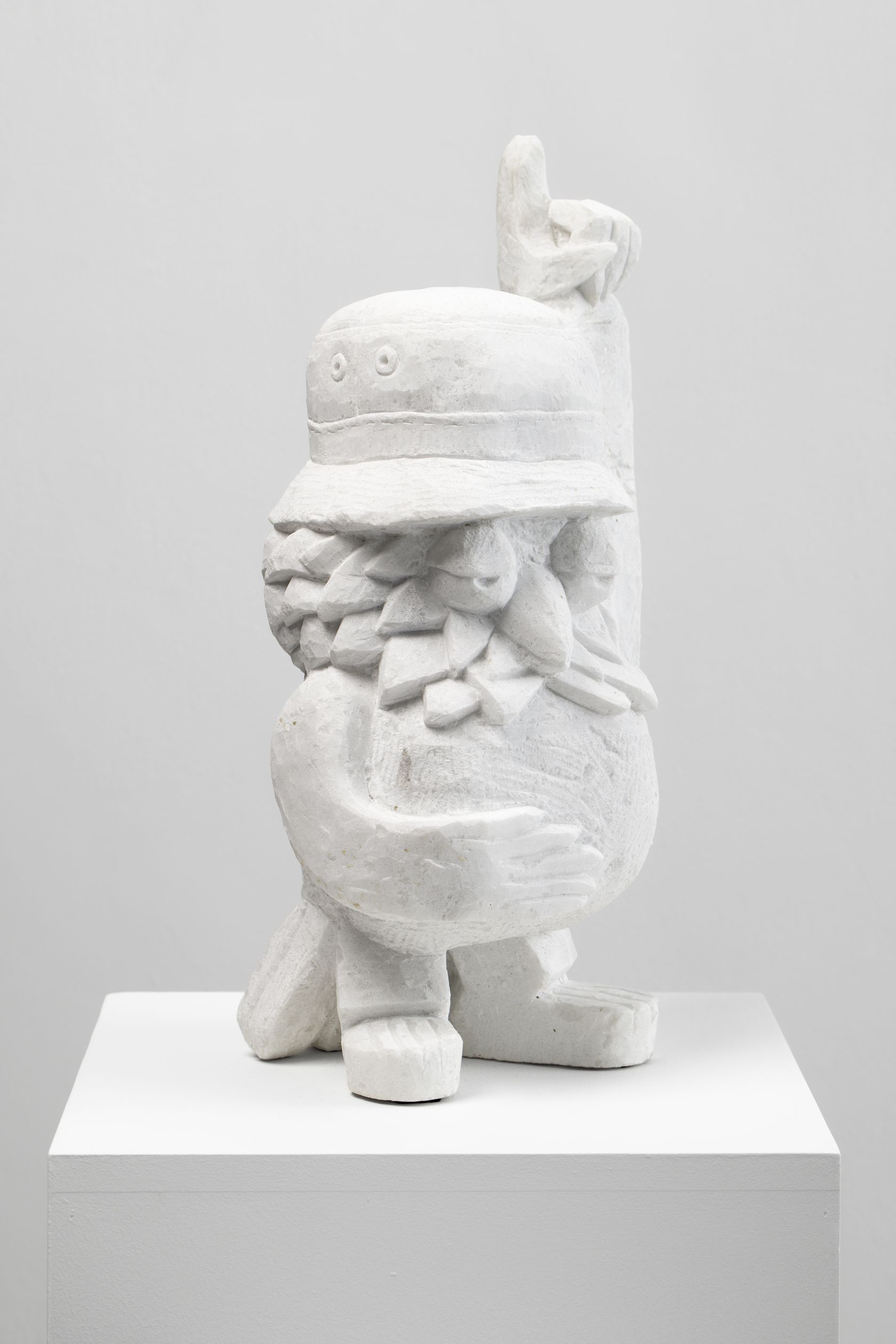
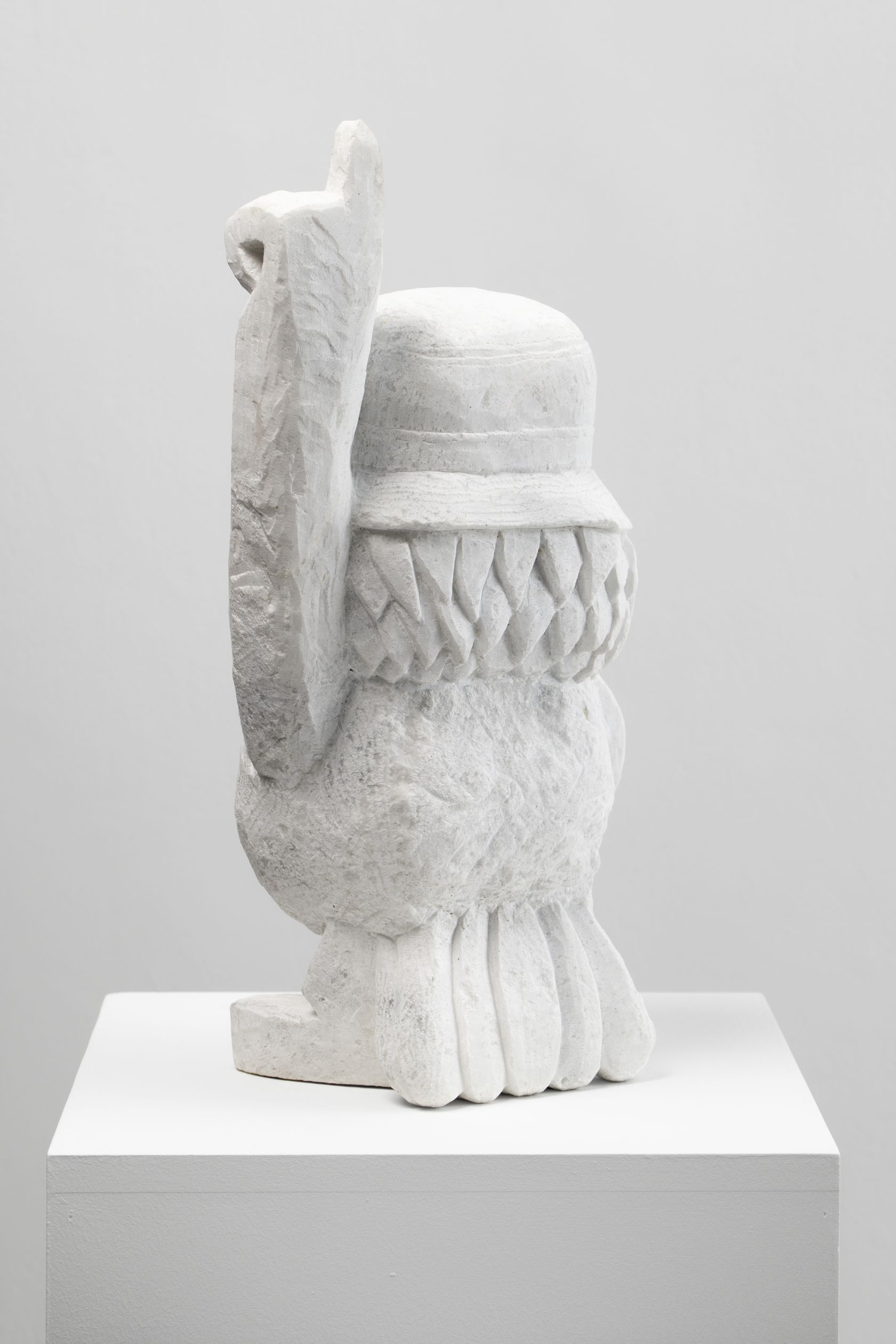
- Stefan Rinck
- Sven , 2022
- Marble
-
- 53 ×
- 26 ×
- 20 × cm
- 20 7/8 ×
- 10 1/4 ×
- 7 7/8 × inches
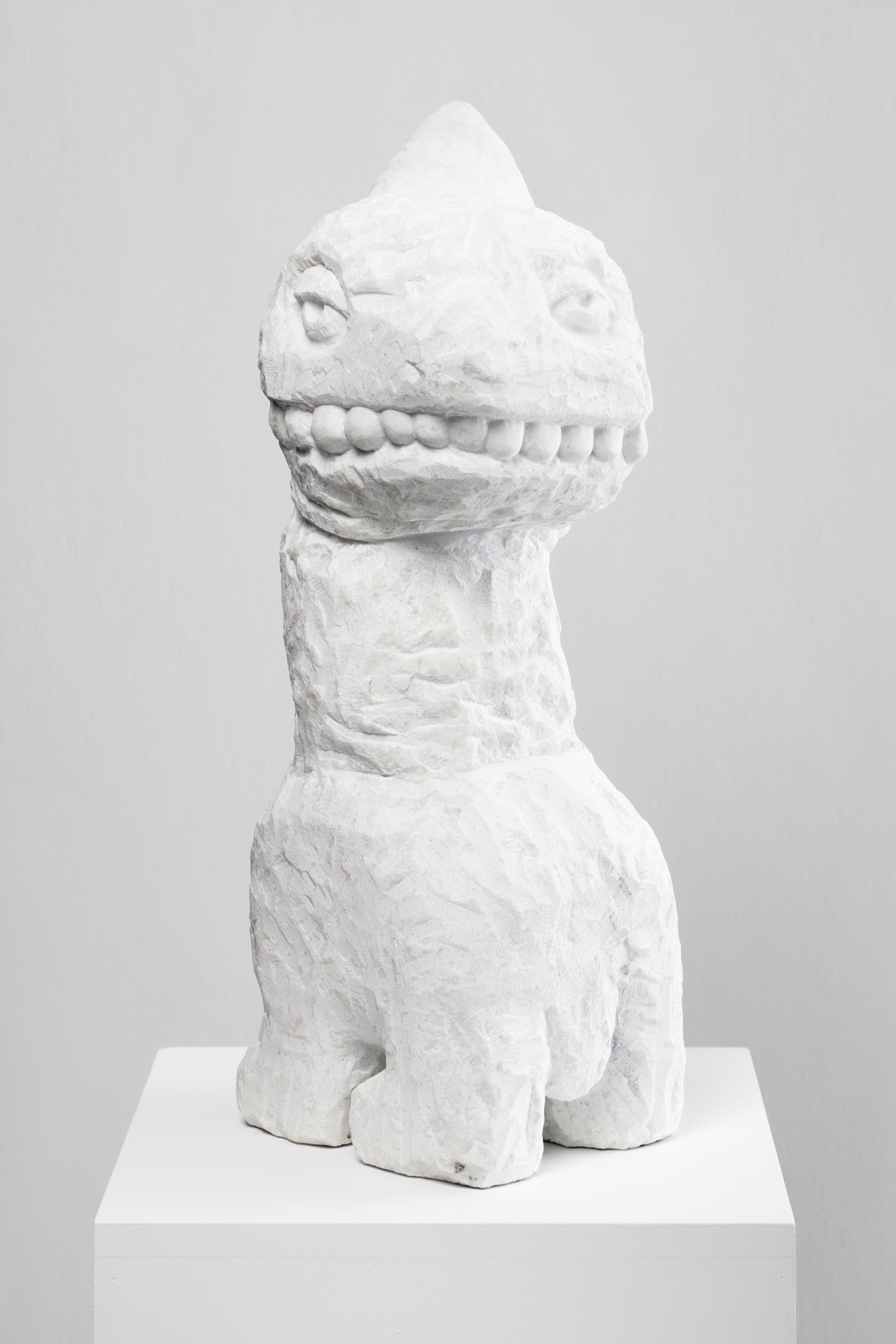
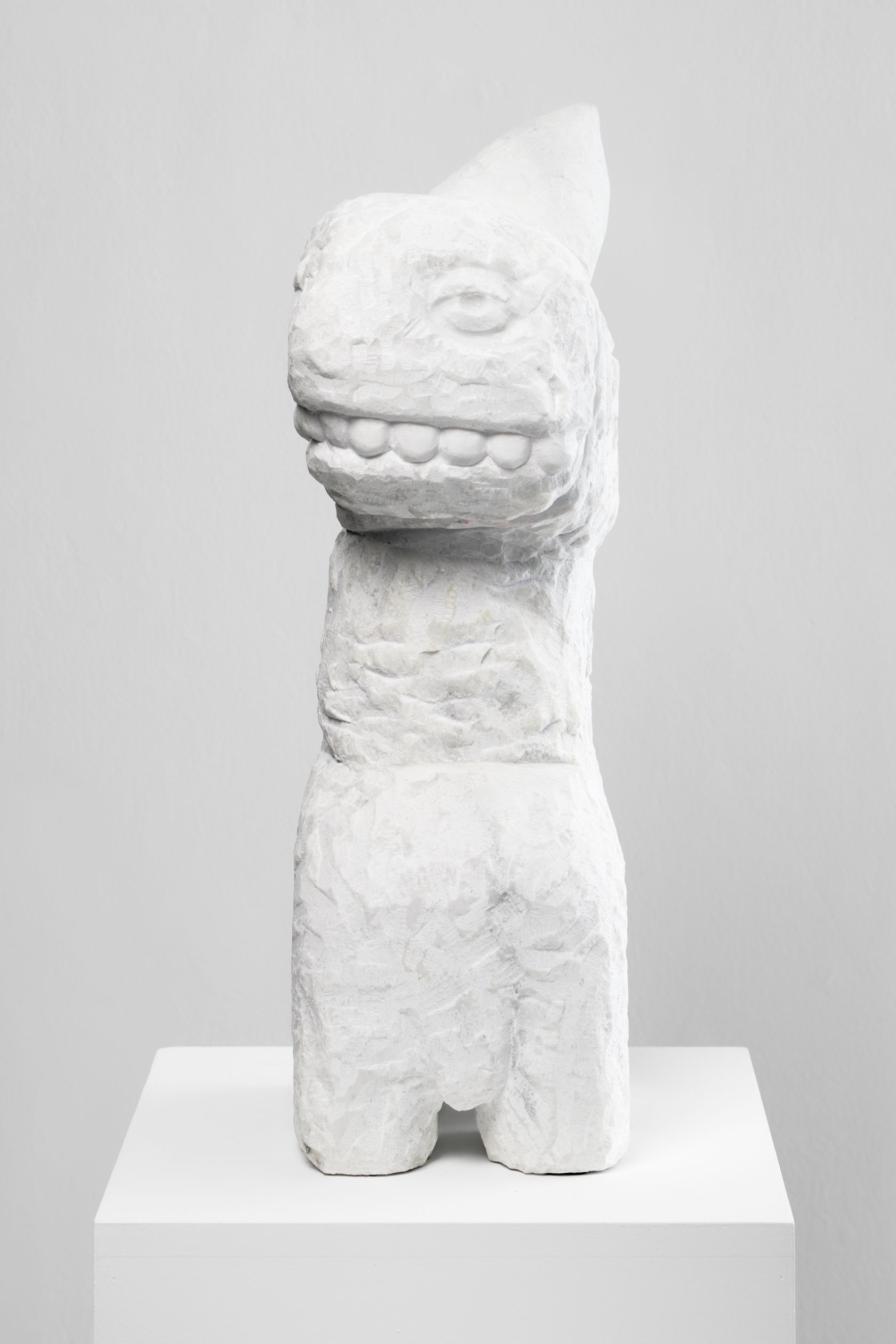
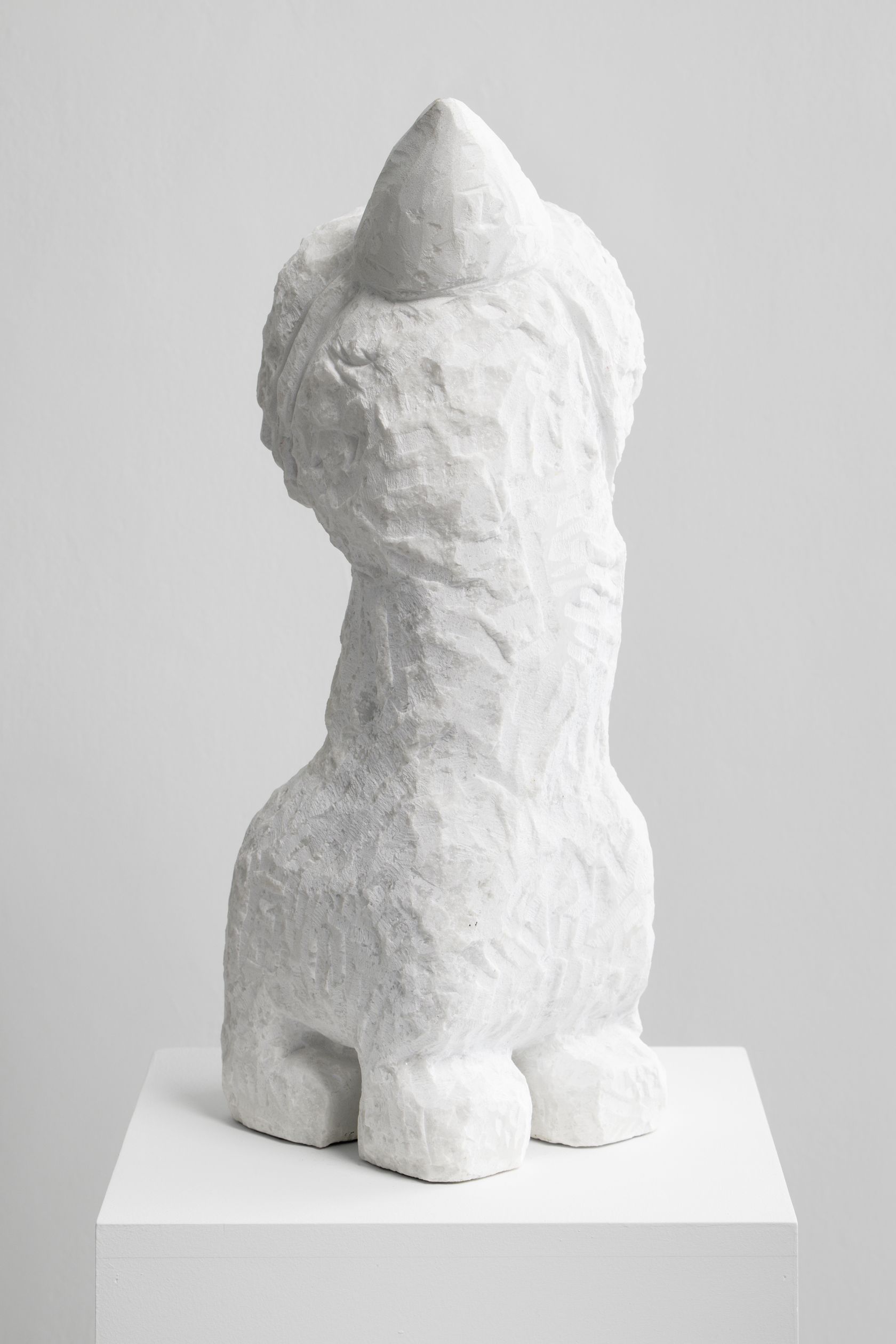
- Stefan Rinck
- Fratzengulasch , 2023
- Marble
-
- 65 ×
- 24 ×
- 20 × cm
- 25 9/16 ×
- 9 7/16 ×
- 7 7/8 × inches
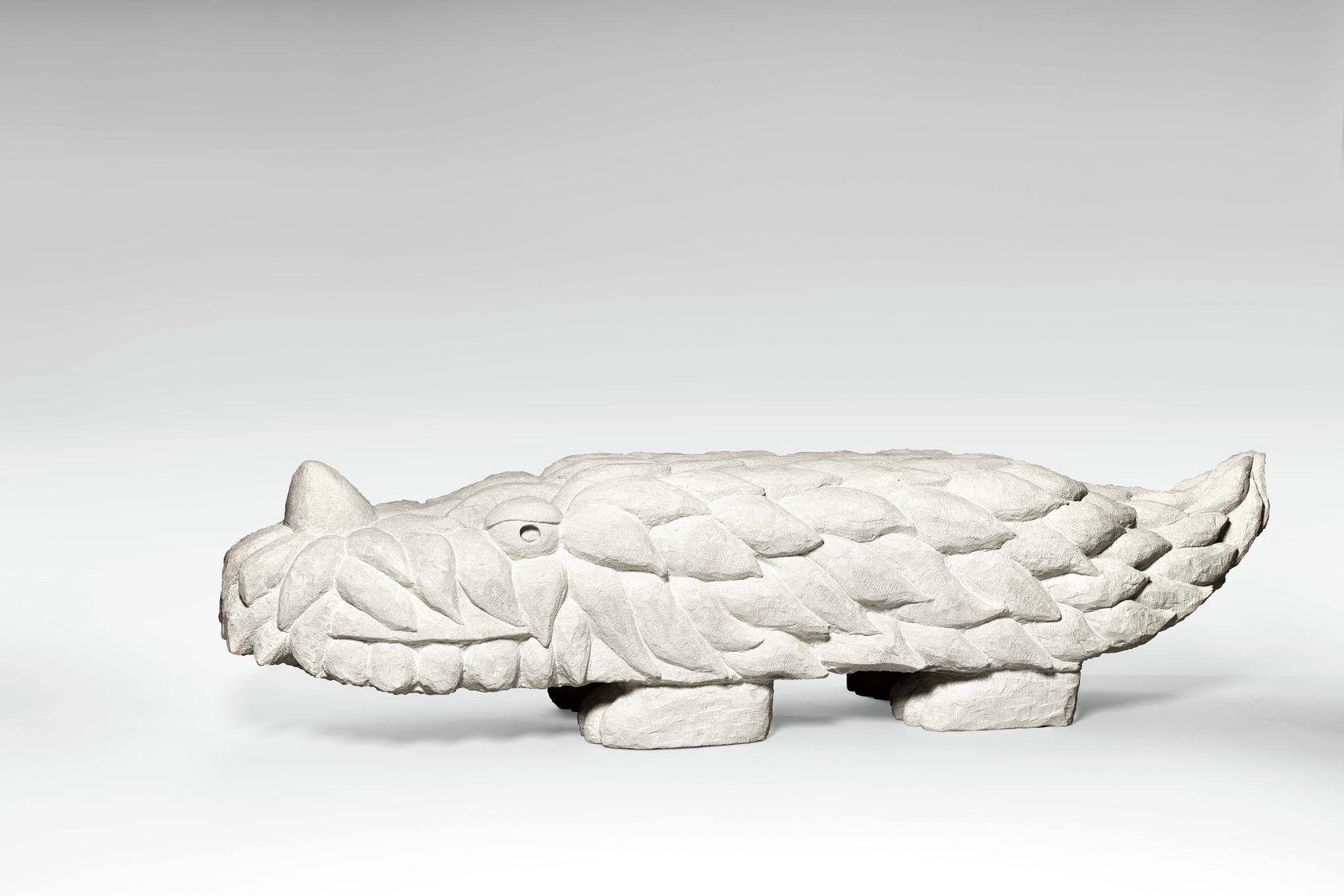
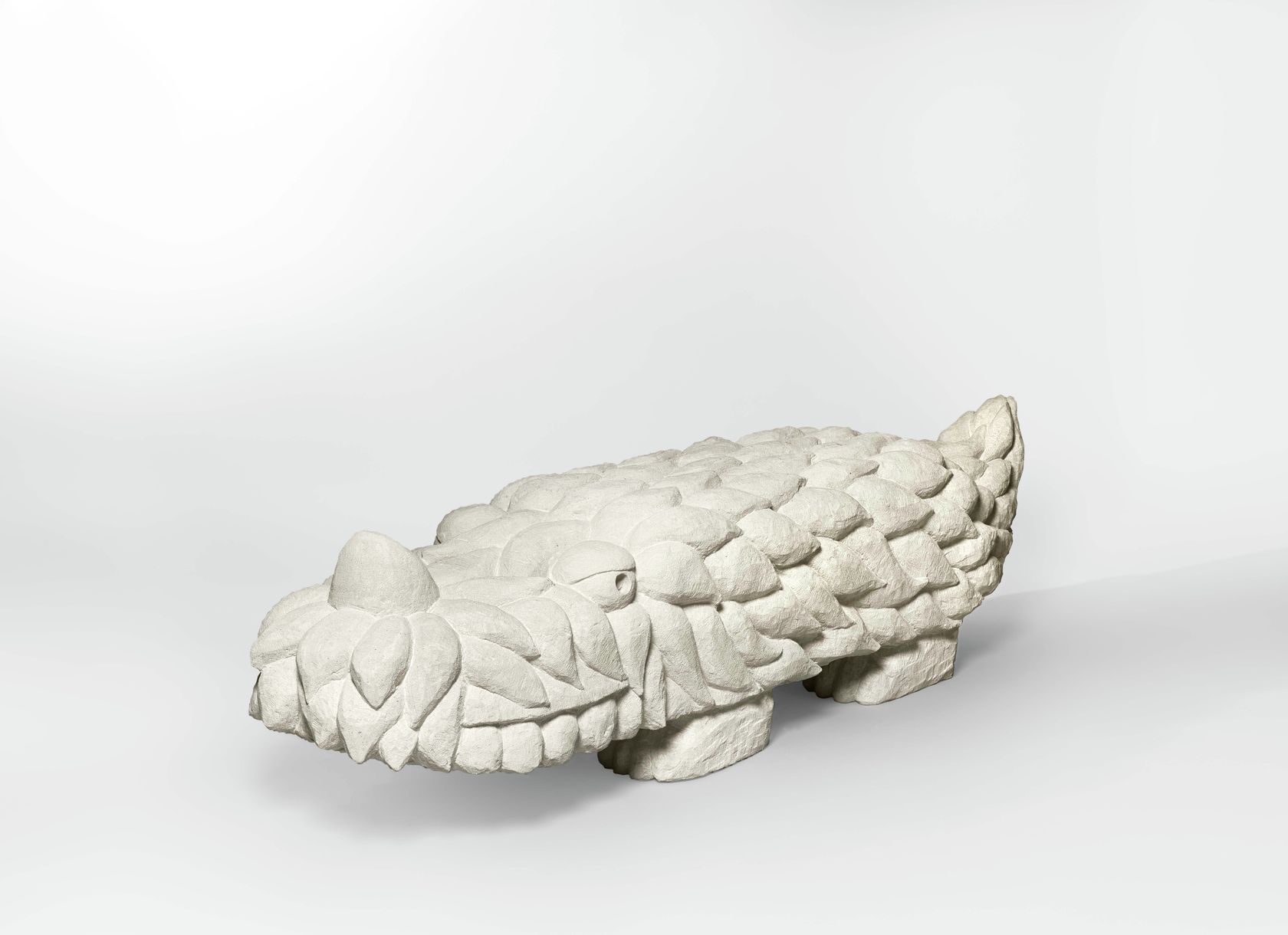
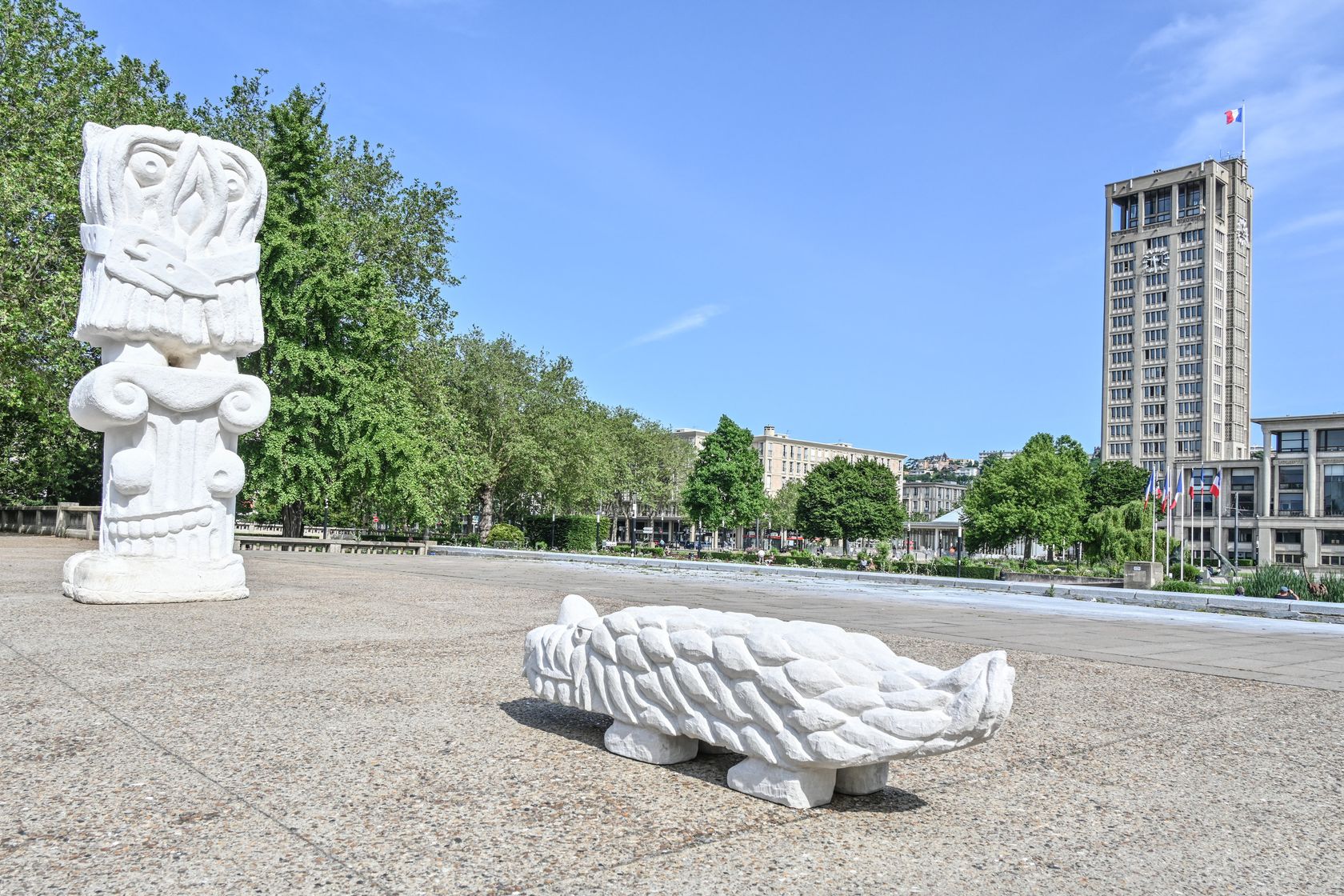
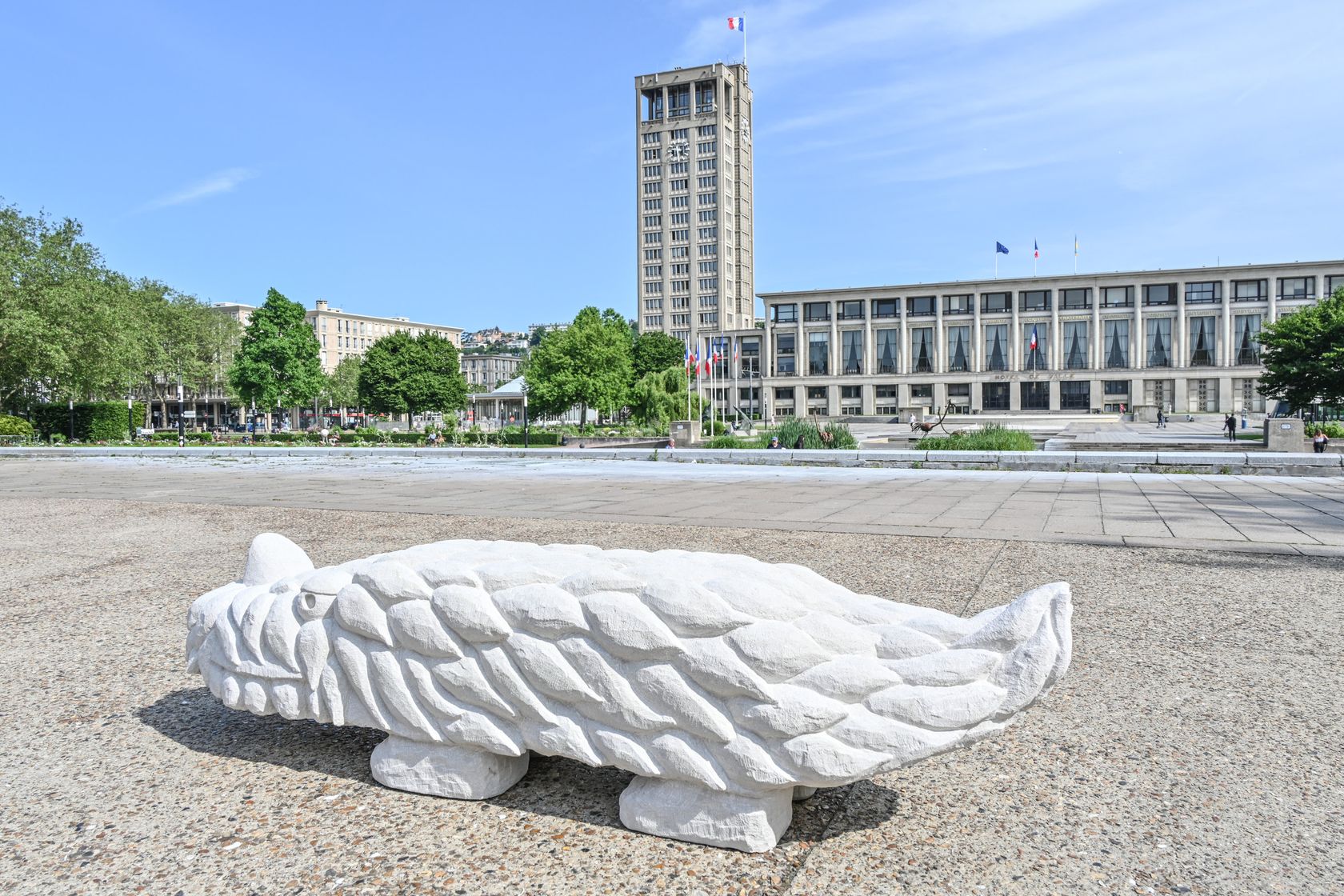
- Stefan Rinck
- Buffalo Croc , 2022
- Sandstone
-
- 50 ×
- 50 ×
- 210 × cm
- 19 5/8 ×
- 19 5/8 ×
- 82 5/8 × inches
Moffat Takadiwa creates large format sculptures from materials found on garbage dumps, notably computer parts, plastic bottle-caps, toothbrushes and toothpaste tubes. After gathering great quantities of these small objects and sorting them by color and shape, the artist weaves these discarded scraps into rich wall hangings. Once suspended, these post-industrial fabrics, through their intricate beauty, acquire an aura of ritual or totemic artifacts.
Born in 1983, Moffat Takadiwa lives and works on the outskirts of Harare in Mbare, one of the largest recycling centers in the country and an important hub for the informal economy. Belonging to the post-independence generation, his work reflects his preoccupation with issues such as consumerism, inequality, post-colonialism and the environment. Since the earliest days of his artistic career, he has used his practice as a platform for the rehabilitation of his community, working with young local artists and designers, with a view to founding the world first artistic center based on the use of reclaimed materials.
Moffat Takadiwa has exhibited his works in the major institutions of Zimbabwe as well as abroad, most notably at the Craft Contemporary (US), during the exhibition organized by Jeffrey Deitch and Gagosian at the Moore Building in Miami (US), at the ARoS Kunstmuseumat, Aarhus (DK), the Jameel Arts Center, Dubai (AE), the MACAAL, Marrakesh (MA) and the Arnhem Museum (NL). His works are included in numerous public and private collections including the CNAP, Paris (FR), the FRAC Alsace (FR) The Fondation H, Antananarivo (MG), The Jameel Arts Center, Dubai (AE), The Arsenal Contemporary Art, Toronto (CA) and the CC Foundation, Shanghai (CN).
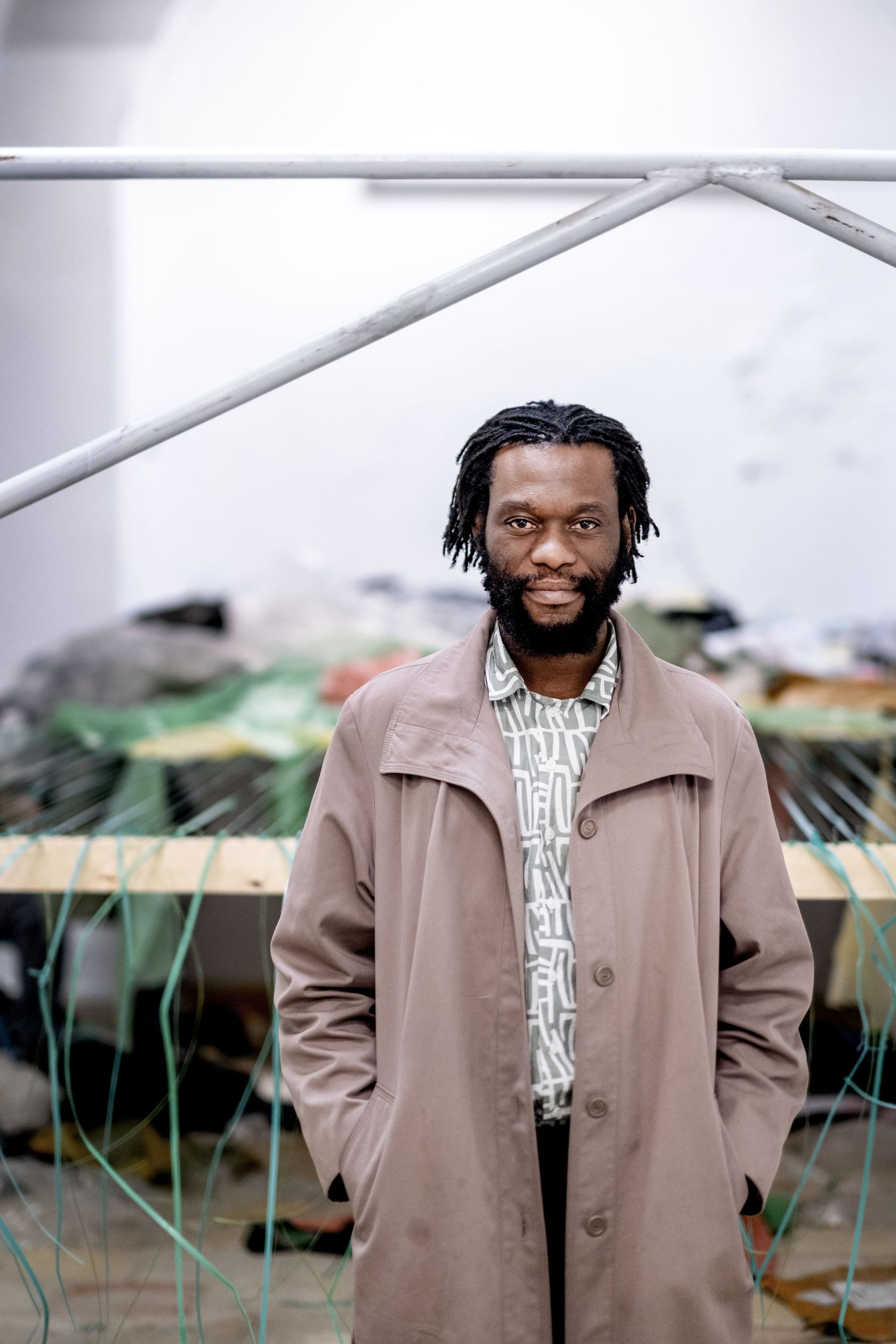
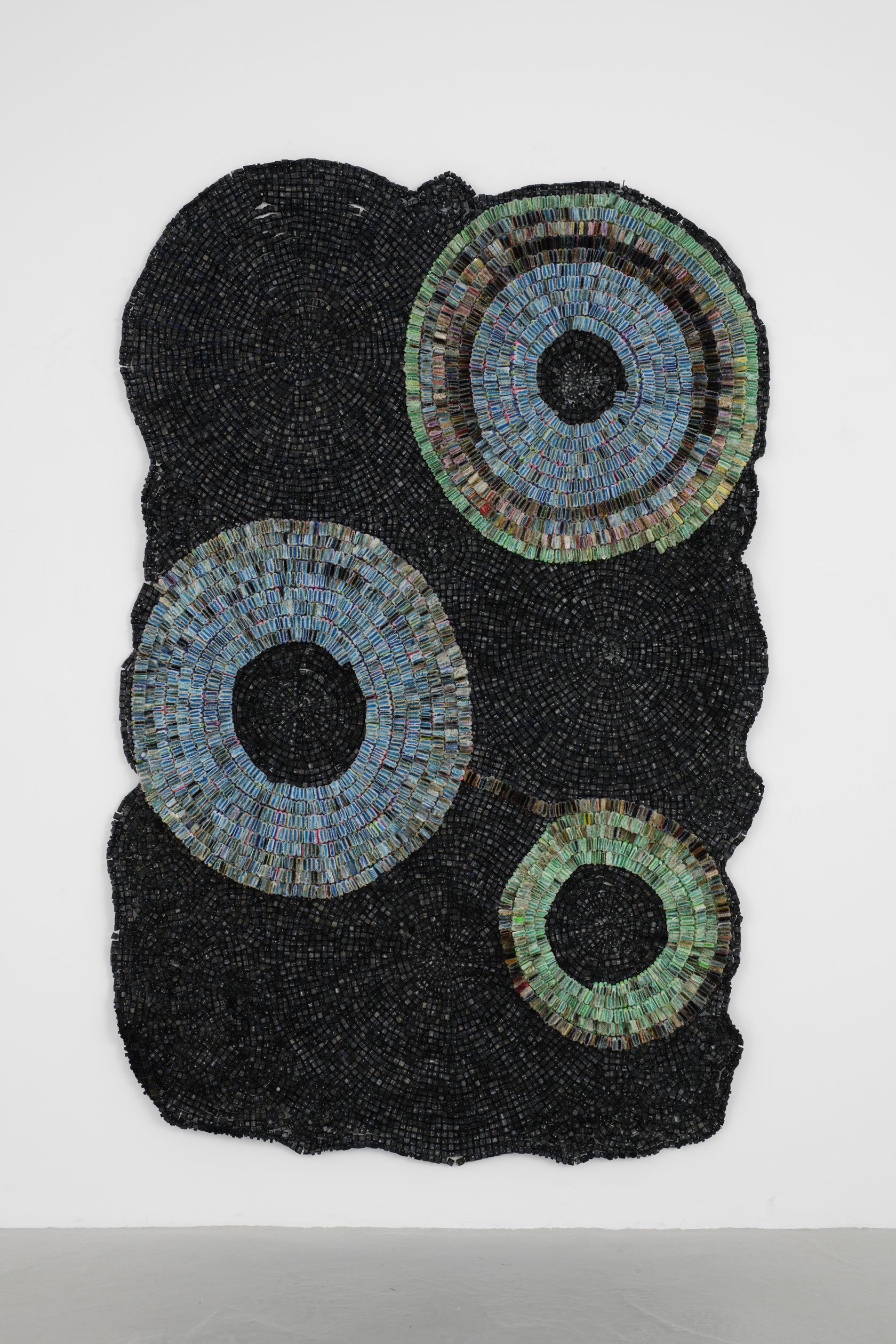
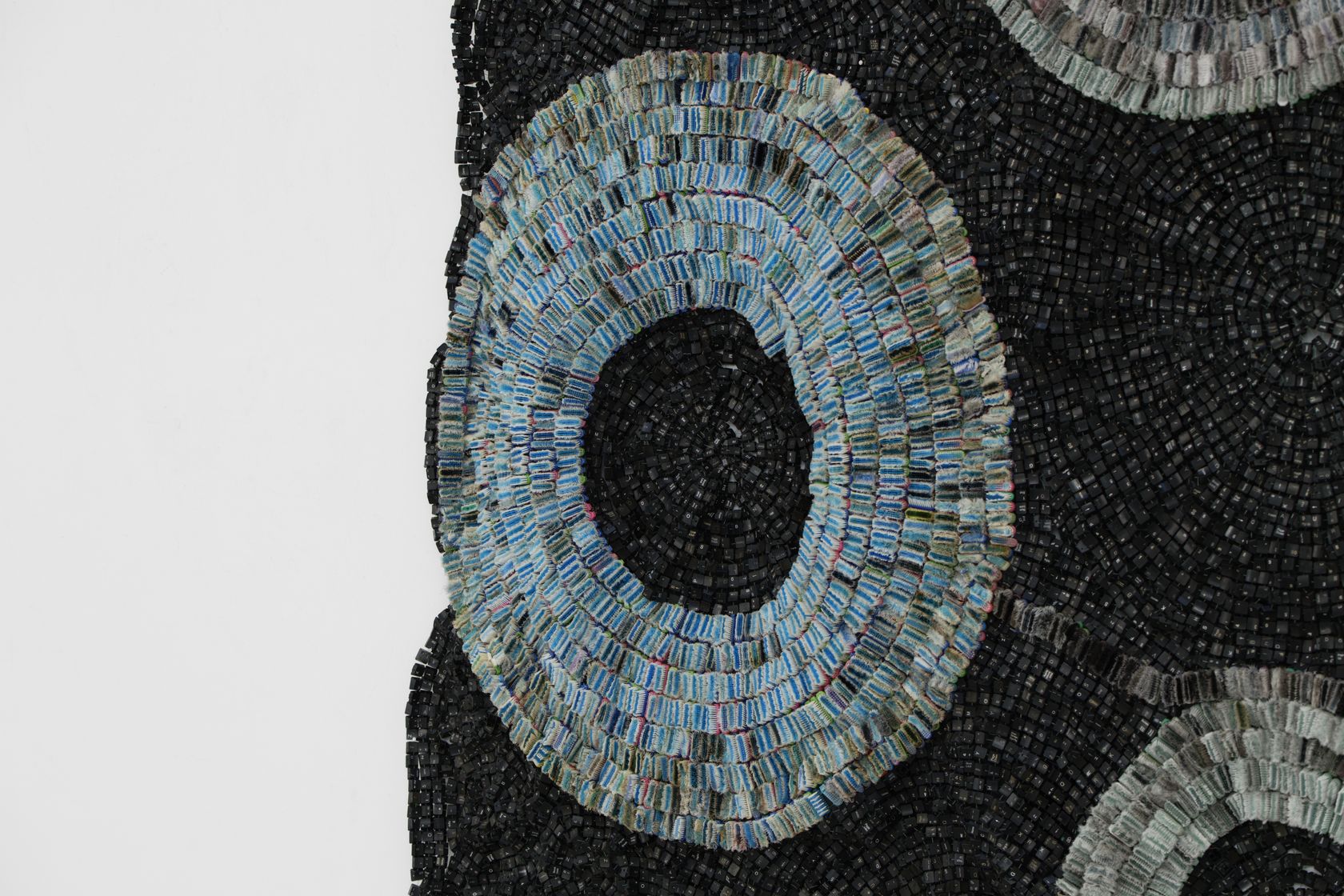
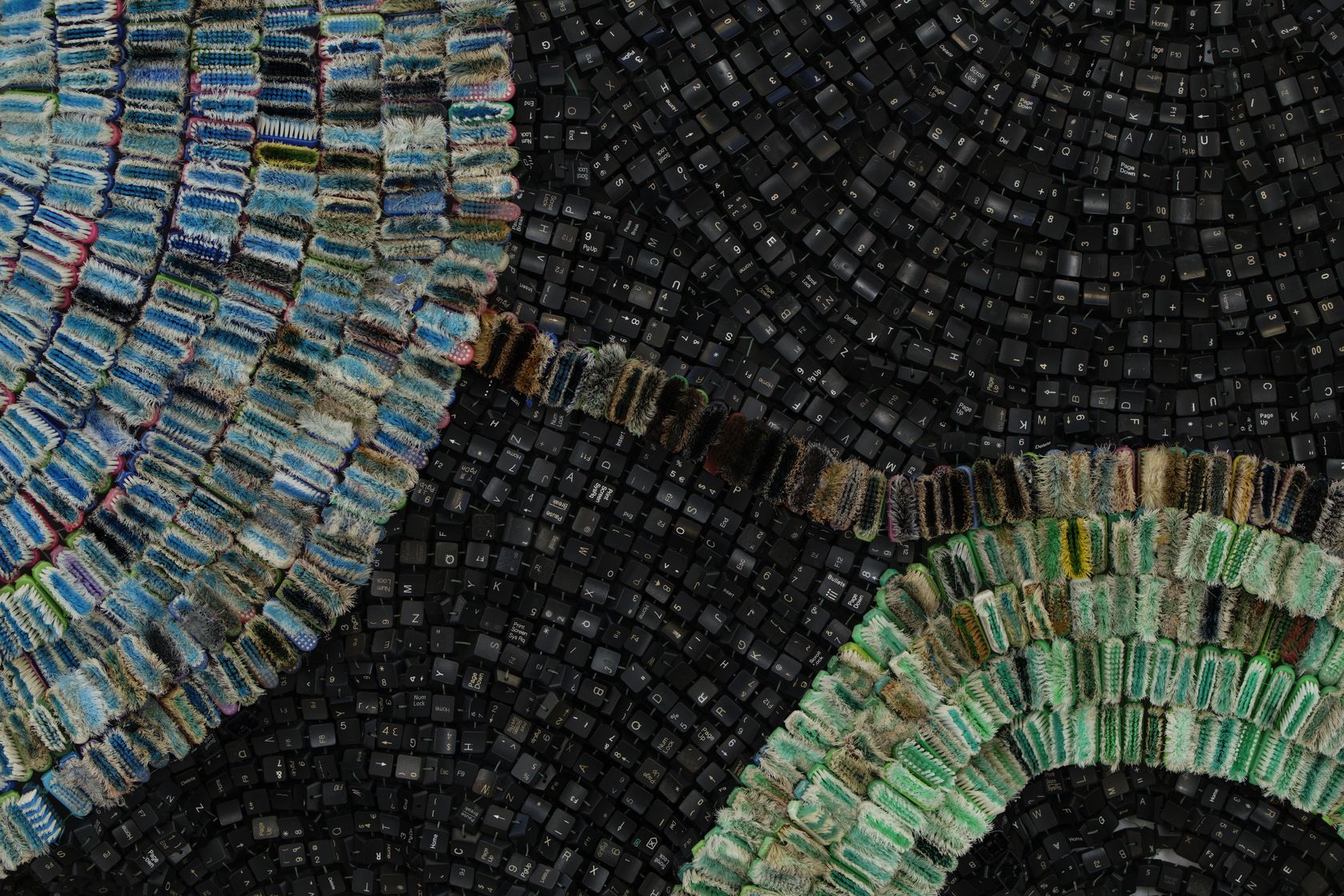
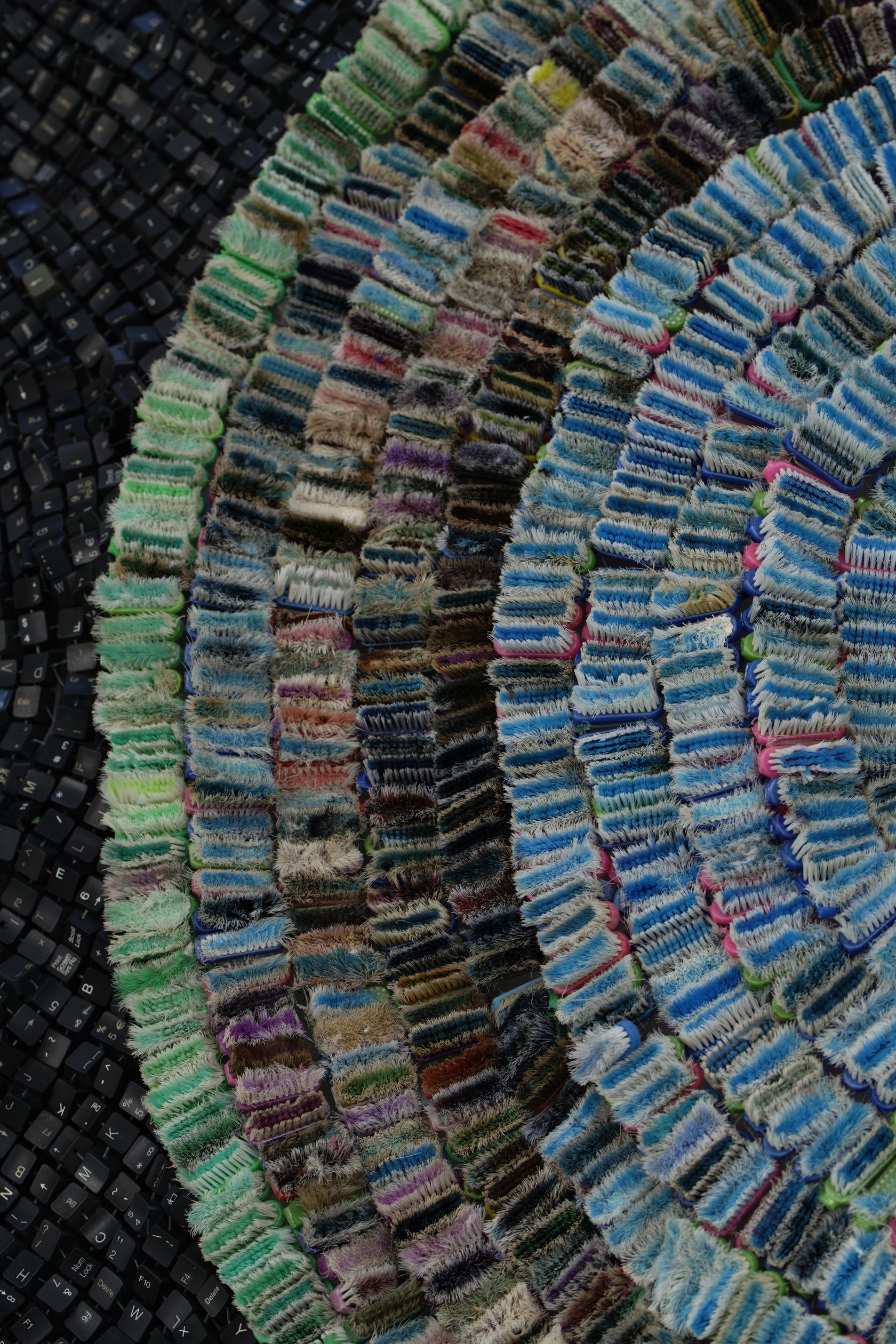
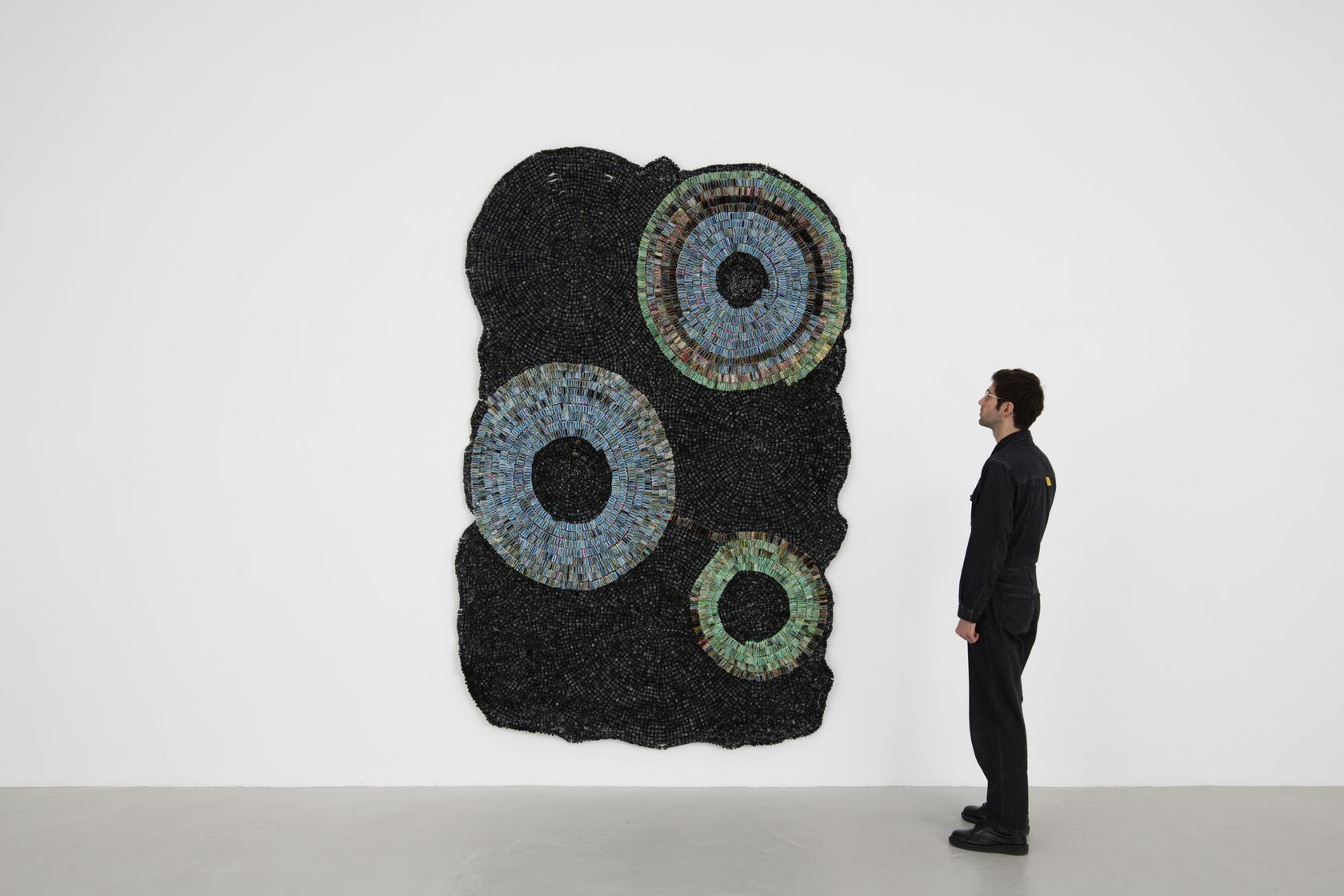
- Moffat Takadiwa
- KoreKore hand writing VII , 2023
- Computer keys and toothbrush heads in plastic
-
- 266 ×
- 178 × cm
- 104 3/4 ×
- 70 1/16 × inches
Within their practice, Gert and Uwe Tobias have revived a wide range of traditional image-making techniques—woodcut printing, low-relief sculpture, drawing using typewriters, watercolor, gouache, ceramics and lacemaking—into which they breathe new life using contemporary means. Their oeuvre is mainly influenced by the myths, costumes, crafts and commonplace motifs of their native Transylvania, subverted and fused with elements of popular culture, abstract art and contemporary graphic design. From this rich pictorial repertoire, they create a varied body of work in which legends and folk tales, carnivalesque figures and archaic elements are subject to constant metamorphoses.
Born in Romania in 1973, the twin brothers Gert and Uwe Tobias have been developing a collaborative practice since 2001. Their four-handed work bears witness to the perfect symbiosis of their individual gestures, striving towards a common goal. Today, they live and work in Cologne, Germany. The twin brothers have recently enjoyed exhibitions at the MoMA in New York, the Sprengel Museum in Hannover and the Pinakothek der Moderne, Munich, both in Germany, The Dhondt-Dhaenens Museum in Deurle, Belgium, the Whitechapel Gallery in London, the Kunstmuseum Ravensburg, Germany, the Kupferstichkabinett at the Staatliche Kunstsammelungen in Dresden, the Maramotti Collection in Reggio Emilia in Italy and the UCLA, Hammer Museum of Art in Los Angeles as well as many other venues. In 2022, they were awarded the Prix du Dessin (Drawing Prize) by the Fondation d’Art Contemporain Daniel et Florence Guerlain.
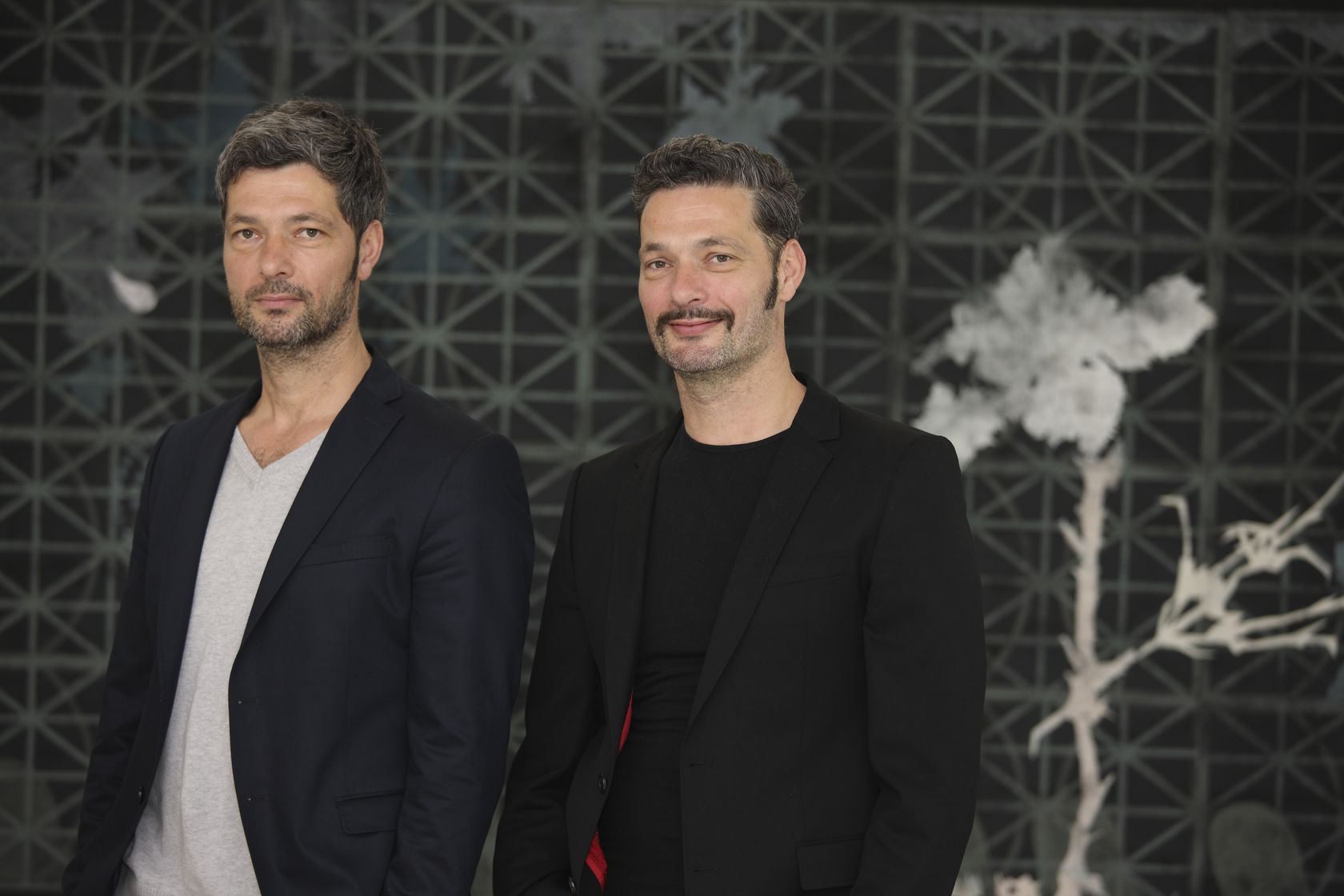
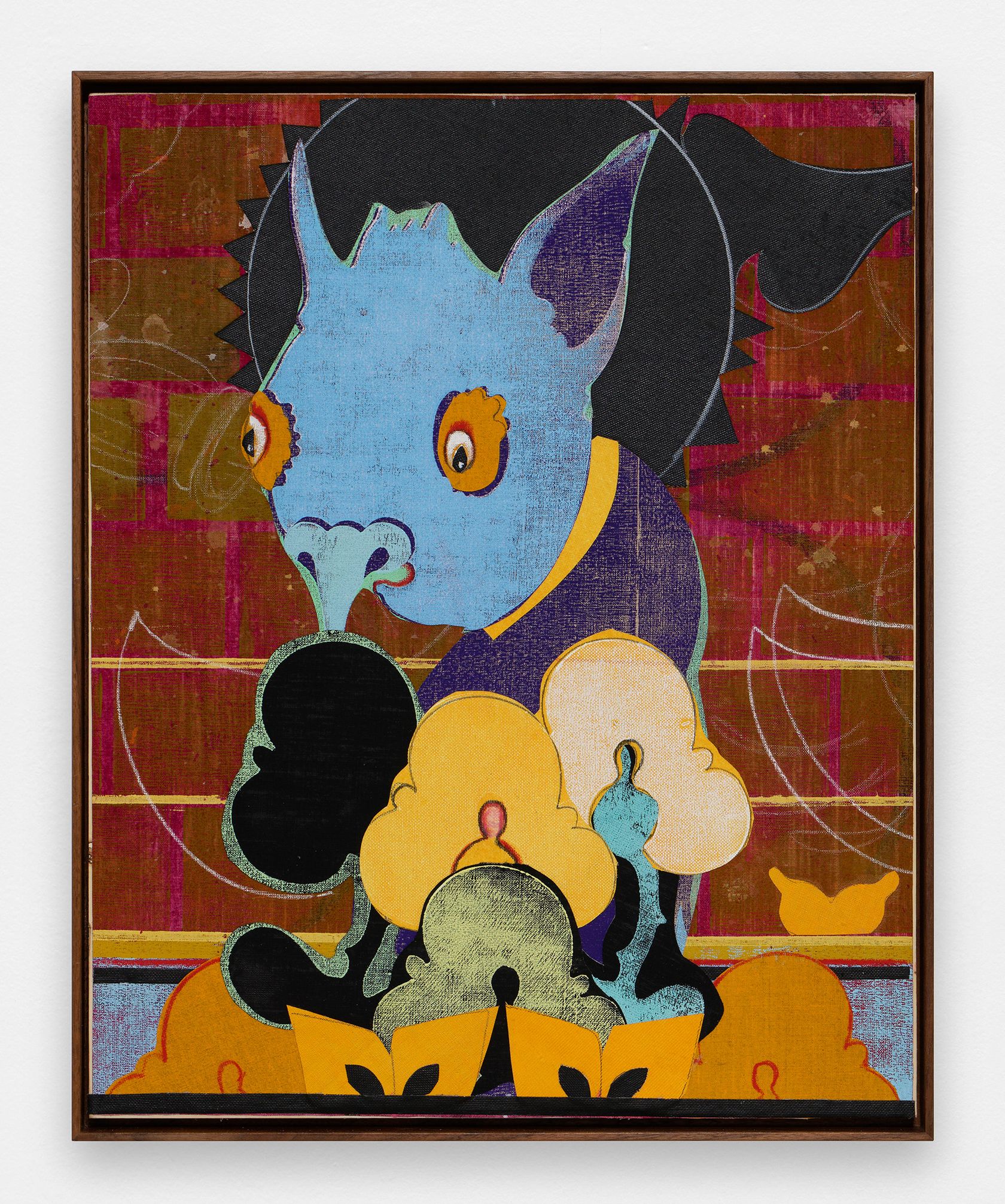
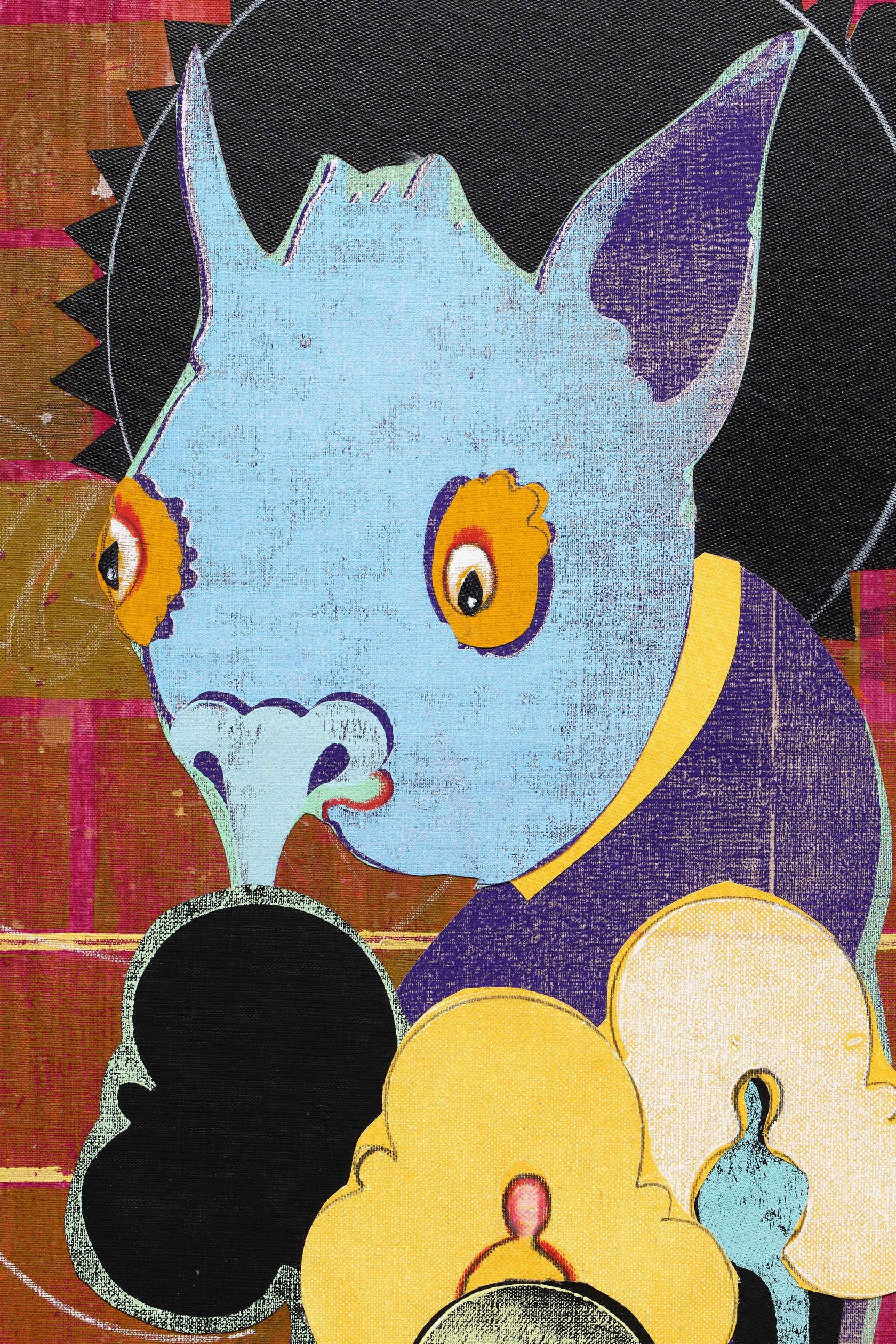
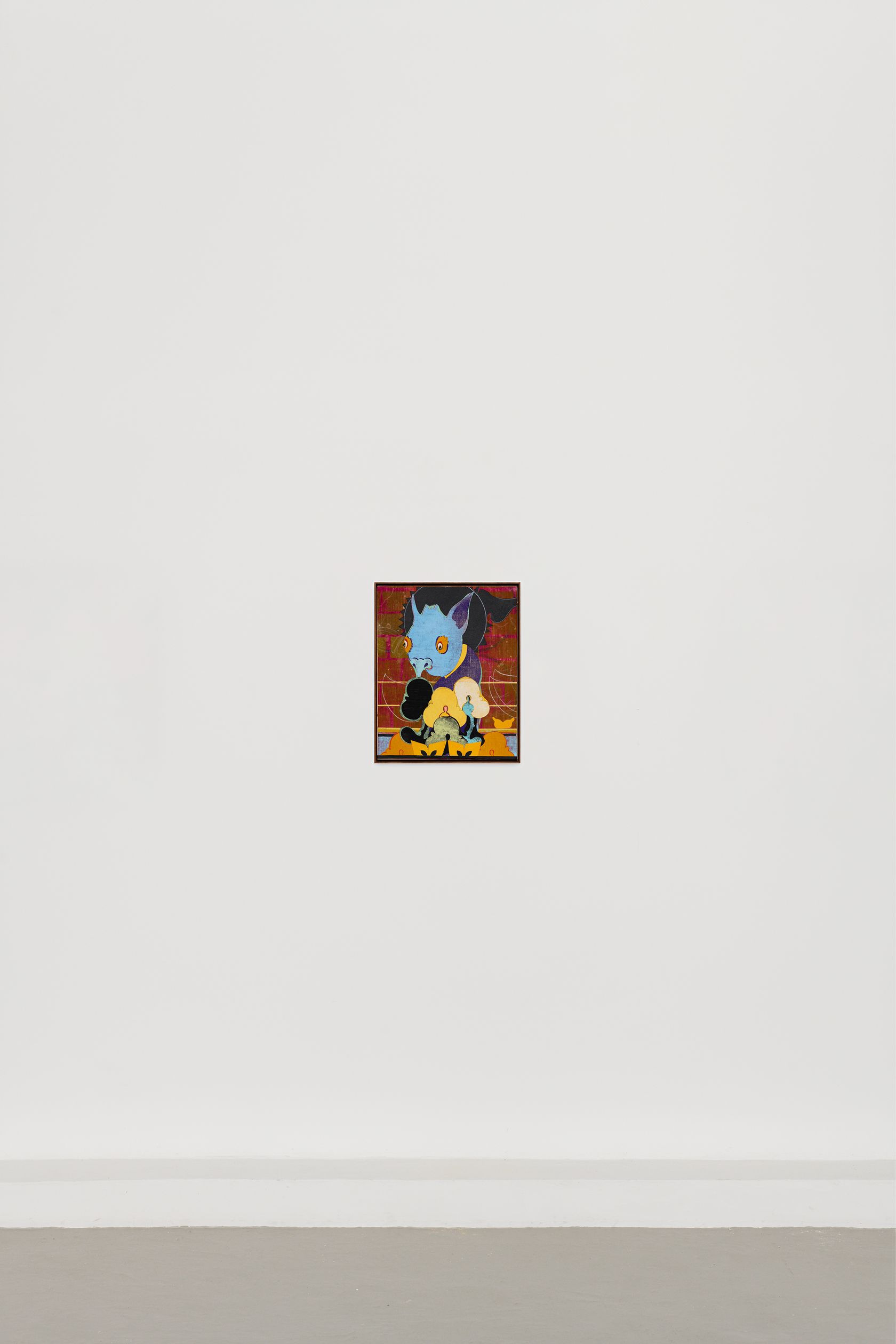
- Gert & Uwe Tobias
- Untitled (GUT/C 3203/00) , 2023
- Collage on canvas, mixed media, mounted on plywood
-
- 49.5 ×
- 40 × cm
- 19 1/2 ×
- 15 3/4 × inches
- unframed
- 52 ×
- 42 ×
- 4 × cm
- 20 1/2 ×
- 16 9/16 ×
- 1 9/16 × in
- framed
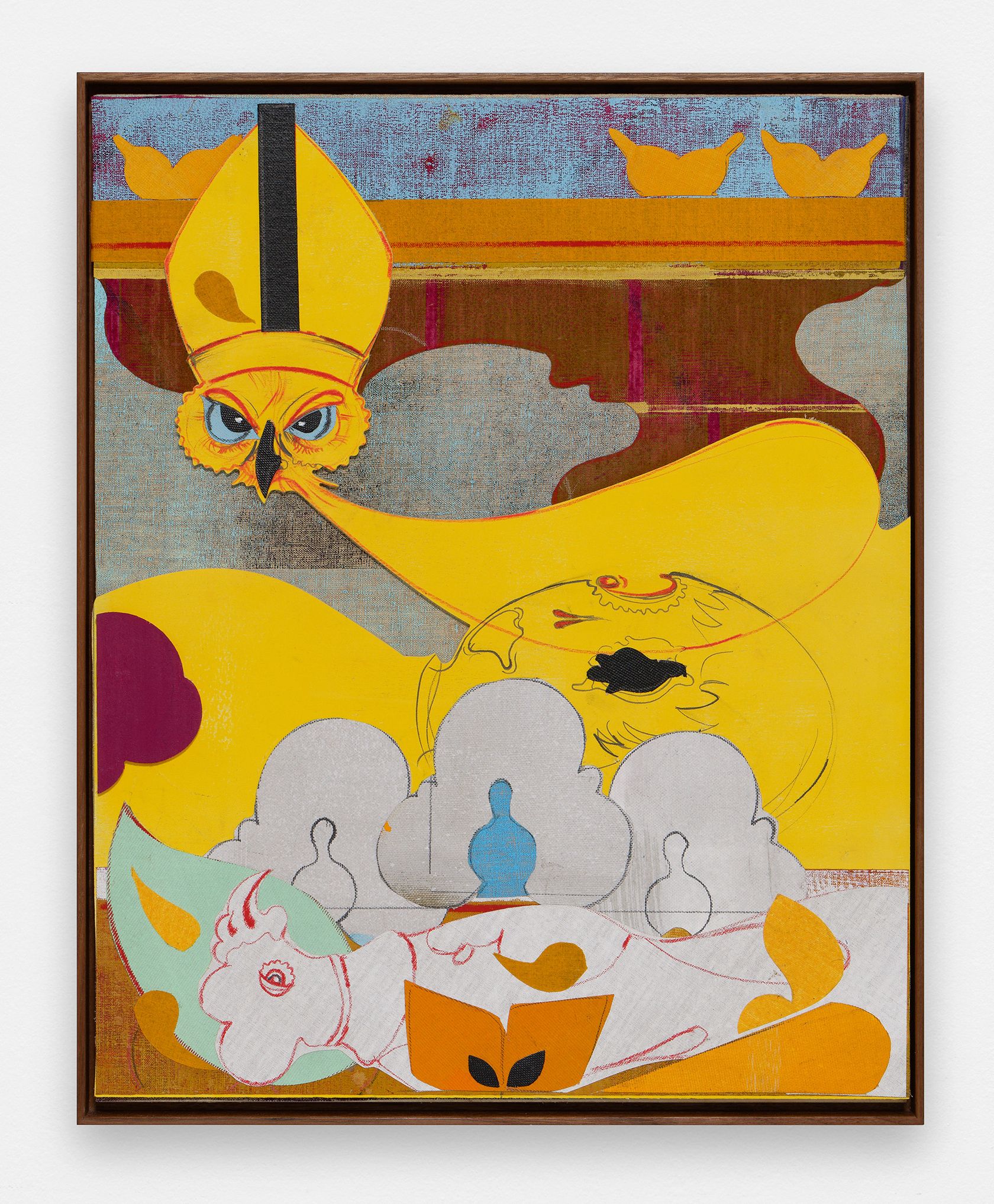
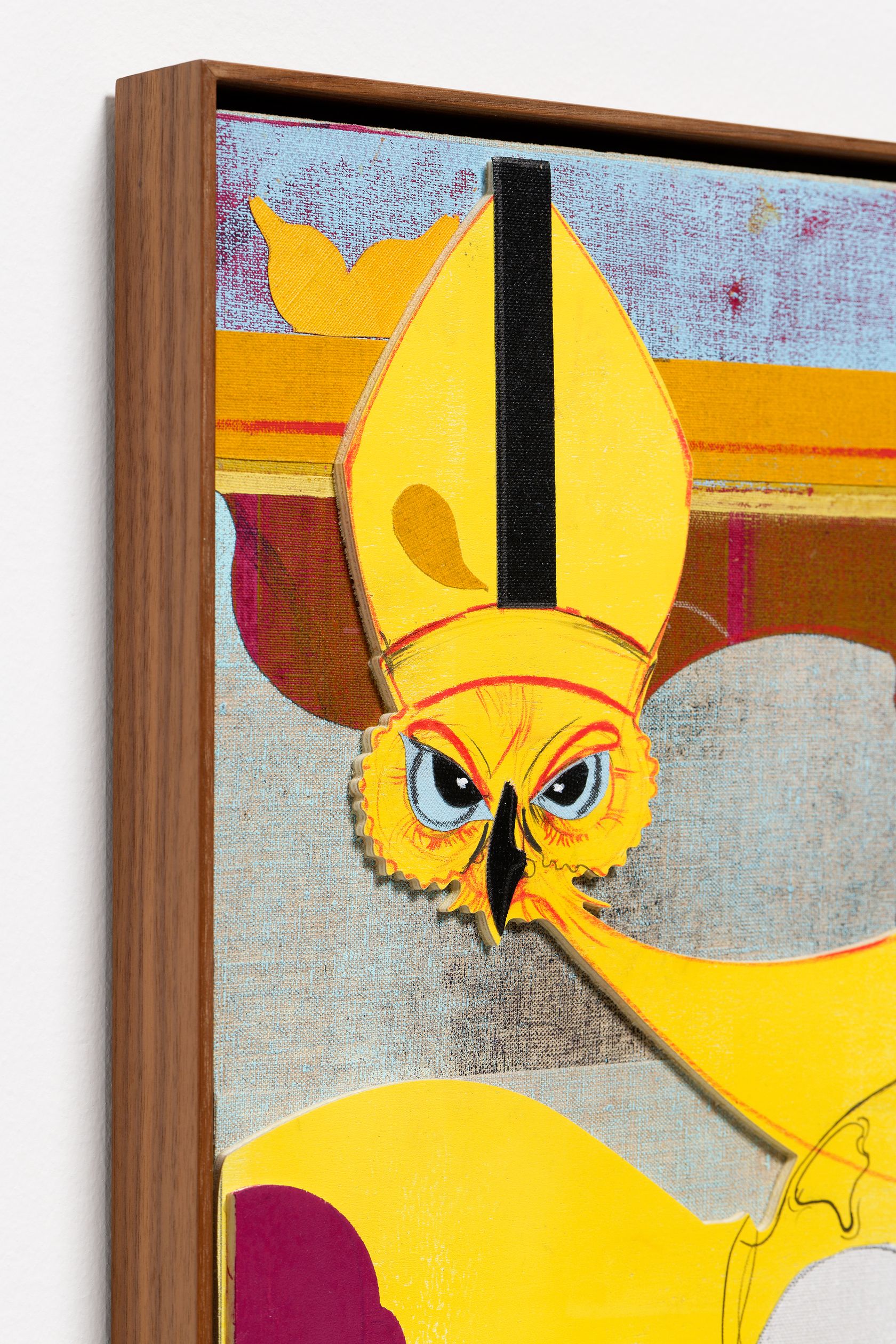
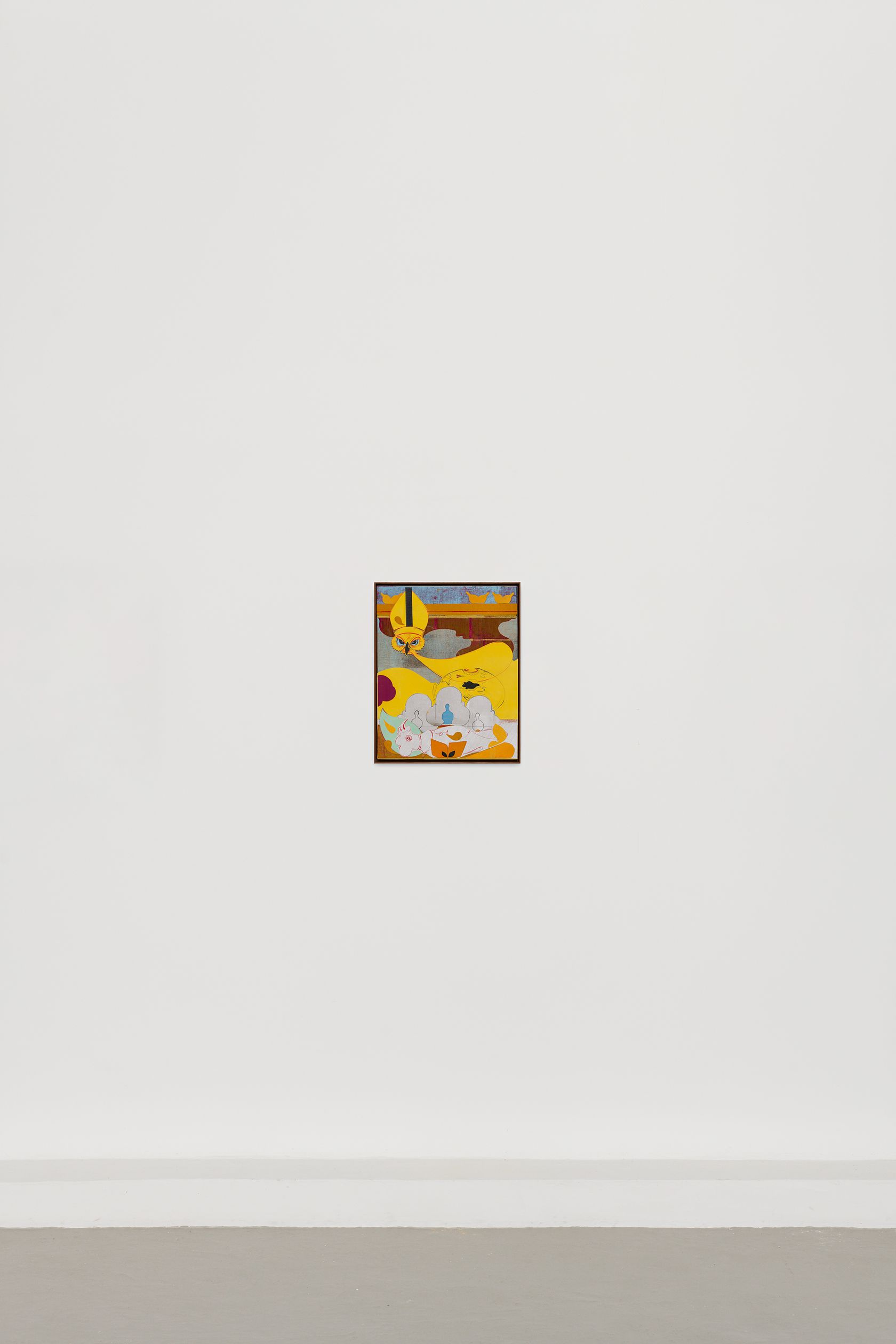
- Gert & Uwe Tobias
- Untitled (GUT/C 3204/00) , 2023
- Collage on canvas, mixed media, mounted on plywood
-
- 50 ×
- 40 × cm
- 19 11/16 ×
- 15 3/4 × inches
- unframed
- 52 ×
- 42 ×
- 4 × cm
- 20 1/2 ×
- 16 9/16 ×
- 1 9/16 × in
- framed
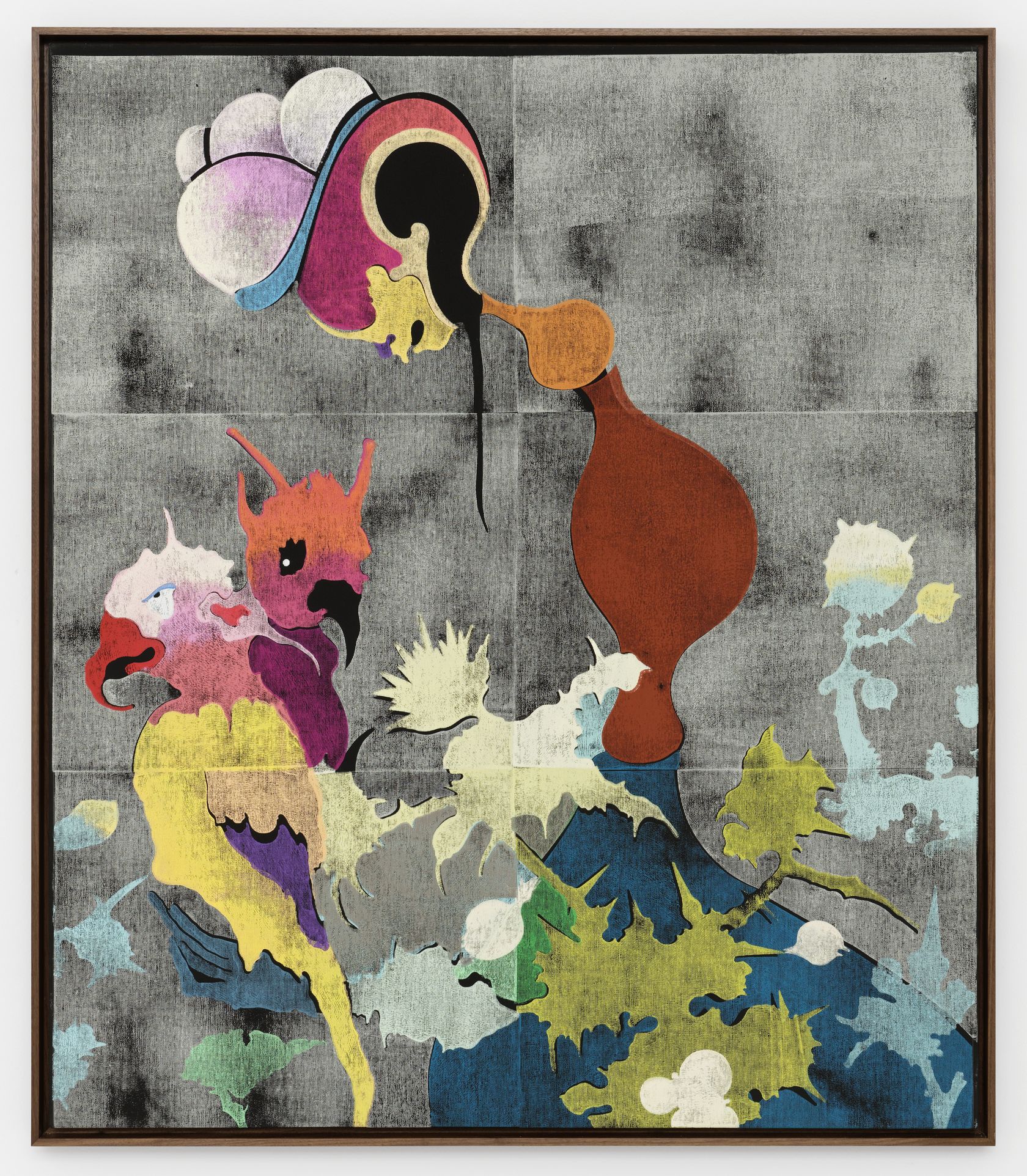
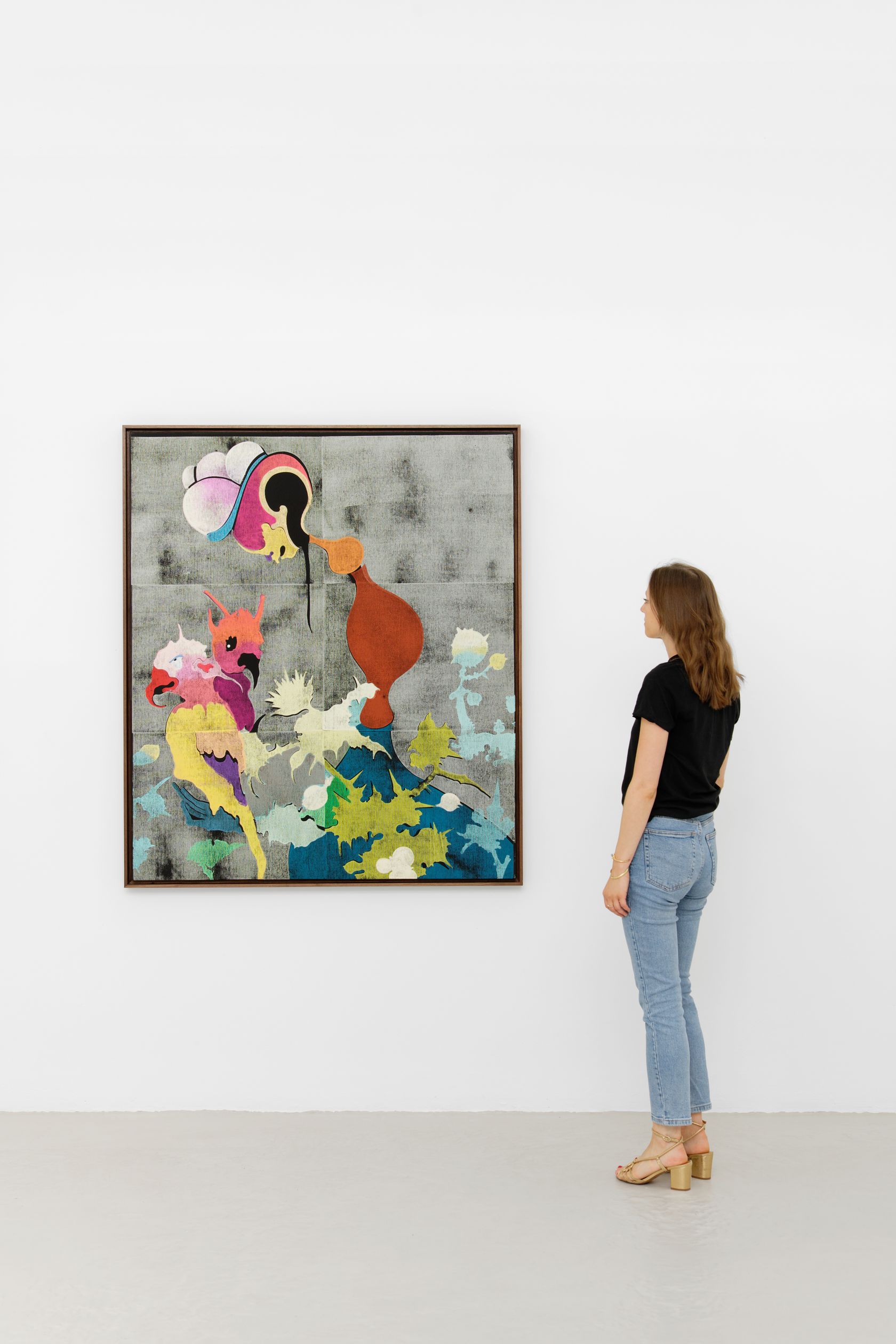
- Gert & Uwe Tobias
- Untitled (GUT/H 3068/02) , 2023
- Woodcut on canvas
-
- 140 ×
- 120 × cm
- 55 1/8 ×
- 47 2/8 × inches
- unframed
- 146 ×
- 126 × cm
- 57 1/2 ×
- 49 5/8 × in
- framed
The African-American artist Philemona Williamson (b. 1951) brings together personal and more universal narratives in her brightly colored, large format paintings that portray children and teenagers, often in mysterious situations. She paints directly onto her canvases without preliminary sketches and her paintings thus resemble palimpsests telling their own stories, with multiple layers, figures and scenes appearing across the support, before seemingly being abandoned. Williamson’s works are deeply rooted in her childhood memories and include references to memorabilia, such as dolls typical of American popular culture from the artist’s personal collection, and as such are an invitation to explore mysterious and unfinished tales.
Williamson has been exhibited in numerous American institutions, from her debut solo show at the Queens Museum of Art in 1988, to Metaphorical Narratives, at the Montclair Art Museum, New Jersey, in 2017, which spanned the thirty years of her artistic career. Her works can be seen in many public collections across the USA and she has been commissioned for several public projects, most notably by the New York Metropolitan Transport Authority. In 2022, she was one of fifteen recipients of the Anonymous Was A Woman prize, awarded annually since 1986 to women artists over the age of 40, in recognition of their previous and future work.
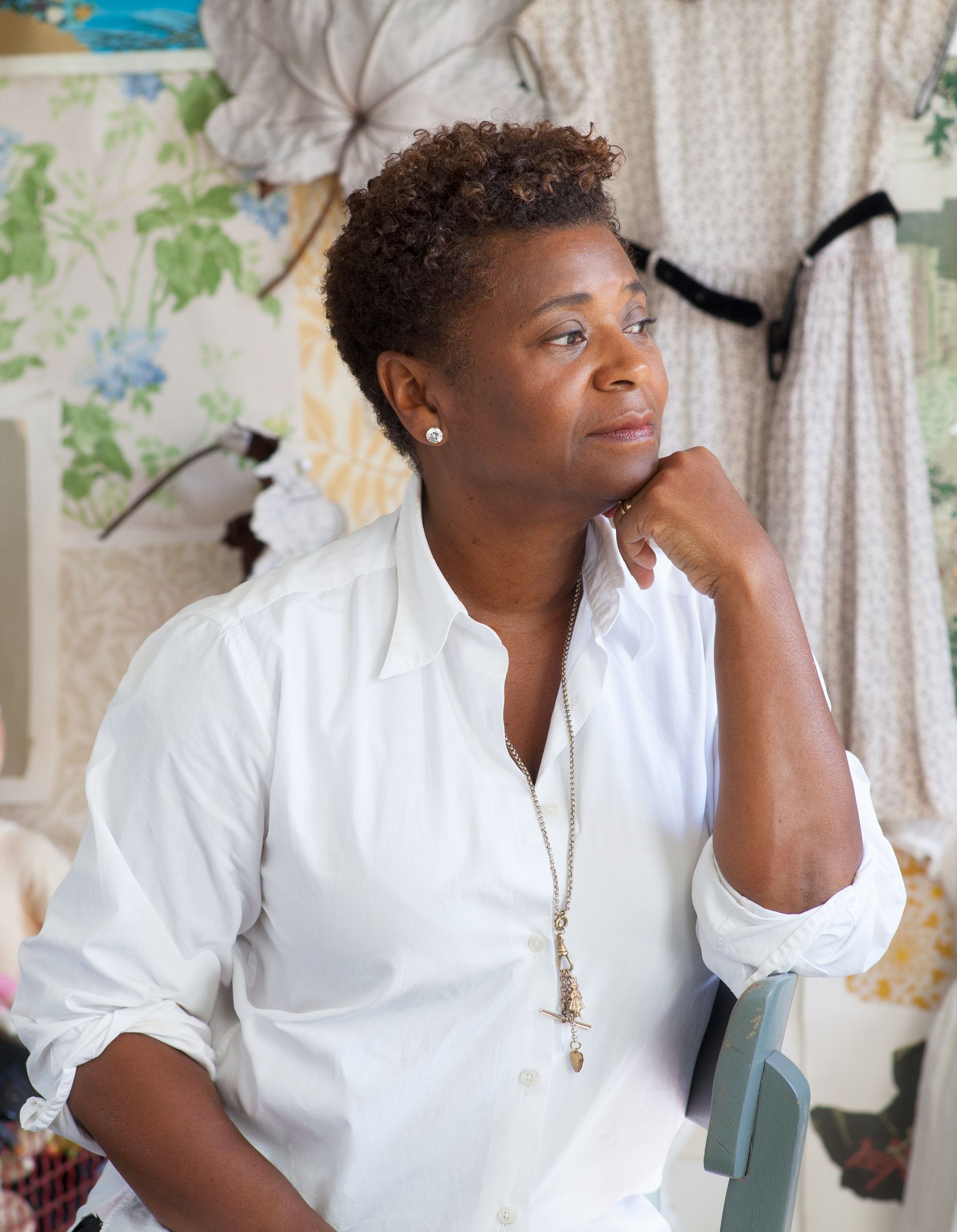
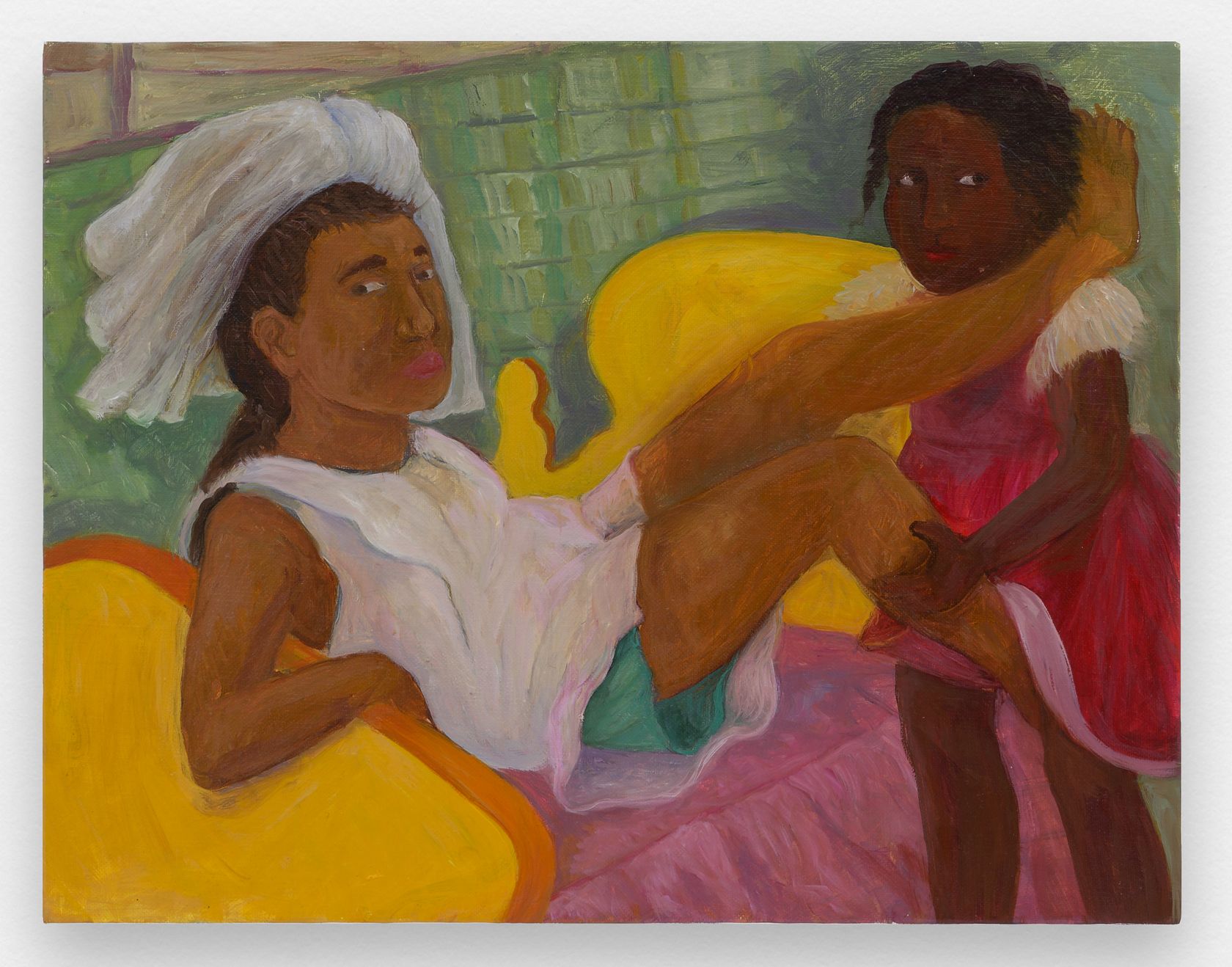
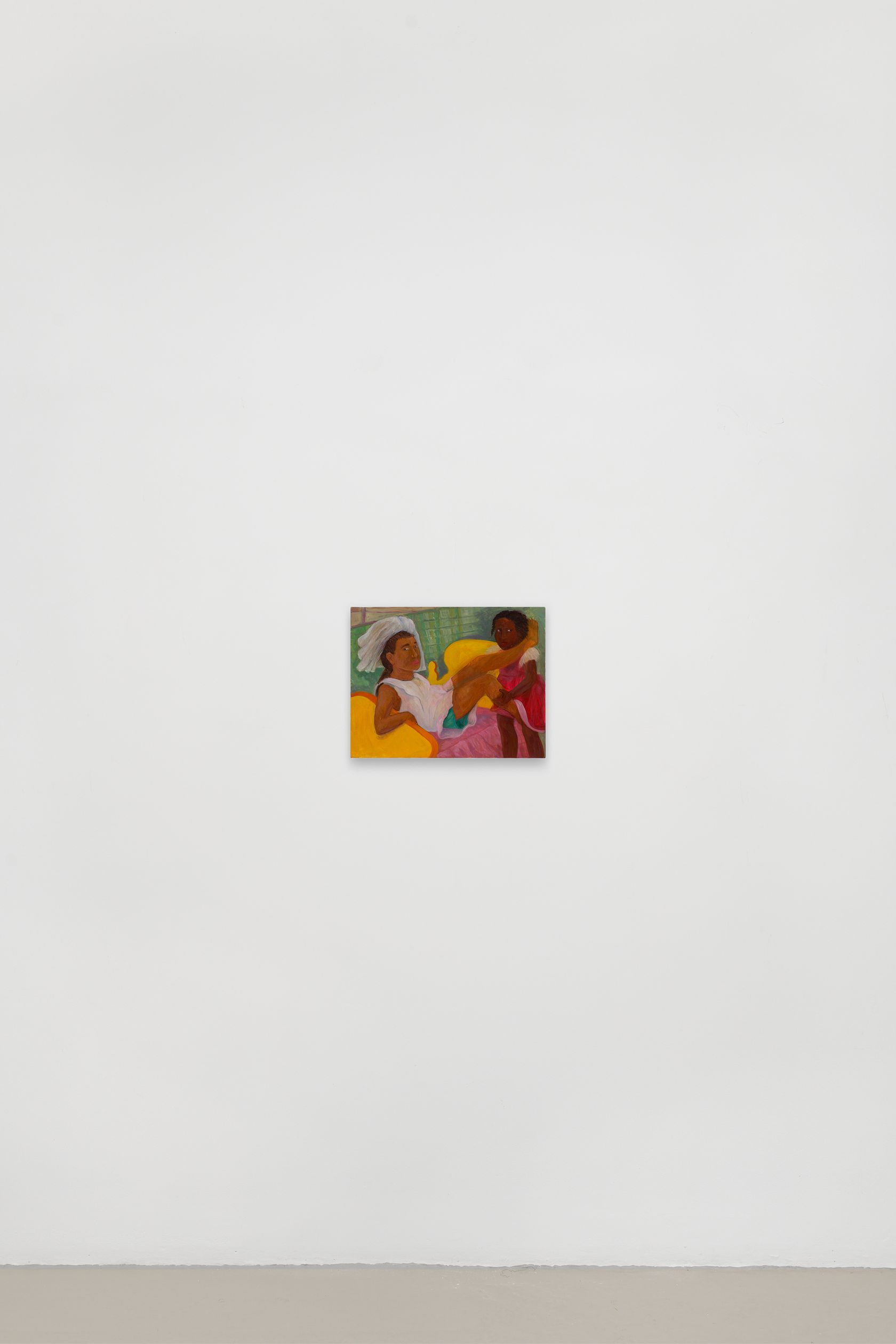
- Philemona Williamson
- Yellow Bed , 2023
- Oil on linen
-
- 36.5 ×
- 46 × cm
- 14 3/8 ×
- 18 × inches
- unframed
- 39.5 ×
- 50 ×
- 6 × cm
- 15 9/16 ×
- 19 11/16 ×
- 2 3/8 × in
- framed
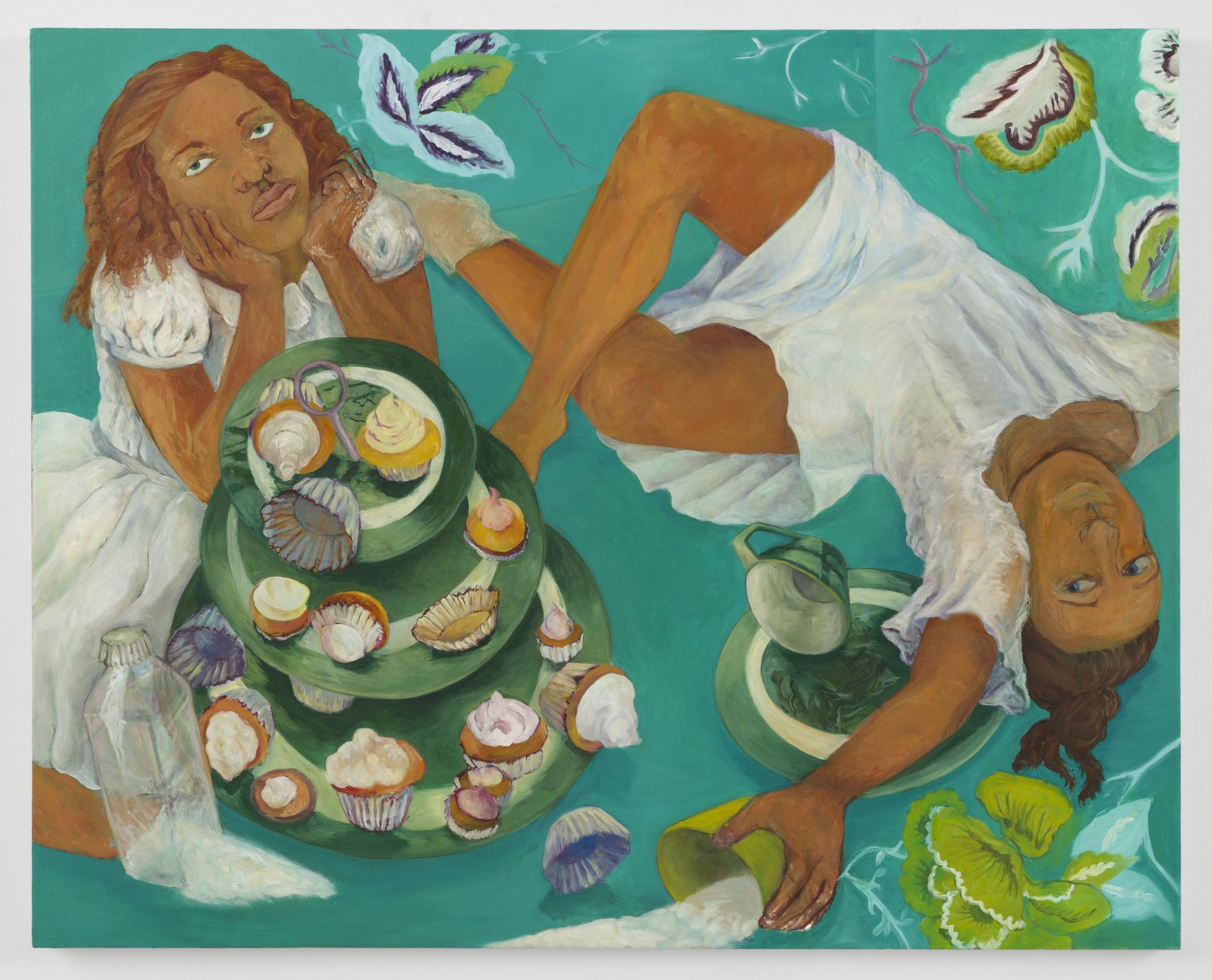
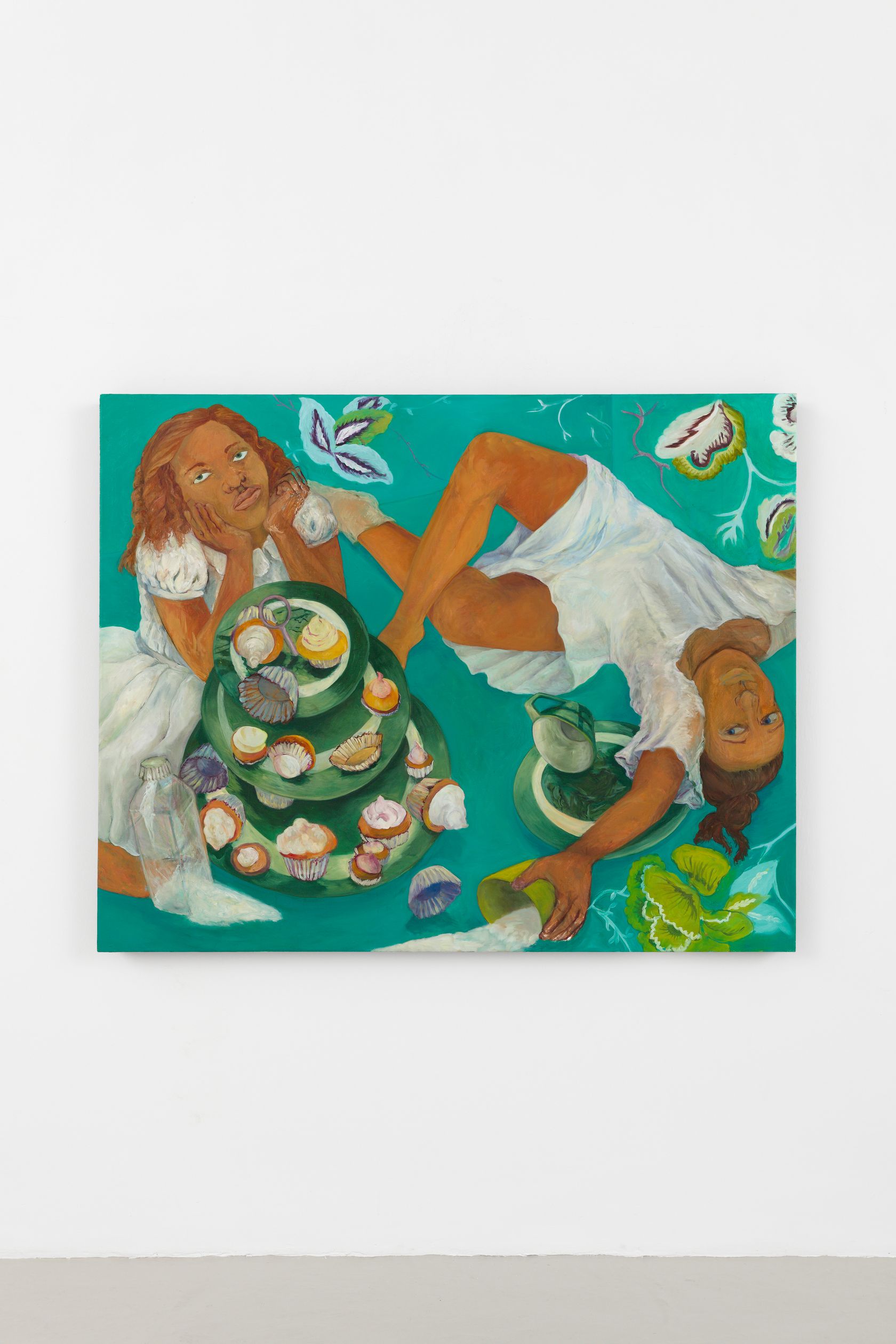
- Philemona Williamson
- Sweet Dreams , 2010
- Oil on linen
-
- 122 ×
- 152.5 ×
- 3.5 × cm
- 48 ×
- 60 1/16 ×
- 1 3/8 × inches
- unframed
- 126 ×
- 156.5 ×
- 5 × cm
- 49 5/8 ×
- 61 5/8 ×
- 1 15/16 × in
- framed
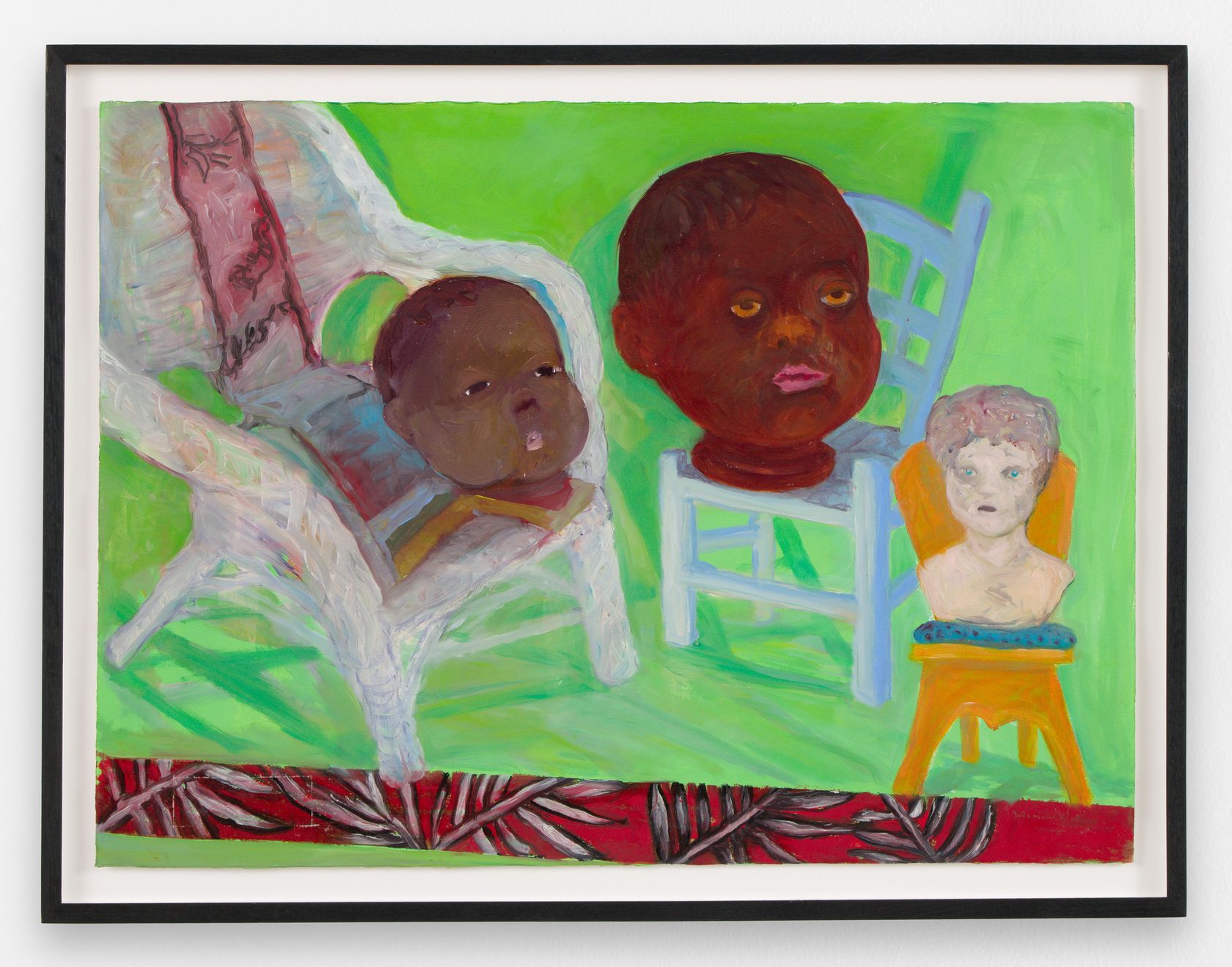
- Philemona Williamson
- Everyday Invisibility , 2022
- Oil on paper
-
- 56 ×
- 76 × cm
- 22 ×
- 30 × inches
- unframed
- 64 ×
- 84 ×
- 4 × cm
- 25 2/8 ×
- 33 1/8 ×
- 1 5/8 × in
- framed
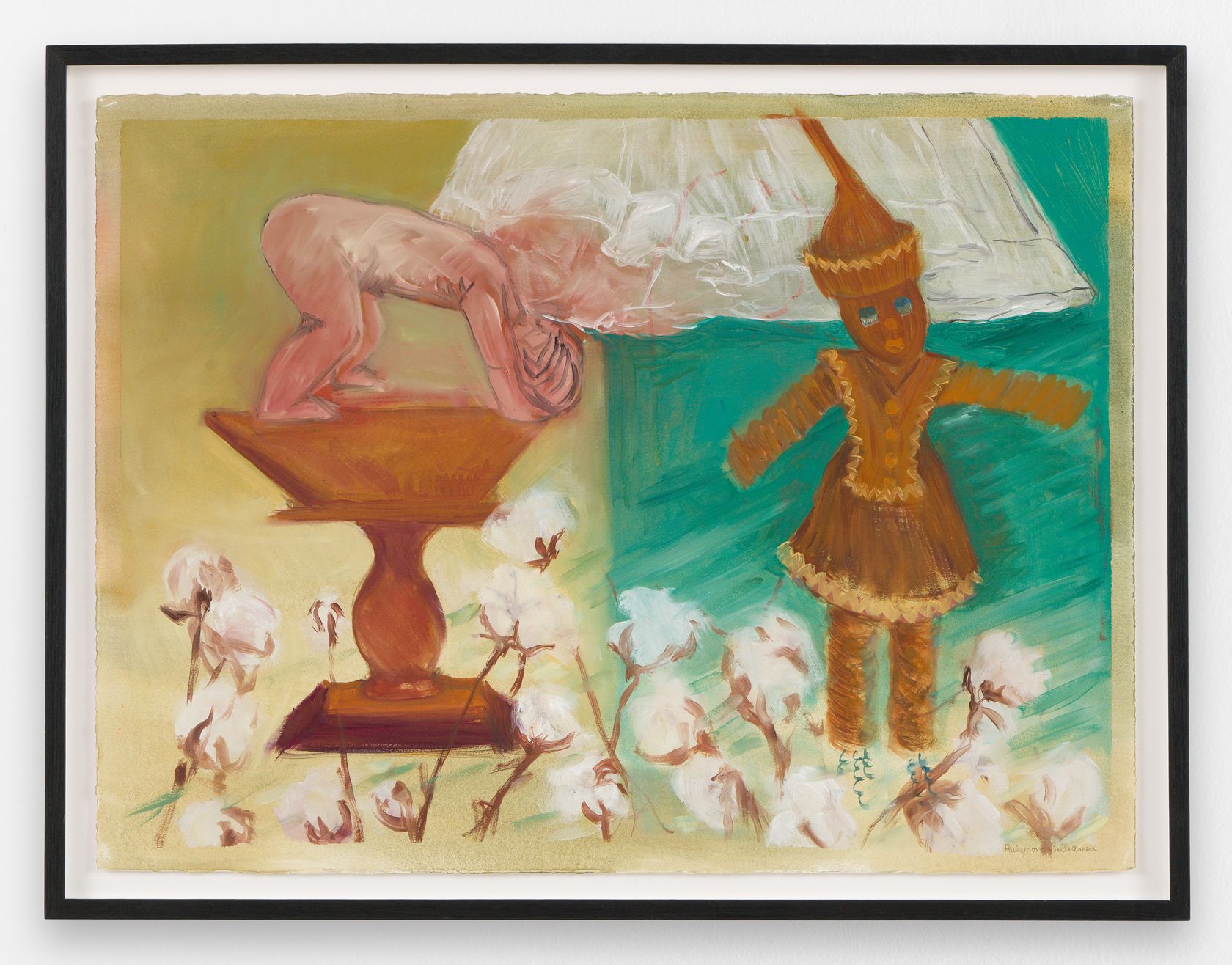
- Philemona Williamson
- Jump Down , 2021
- Oil on paper
-
- 56 ×
- 76 × cm
- 22 ×
- 30 × inches
- unframed
- 64 ×
- 84 ×
- 4 × cm
- 25 2/8 ×
- 33 1/8 ×
- 1 5/8 × in
- framed
Xie Lei chose painting through personal conviction, as it opens up a pathway towards a language capable of expressing his sensory universe and a field of experimentation that allows him to delve into the specificity of this medium in the contemporary world. His work always starts with a basis in reality before taking flight to explore uncertain or ambiguous realms that are transformed by his imagination. Most of his paintings refer to murky or disturbing situations, discreetly linked to literary or cinematographic memories or drawn from a profound crucible of personal emotions. His work dwells on the complexity of events and situations and above all their ambiguity and the tensions they foster. His recent painting intrigues through its exploration of a world in-between sleep and death, torment and eroticism. The colors are somber but shift towards the luminous and the powerful. His touch is both fluid and more textured. Xie Lei’s painting is singular in that it offers up an alternative perception of time: in a salutary manner, it suggests a slowing of the spectator’s gaze and an escape from the intoxicating world of immediacy and constant acceleration.
Xie Lei (b. 1983 in China) has lived and worked in Paris since 2006. He graduated from the CAFA in Beijing then the ENSBA in Paris. His works have been exhibited in numerous institutions: Louis Vuitton Foundation, Paris (FR); MO.CO, Montpellier (FR); CAPC, Bordeaux (FR); Villa Noailles, Hyères (FR); Collection Lambert, Avignon (FR); MAC VAL, Vitry-sur-Seine (FR); Langen Foundation, Neuss (DE); Musée National d’Histoire d’Immigration, Paris (FR); Ricard Foundation, Paris (FR). His oeuvres feature in many public and private collections such as the Thyssen-Bornemisza Art Contemporary, MAC VAL, Colas Foundation, Albertina Museum and X Museum. Xie Lei was a resident of the Casa de Velázquez and of the Boghossian Foundation.
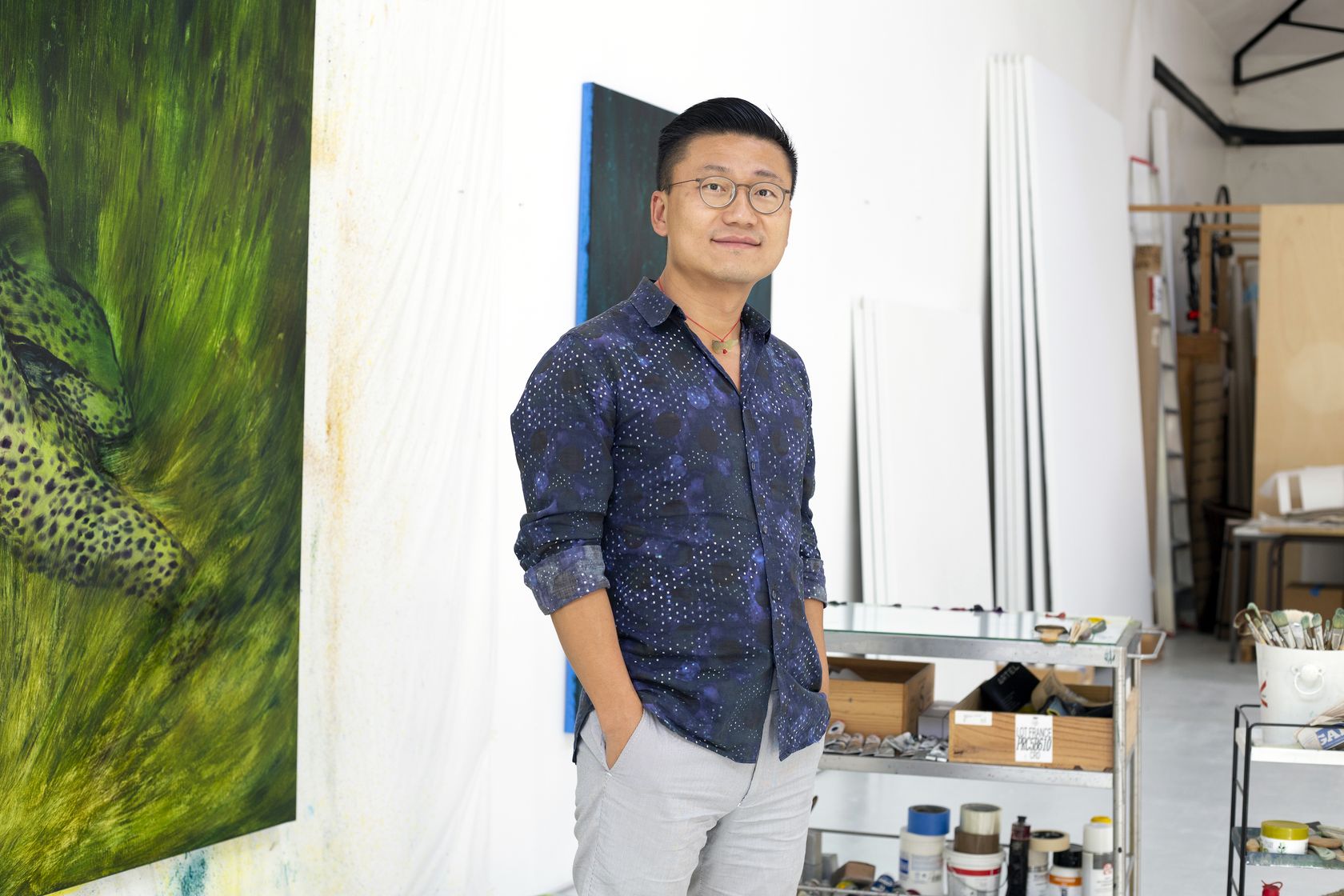
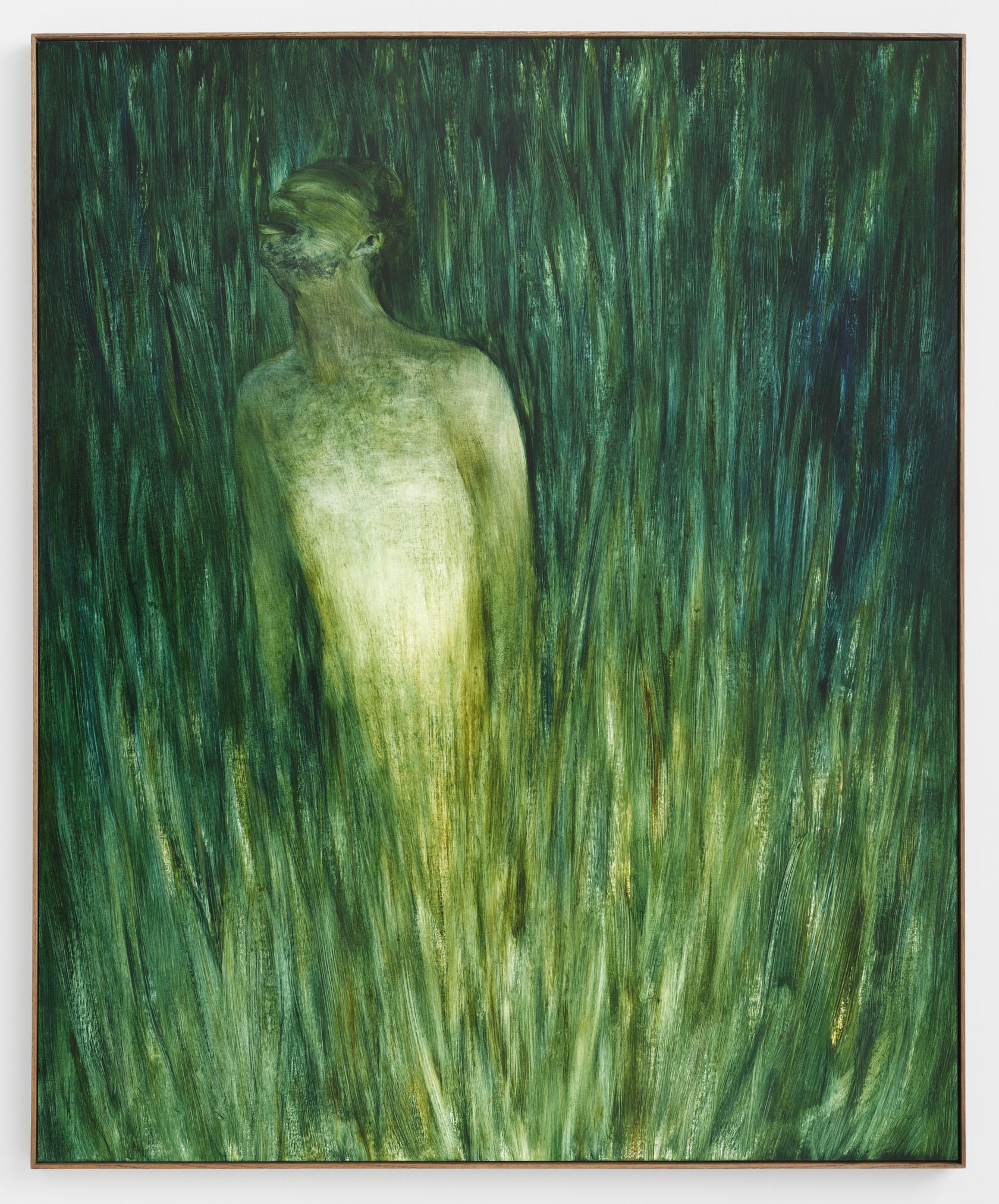
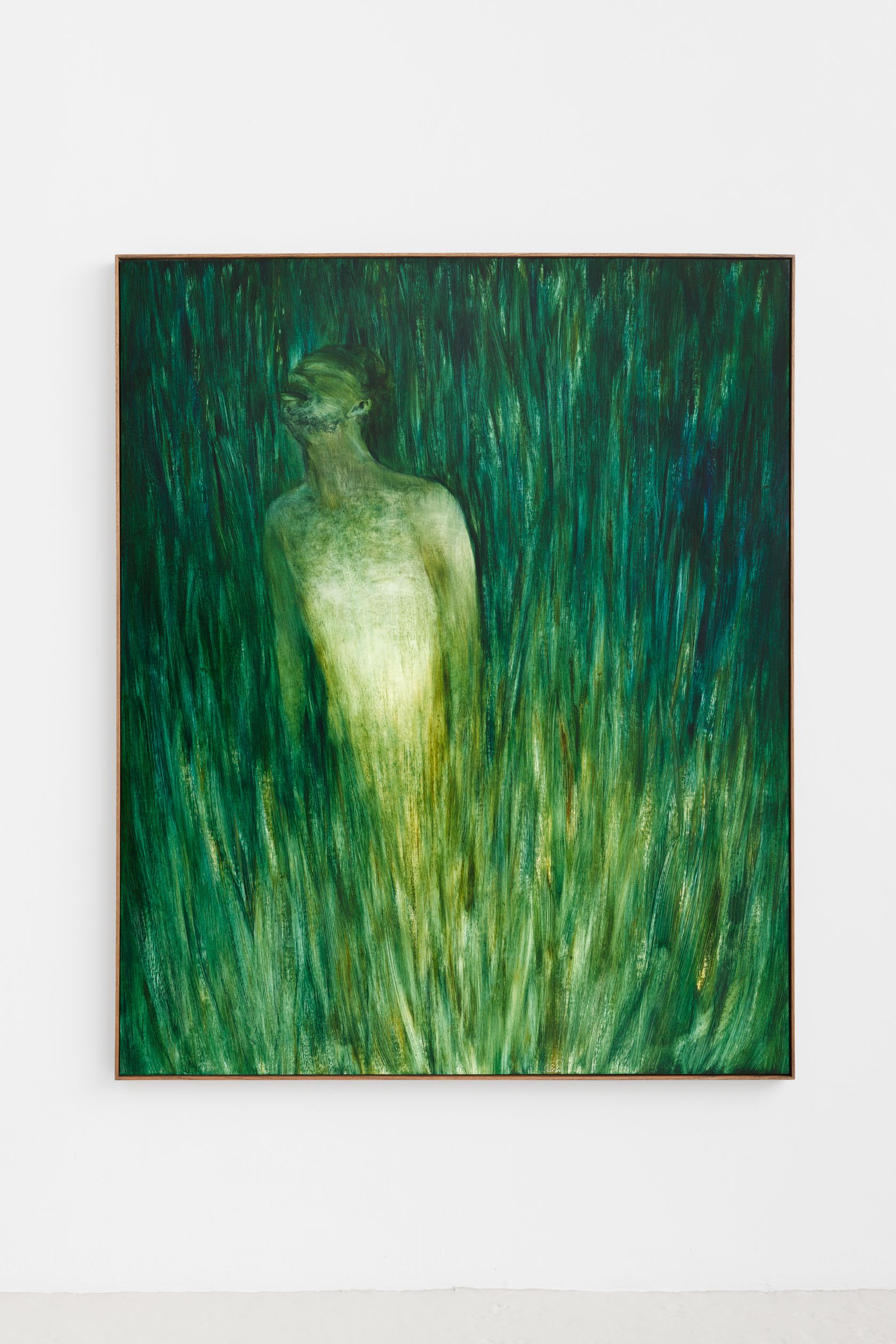
- Xie Lei
- Drop , 2023
- Oil on canvas
-
- 170 ×
- 140 × cm
- 66 15/16 ×
- 55 1/8 × inches
artgenève/sur-mesure
January 24 - 28, 2024
Booth A16
Oli Epp
Curator : Nicolas Trembley
Inspired by 19th-century exhibition fixtures at world’s fairs and shopping malls, the first edition of artgenève/sur-mesure reinvents the concept of the fairground by adopting the atmosphere of a funfair.
The chosen works explore the theme of amusement parks, featuring rides, slides, trompe-l’oeil panoramas, buggy circuits, bear fights andthe presence of aliens and fairy-tale characters.
Born in 1994, Oli Epp lives and works in London. His paintings are autobiographical; sometimes confessional, sometimes irreverent and frequently handled with a humorous sense of pathos. Oli Epp focuses on situations that either involve him or others, in public and private moments that pass by as unremarkable, at a glance. But documenting these unreported tragedies in paint is, for him, an act of discovery. He wants his imagery to feel familiar to as many people as possible; to draw out the ridiculous comedy of certain shared rituals and behaviours, by economizing on the essence of the situation and creating simplified humanoid characters, which lend a sort of parody of the real world in the way that cartoons do. These avatars have oversized heads and are hermetically sealed by an absence of facial features, which is an exaggerated reflection on human interaction in the post digital age - these figures appear idiotically isolated, but adorned with earpieces, branded items of clothing and objects that are important to consumption and communication.
Oli Epp uses the visual language of branding and interplay between graphic and painterly surfaces to create optical confusion, echoing the way that our real and digital lives are merged.
Graduated from the City & Guilds of London Art School in 2017, Oli Epp has received numerous awards and residencies. In 2018, Semiose organised his first gallery solo exhibition.
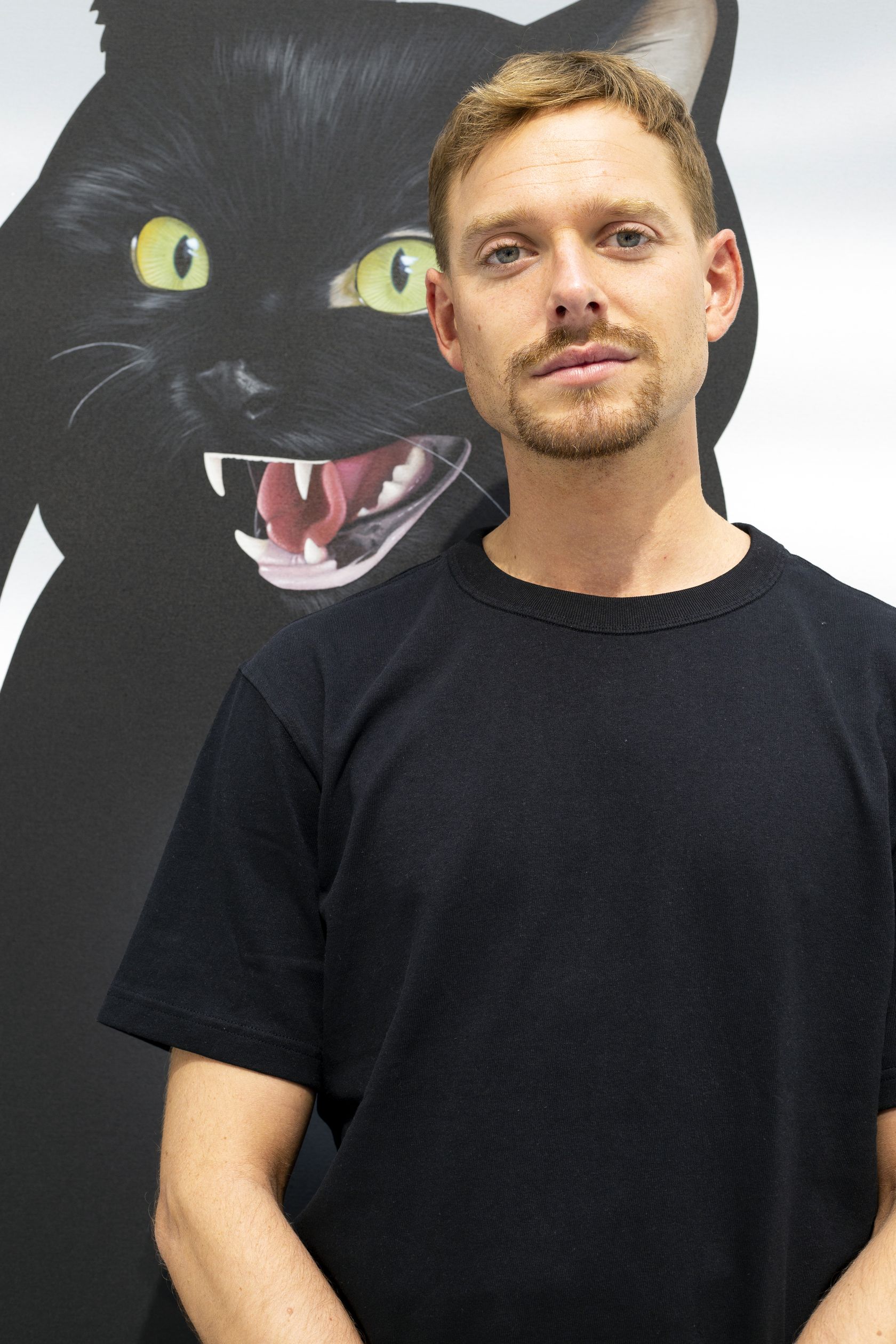
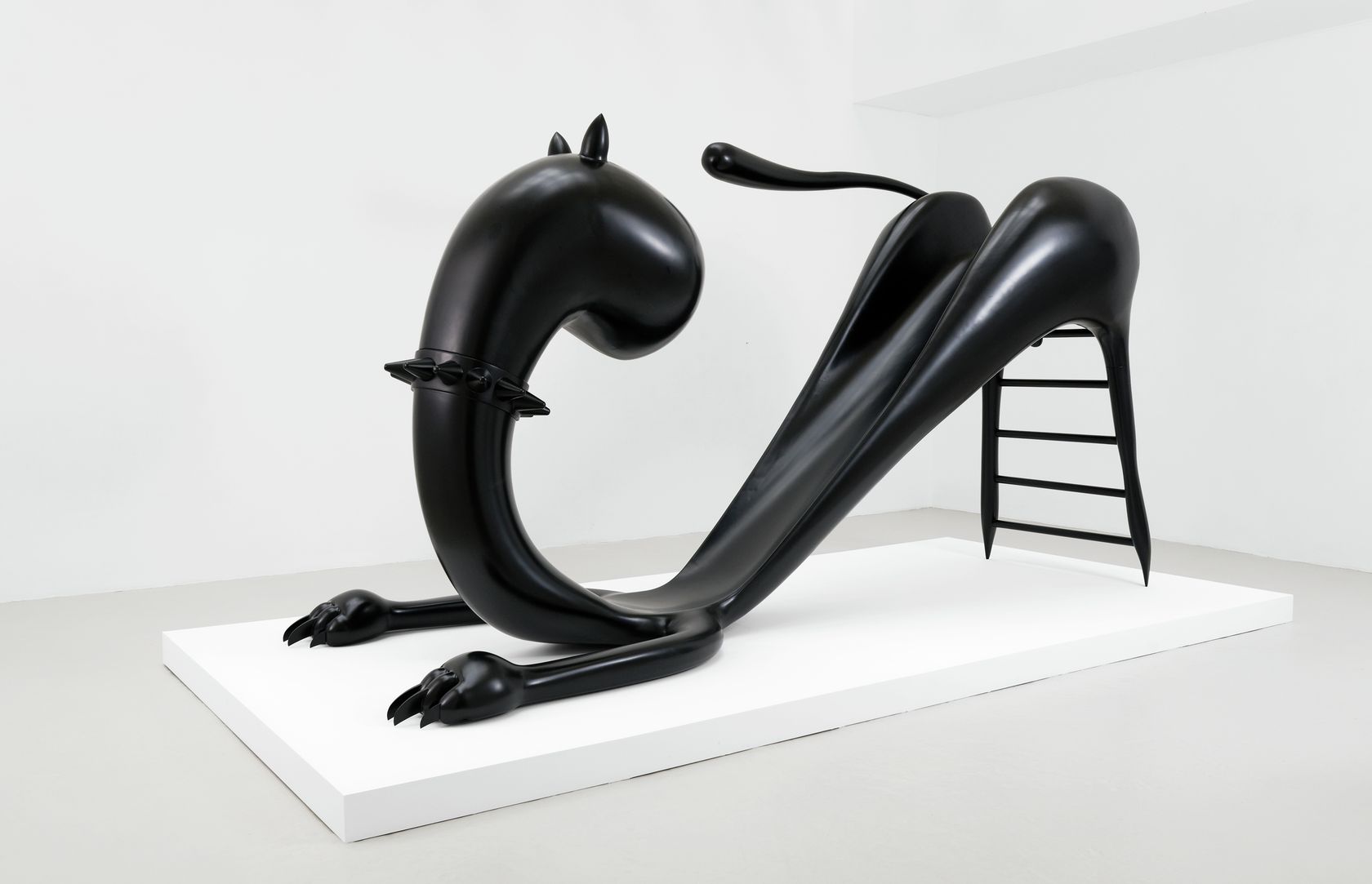
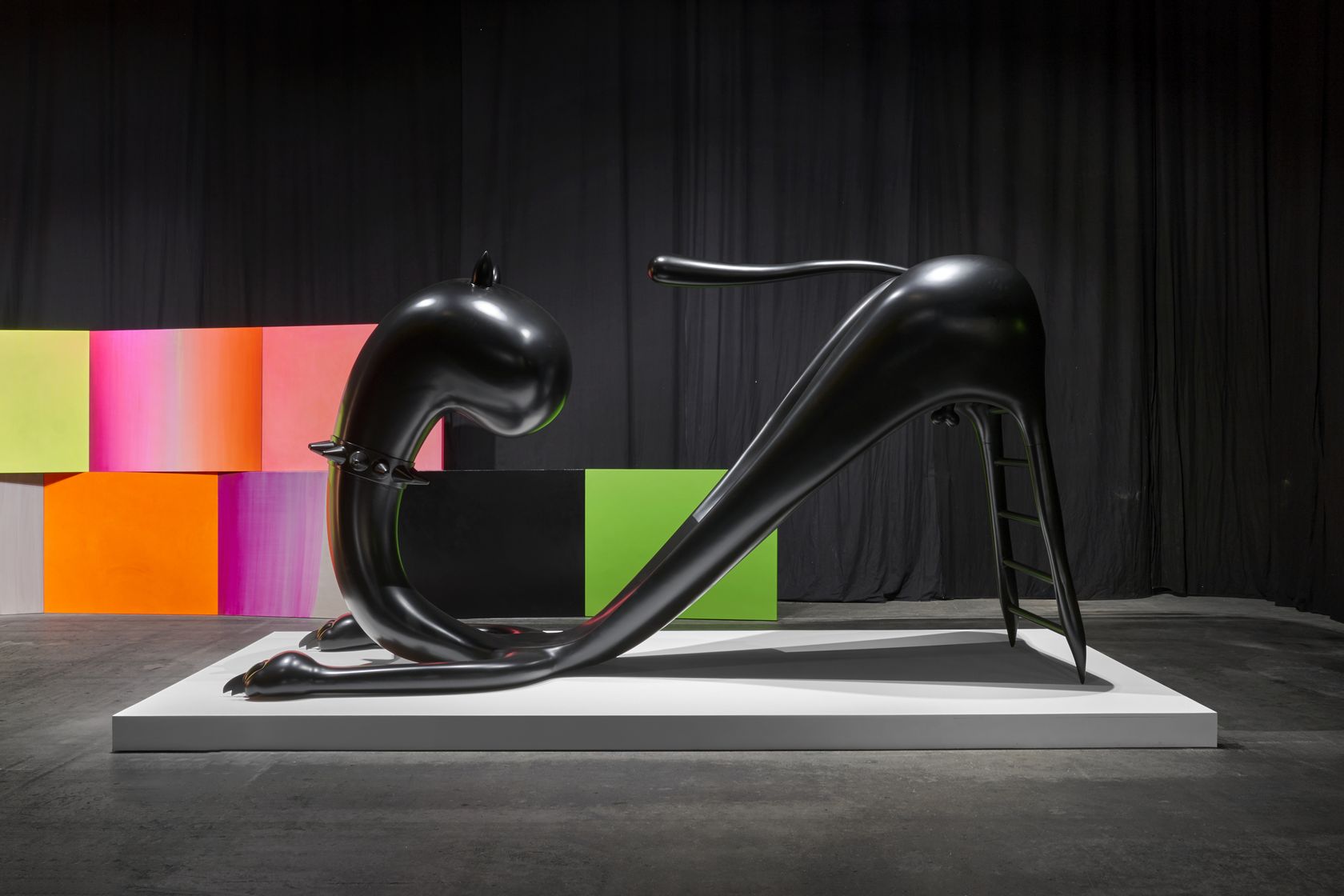
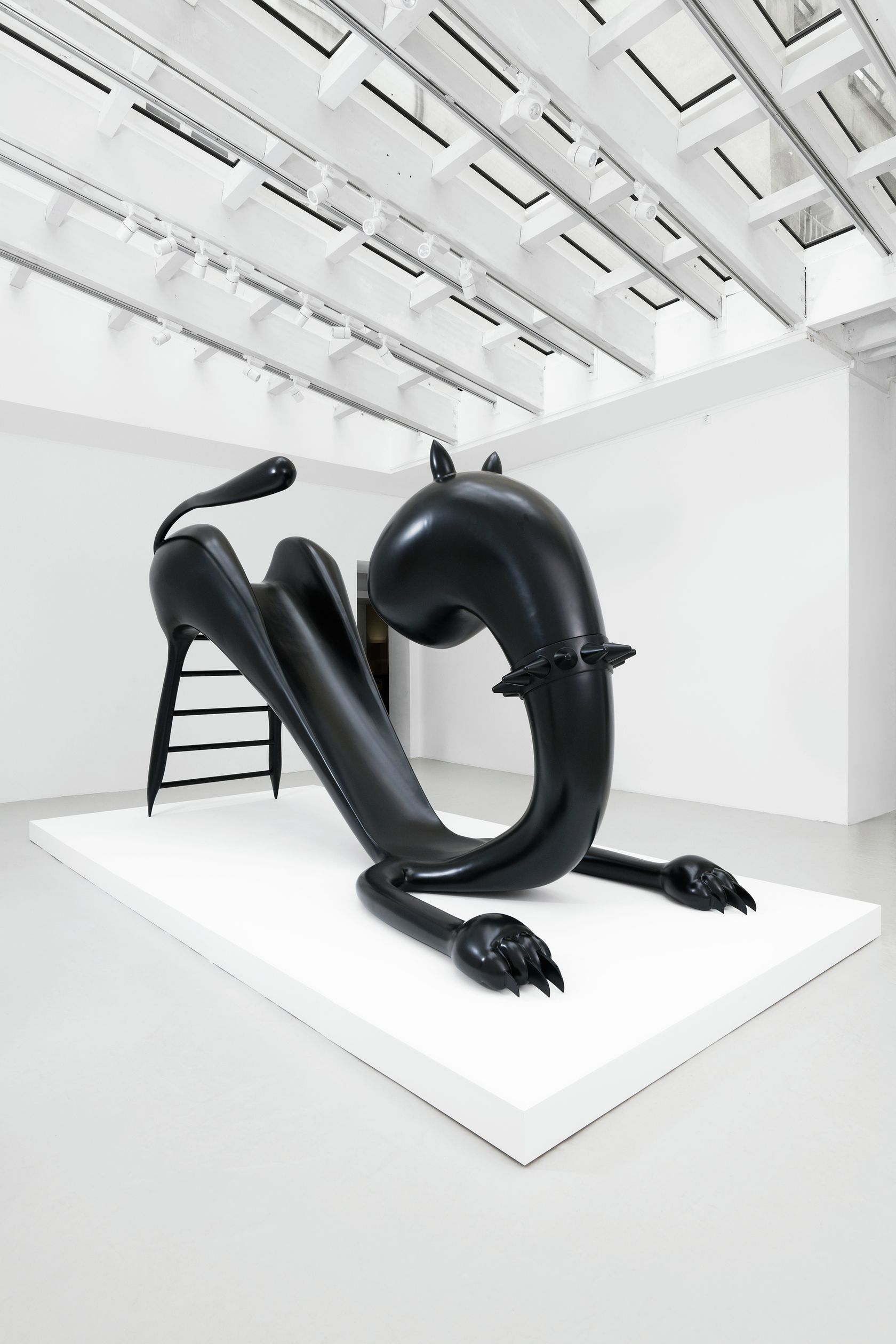
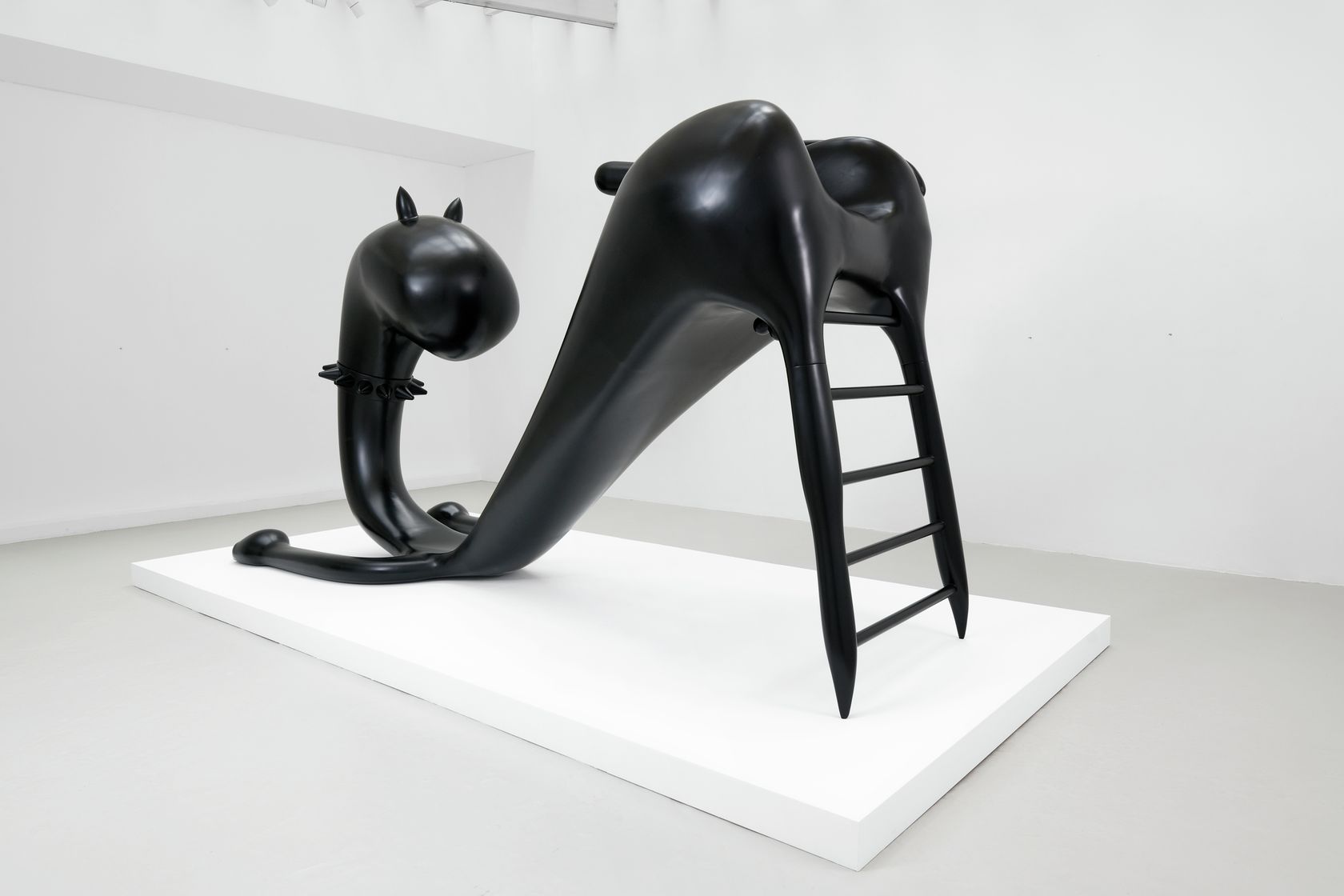
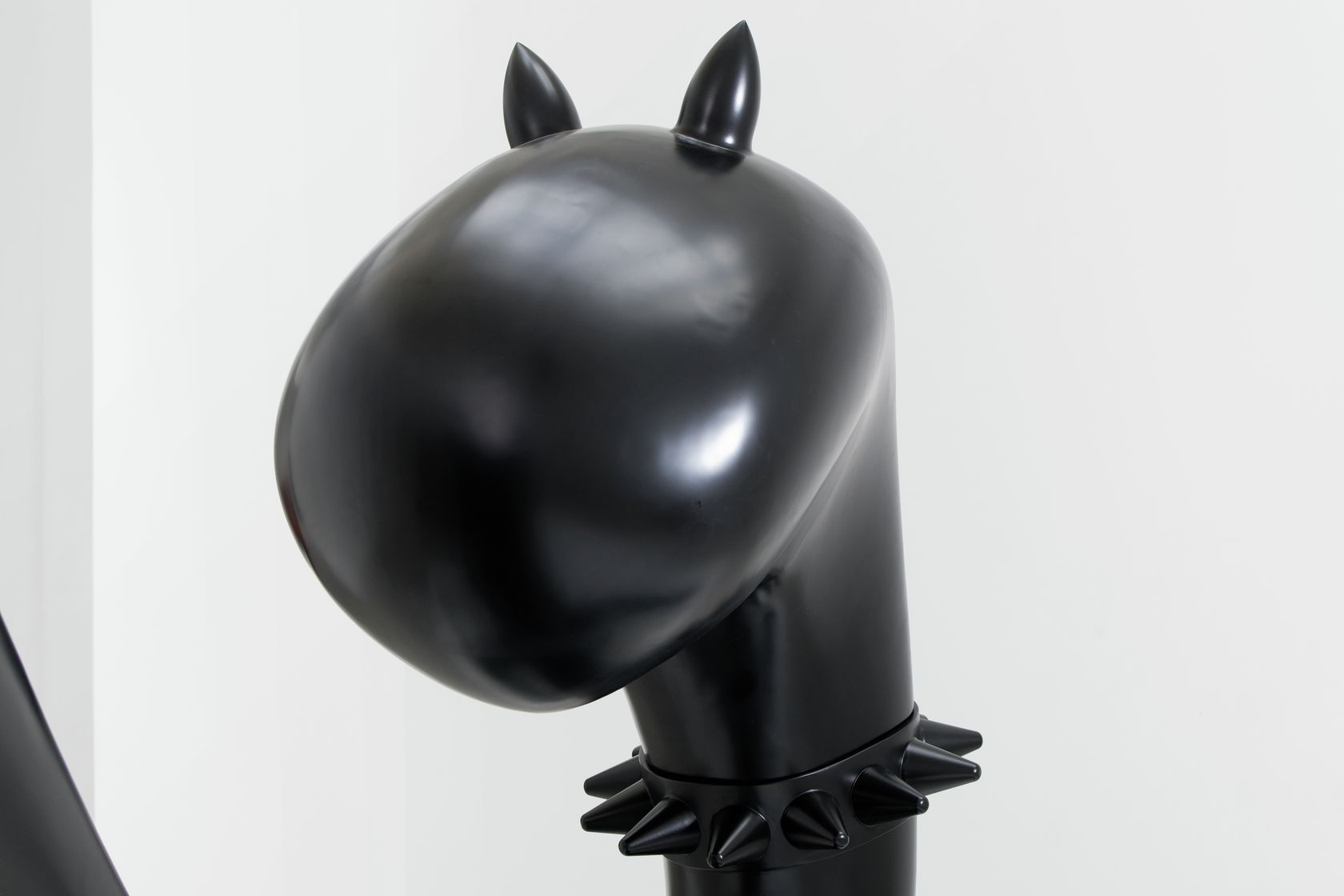
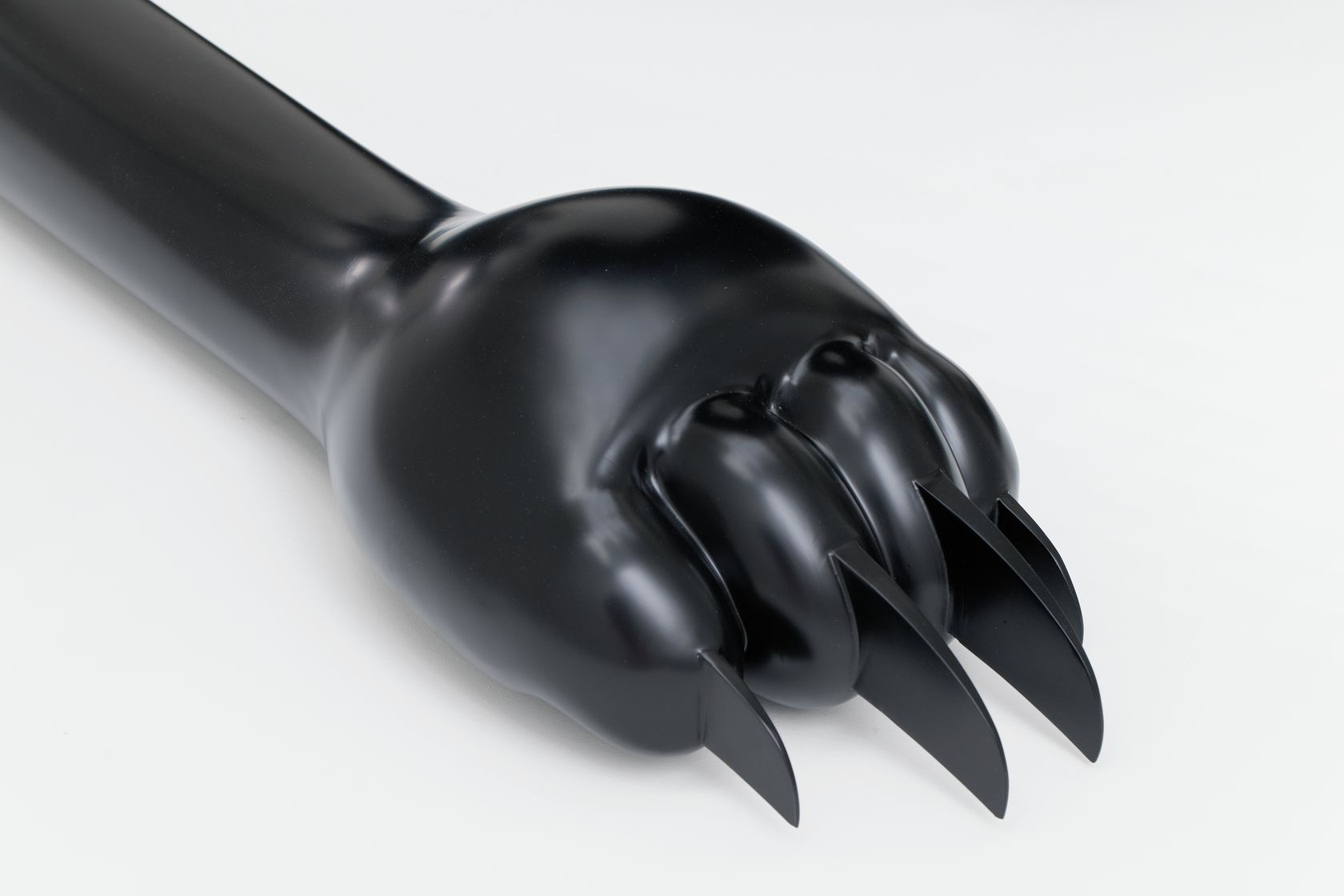
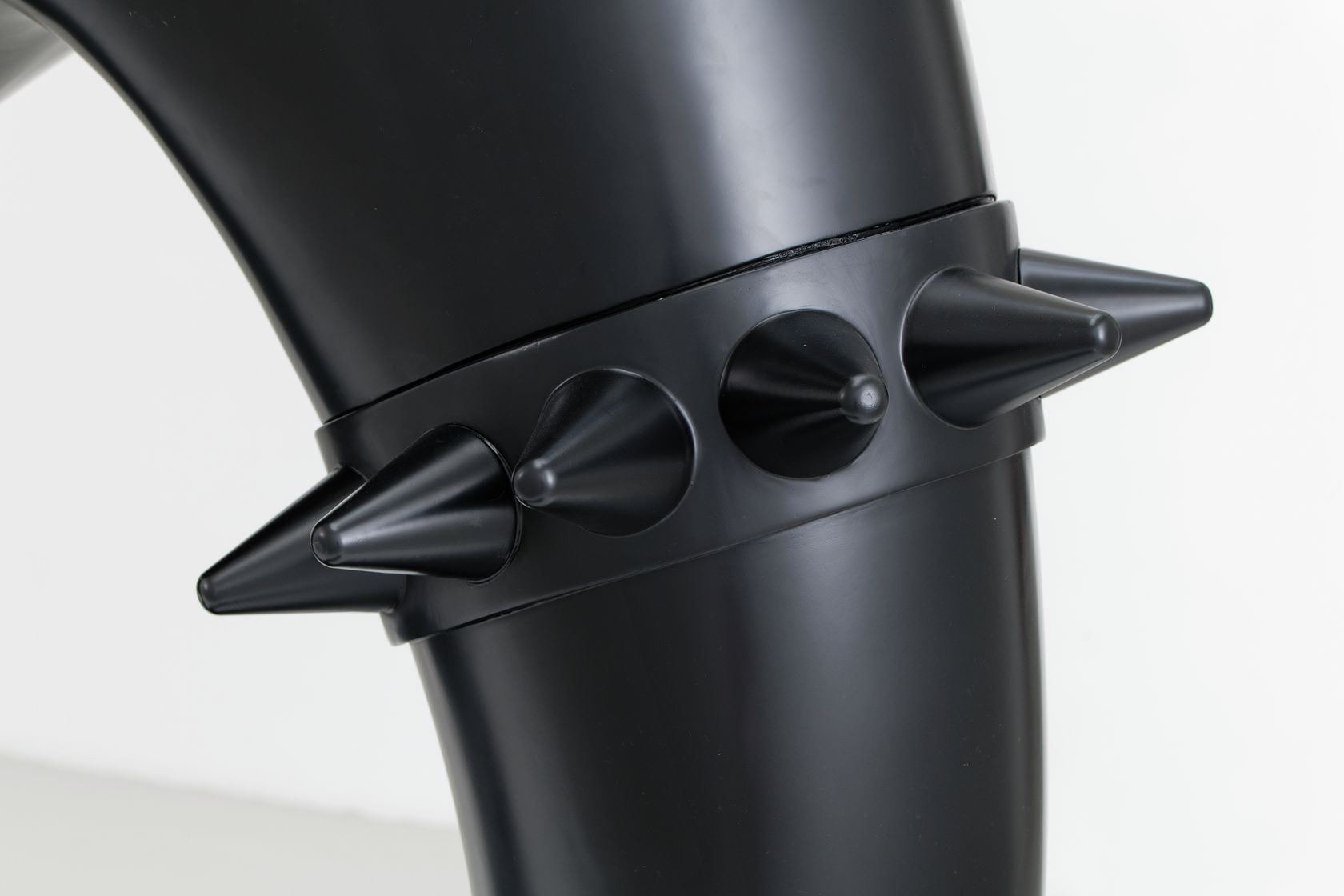
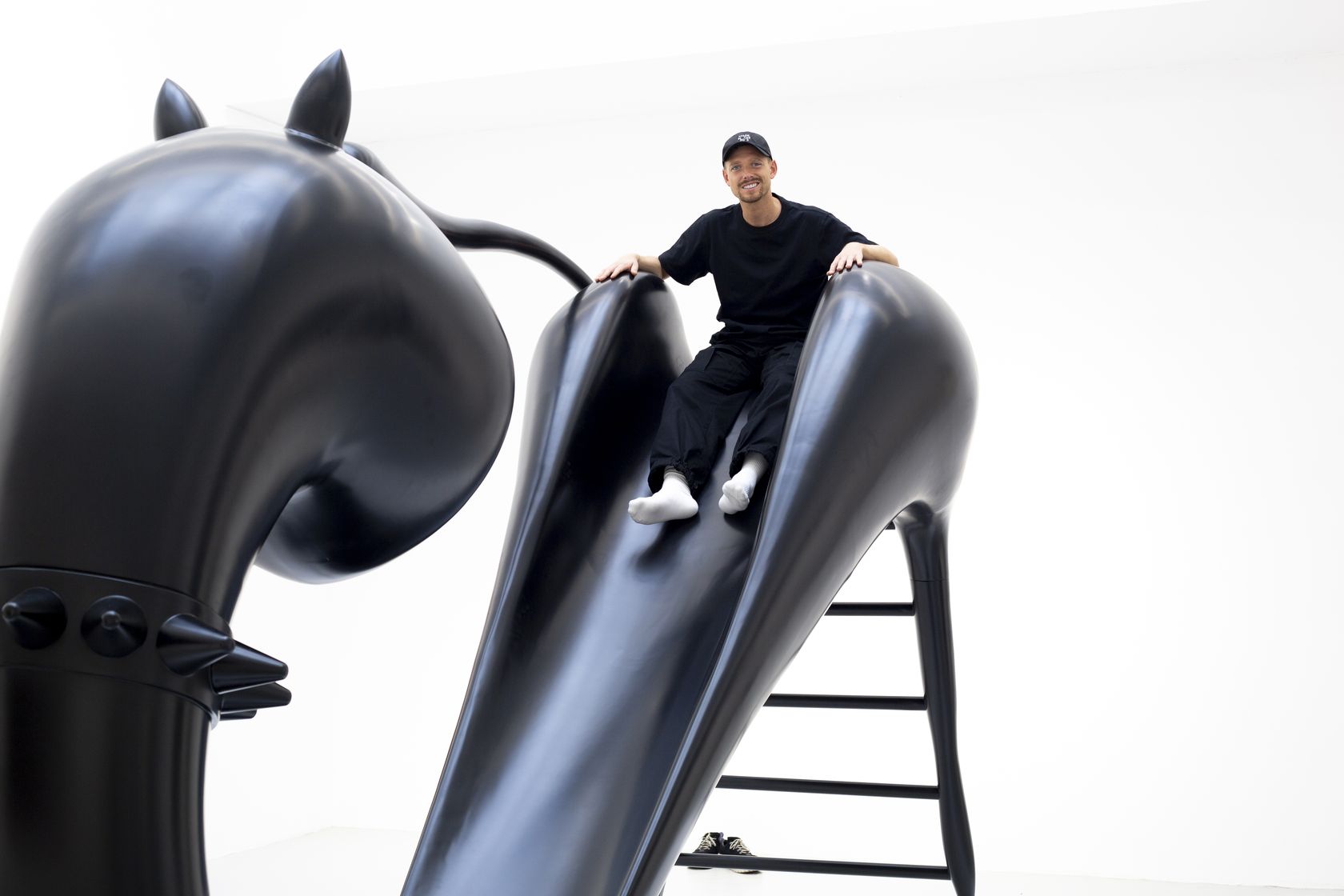
- Oli Epp
- Ninth Life , 2022
- Polyester resin painted
-

